

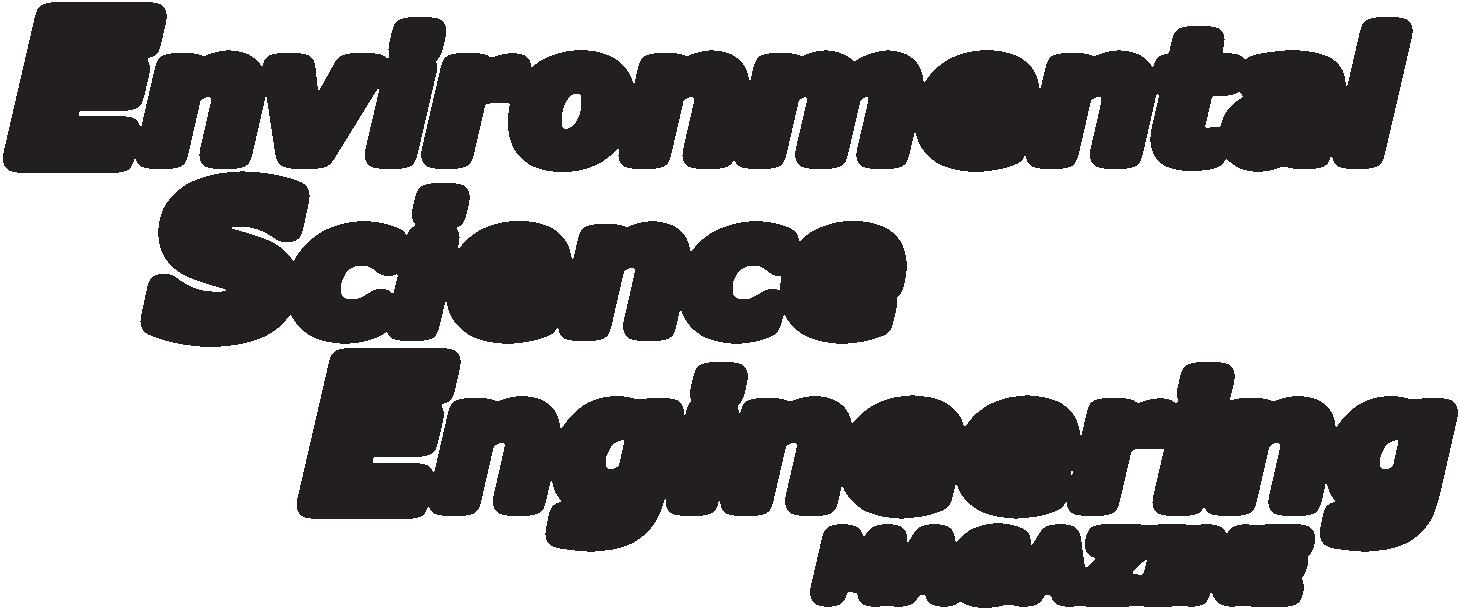

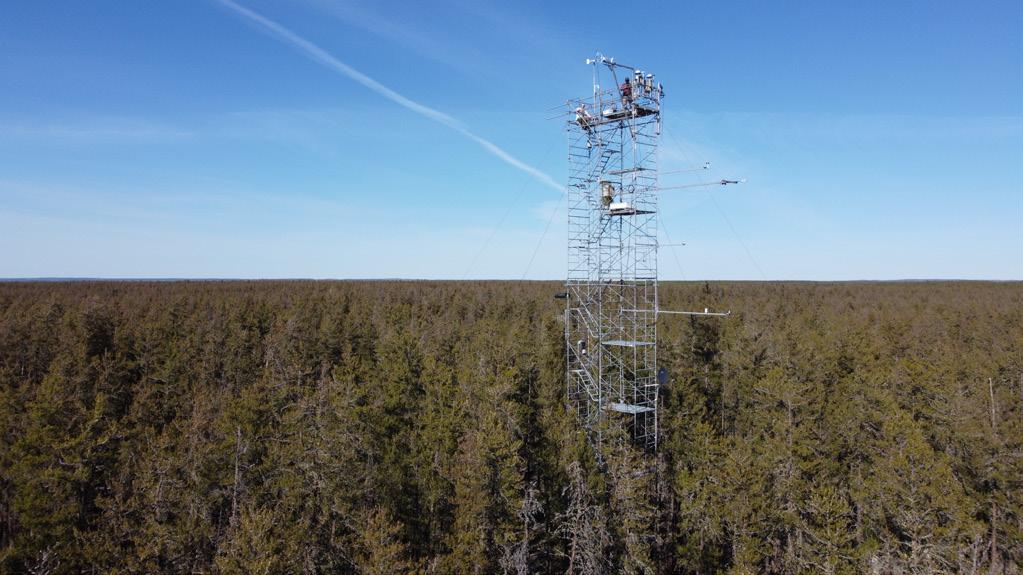

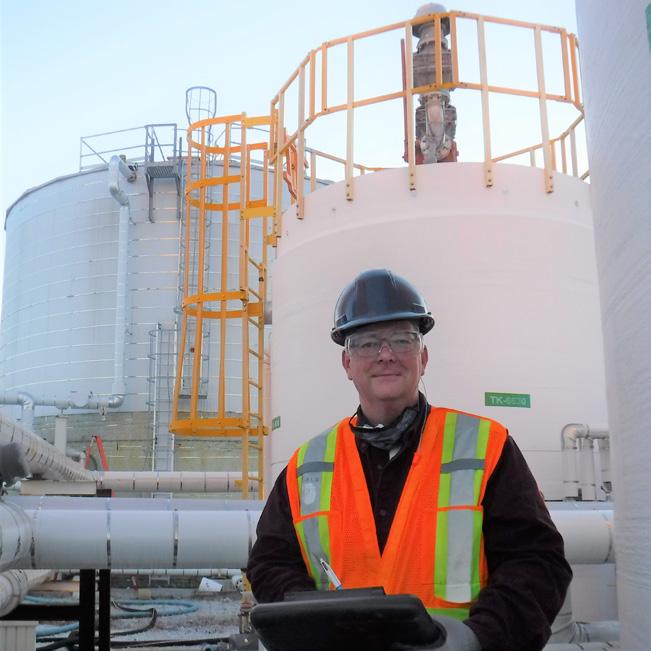
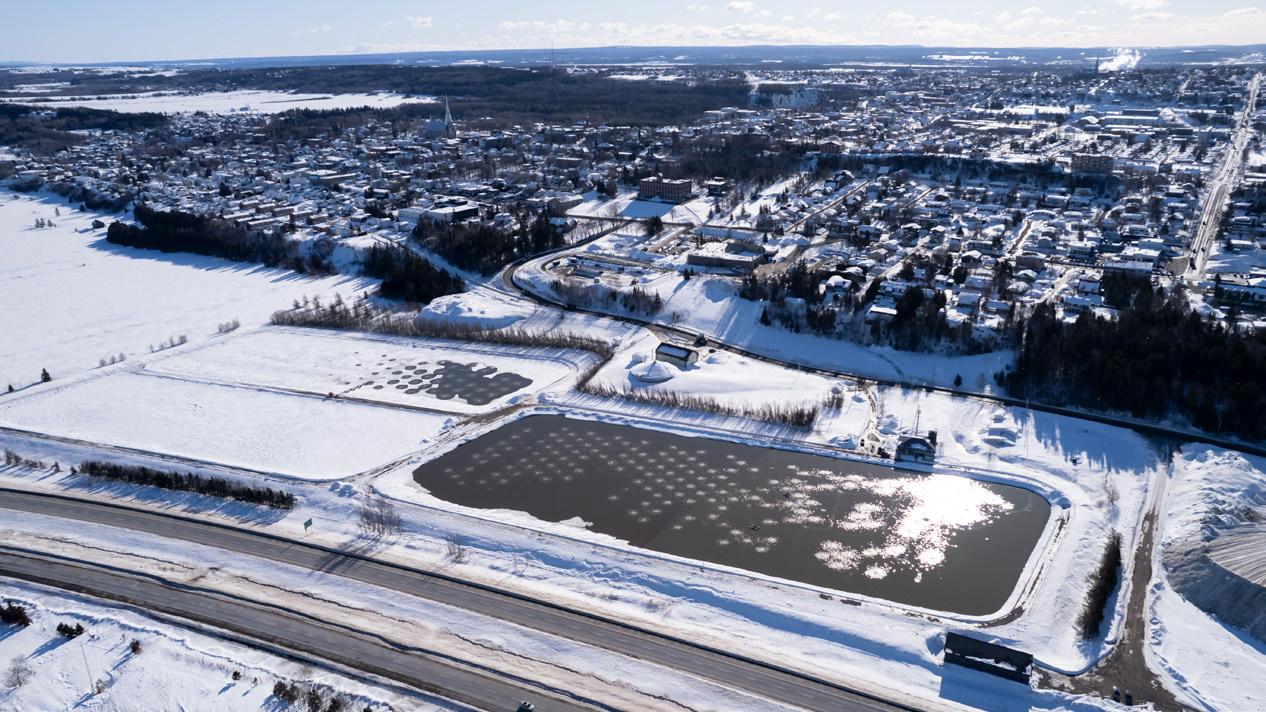





Reducing DOC levels to improve drinking water quality How to minimize the impact of problematic wastewaters Upgrading Rivière-du-Loup’s aerated wastewater treatment ponds ACADEMIC INSTITUTIONS AND TRAINING PROVIDERS ES&E ANNUAL GUIDE TO JUNE 2024 WWW.ESEMAG.COM @ESEMAG





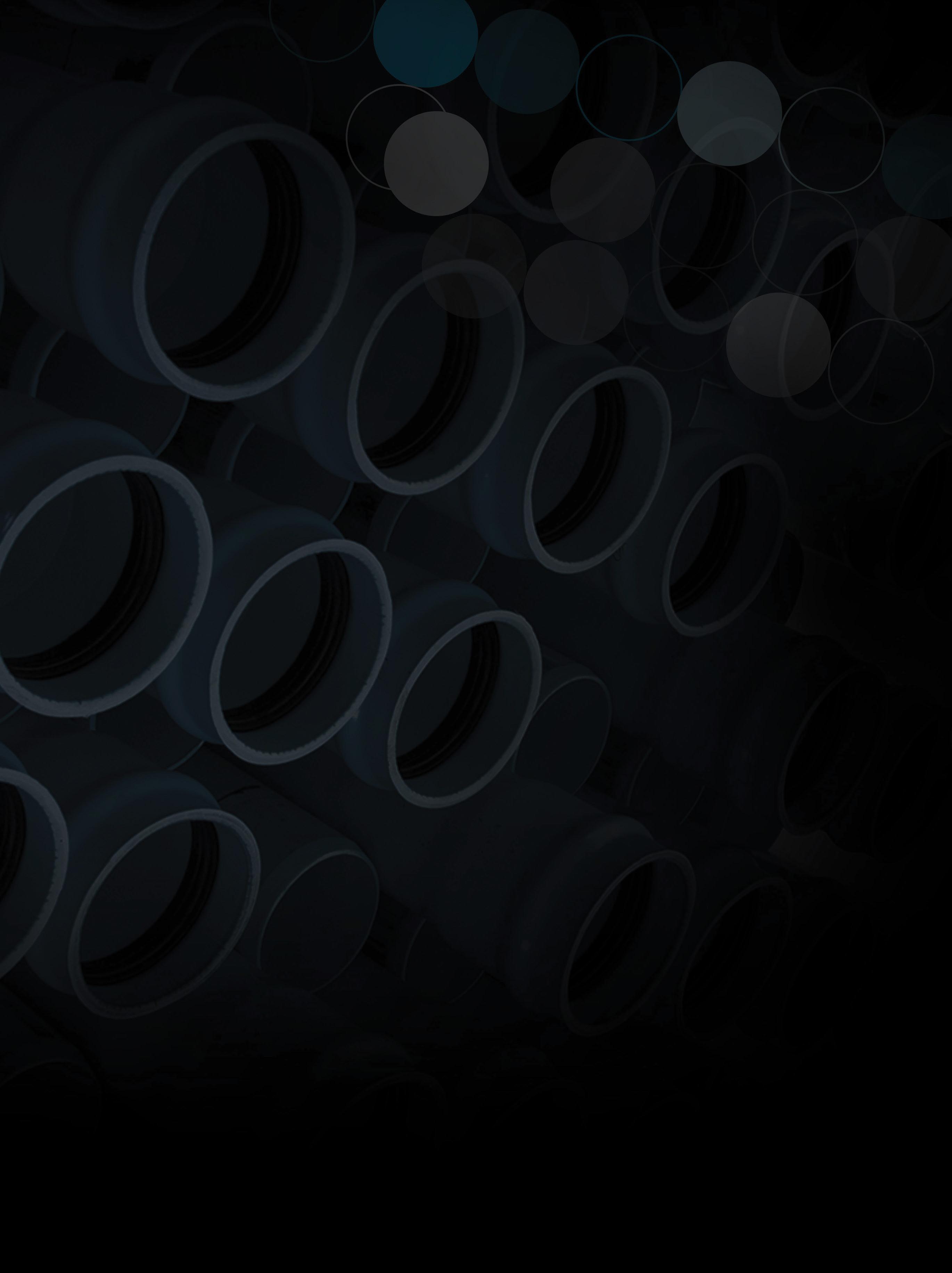
ipexna.com 1-866-473-9462 EXPLORE OUR SOLUTIONS Pipe, Valves & Fittings Systems to meet all Your Project Needs


ONLINE AND PORTABLE INSTRUMENTATION
Optical Fluorescence Dissolved Oxygen
Near Infra Red Total Suspended Solids

pH, ORP
Microwave Density
Ultrasonic Interface Level

Spectrophotometric Online
FLOWMETERING
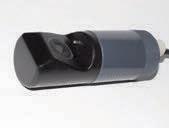

Multi Parameter Single – Dual – Multi-Channel-Wireless

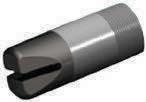
Ultrasonic Doppler – Transit Time
Insertion/Immersion/Clamp-On
Venture/Flume Partially Filled Conduit
Non Contact Radar
WASTEWATER SAMPLERS

Indoor or Outdoor
Refrigerated or Non-Refrigerated

Portable or Stationary
SEPTAGE RECEIVING SYSTEMS
Integrated Billing System
Solutions For WAS TEWATER TREATMENT















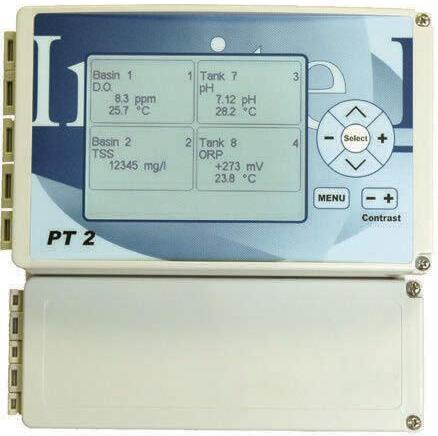




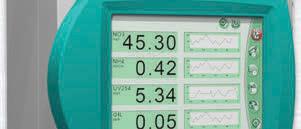


Fully Automated Control and Data Collection









ADDITIONAL SOLUTIONS FOR: Flow – Level – System Integration – Field Service Mississauga, Ontario Montreal, Québec 800-595-0514 www.cancoppas.com controls@cancoppas.com
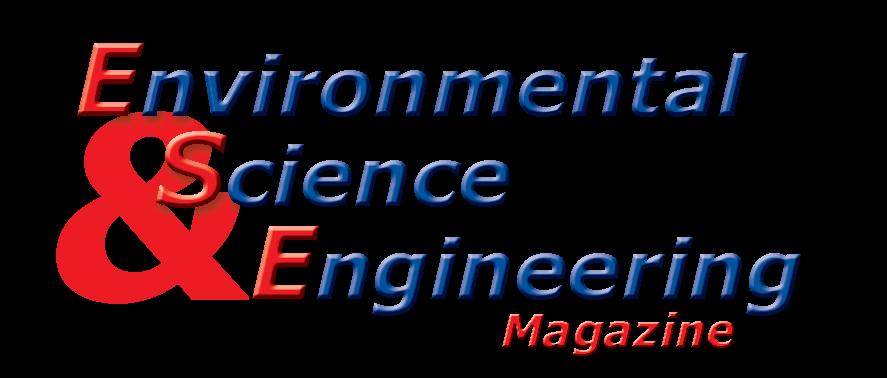
Editor and Publisher STEVE DAVEY steve@esemag.com
Managing Editor PETER DAVEY peter@esemag.com
Contributing Editor DAVID NESSETH david@esemag.com
Sales Director PENNY DAVEY penny@esemag.com
Sales Representative DENISE SIMPSON denise@esemag.com
Accounting SANDRA DAVEY sandra@esemag.com
Design & Production MIGUEL AGAWIN miguel@esemag.com
Circulation BRIAN GILLETT ese@mysubscription.ca
TECHNICAL ADVISORY BOARD
Archis Ambulkar, OCT Water Quality Academy
Gary Burrows, City of London
Patrick Coleman, Stantec
Bill De Angelis, Metrolinx
Mohammed Elenany, Urban Systems
William Fernandes, City of Toronto
Marie Meunier, John Meunier Inc., Québec
Tony Petrucci, Black & Veatch
Environmental Science & Engineering
is a bi‑monthly business publication of Environmental Science & Engineering Publications Inc. An all Canadian publication, ES&E provides authoritative editorial coverage of Canada’s municipal and industrial environmental control systems and drinking water treatment and distribution.
Readers include consulting engineers, industrial plant managers and engineers, key municipal, provincial and federal environmental officials, water and wastewater plant operators and contractors.
Information contained in ES&E has been compiled from sources believed to be correct. ES&E cannot be responsible for the accuracy of articles or other editorial matter. Articles in this magazine are intended to provide information rather than give legal or other professional advice.
Canadian Publications Mail Sales Second Class Mail
Product Agreement No. 40065446 Registration No. 7750
Subscription Changes?
Please email reader subscription changes to ese@mysubscription.ca, or call 705-502-0024
Advertising Penny Davey Sales Director 416 807 3812, penny@esemag.com

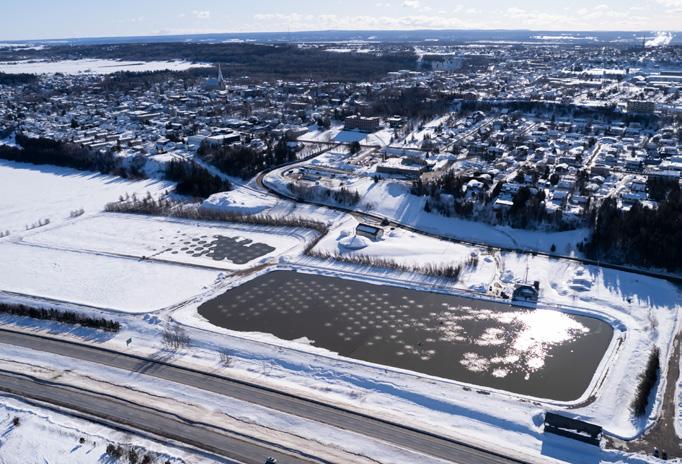
FEATURES
6 Toronto to host IWA World Water Congress & Exhibition this summer
8 Cruise lines and ports using shoreside electricity to cut emissions
9 Ottawa hosts global treaty meetings to fight plastic pollution
10 Ice jam monitoring improves flood forecasting and response times
12 Upgrading Rivière-du-Loup’s aerated wastewater treatment ponds
14 Pressure sewer systems can cut new residential development costs
18 Capacitance is a reliable and costeffective method to monitor for industrial spills and leaks
20 Canada invests $15M to support biomanufacturing supply chain for wastewater surveillance
22 How a rural Alberta water treatment plant reduced DOC and improved water quality
26 Toronto pauses stormwater charge consultations
27 Montreal’s newest sponge park will retain over a million litres of rainwater
28 Concordia researchers analyze alternative factors for water main breaks
38 How to minimize the impact of problematic wastewater from upstream distilleries and industry
40 BCWWA’s annual conference & tradeshow returns to Whistler
42 Study shows CAC can be injected to prevent PFAS-contaminated groundwater from moving further
44 Buffer zone monitoring strategies to detect leachate in groundwater
48 Check valve installation considerations to maximize backflow prevention performance
50 Global Water Futures network connects nine universities
52 Walkerton Clean Water Centre offers hands-on water treatment training
53 University of Waterloo launches climate change diploma for graduate students
54 Dalhousie partners with Atlantic First Nations Water Authority
55 ES&E’s Annual Guide to Academic Institutions and Training Providers
62 Collingwood and New Tecumseth agree to move forward with WTP expansion
DEPARTMENTS
Denise Simpson Sales Representative 905 960 4064 denise@esemag.com
Environmental Science & Engineering
220 Industrial Pkwy. S., Unit 30 Aurora, Ontario L4G 3V6
Tel: (905)727 4666 www.esemag.com
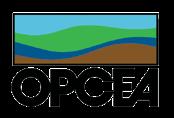


30 Effectively ensuring safety in biogas facilities
34 New funding showcases Ontario’s dedication to critical water infrastructure
36 Ensuring chemical compatibility in water treatment equipment
57 Professional Cards
58 Product Showcase
62 Ad Index
Cover photo credits: Caroline Aubry-Wake, University of Saskatchewan
Mark Ferguson, University of Saskatchewan University of Saskatchewan
Veolia Water Technologies Canada Azura Associates
June 2024 • Vol. 37 No. 3 • ISSN-0835-605X www.esemag.com @ESEMAG Environmental Science and Engineering Magazine
4 | June 2024
CONTENTS
50 12

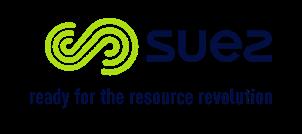

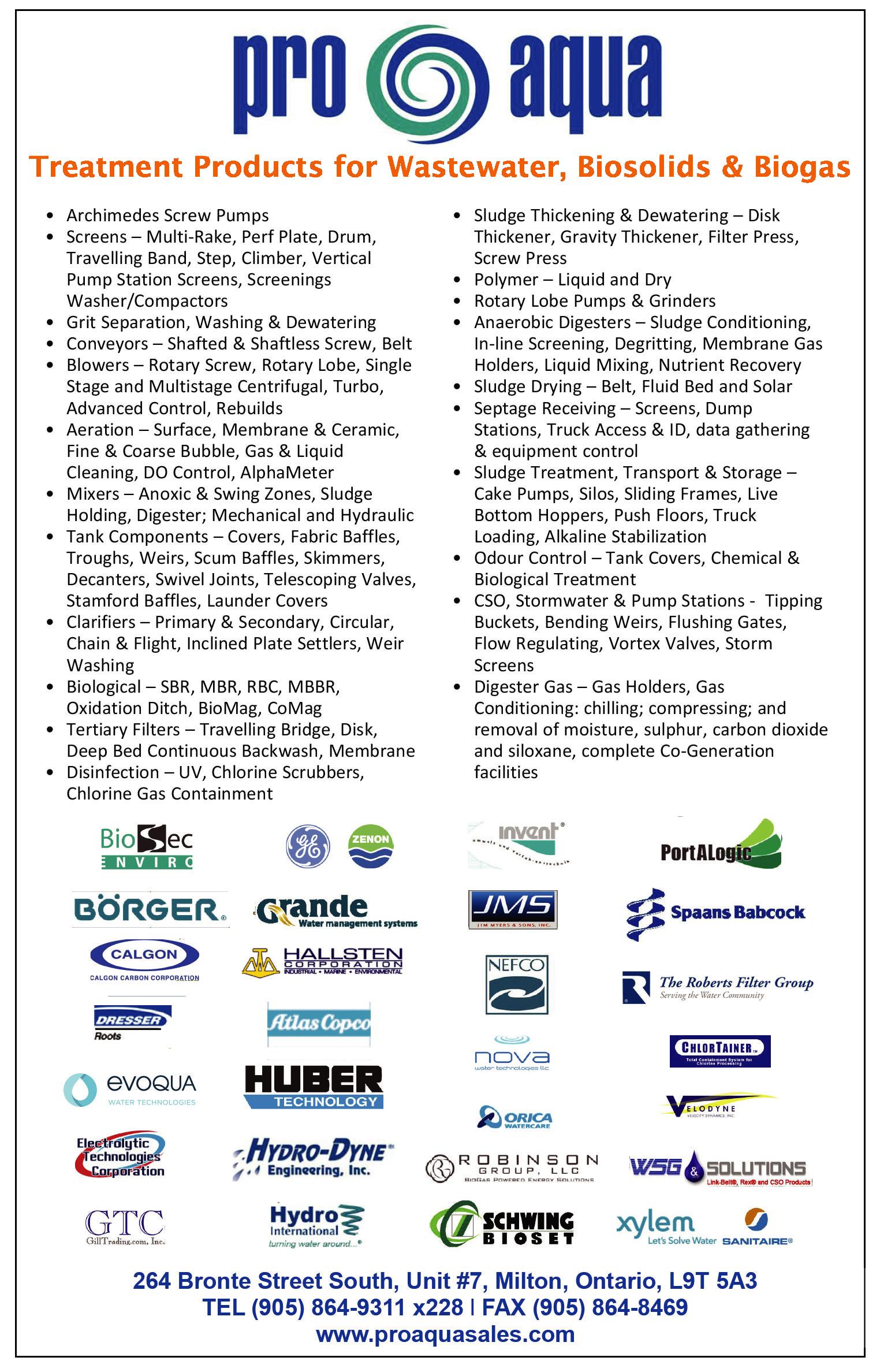





o mple te ra n g e o f ma rke t p ro du c t s. Le t u s sh ow yo u


Cleaning, DO Control, AlphaMeter
Mixers – Anoxic & Swing Zones, Sludge Holding, Digester; Mechanical, Hydraulic and Gas Bubble
Tank Components – Covers, Fabric Ba es, Troughs, Weirs, Scum Ba es, Skimmers, Decanters, Swivel Joints, Telescoping Valves, Density Current Ba es, Launder Covers, Watertight Doors
Primar y & Secondar y, Circur, Chain & Flight, Inclined Plate Settlers, Weir Washing
Biological – SBR, MBR, RBC, MBBR, MABR, Oxidation Ditch, BioMag, CoMag Polymer – Liquid and Dr y Systems
•
Rotary Lobe Pumps & Grinders
• Disinfection – UV, Ozone
• Tertiary Filters – Travelling Bridge, Disk, Membrane
• Sludge Thickening & Dewatering –Disk Thickener, Gravity Thickener, Filter Press, Screw Press, Centrifuge
• Anaerobic Digesters – Sludge Conditioning, In-line Screening, Degritting, Membrane Gas Holders, Liquid Mixing, Nutrient Recover y
• Sludge Drying – Belt, Fluid Bed and Solar
• Septage Receiving – Screens, Dump Stations, Truck Access & ID, data gathering & equipment control
• Sludge Treatment, Transport & Storage – Cake Pumps, Silos, Sliding Frames, Live Bottom Hoppers, Push Floors, Truck Loading, Alkaline Stabilization
• Odour Control – Tank Covers, Chemical & Biological Treatment, Activated Carbon
• – Stations Pump & Stormwater CSO, Tipping Buckets, Bending Weirs, Flushing Gates, Flow Regulating, Vor tex Valves, Storm Screens
• Digester Gas – Gas Holders, Gas Conditioning: chilling; compressing; and removal of moisture, sulphur, carbon dioxide and siloxane, complete Co-Generation facilities
t e wat e r, Biosolids & Bi o g a s
T: (905) 864-9311 F: (905) 864-8469 www.proaquasales.com 7-264 Bronte St. S., Milton, ON L9T 5A3 04 16
Toronto to host IWA’s 2024 World Water Congress & Exhibition
Last summer, at the invitation of Robert Haller, executive director of the Canadian Water and Wastewater Association, I had the pleasure of meeting several senior officials and staff members of the International Water Association (IWA). They were on a site visit to the Metro Toronto Convention Centre as part of the planning process for their 2024 World Water Congress & Exhibition, which is being held August 11 – 15.
Headquartered in the United Kingdom, IWA is the largest association for the global water sector, having members in 140 countries. The association was launched in its current identity in 2000, building on a 75-year heritage of connecting water professionals around the world. These include scientists, researchers, technology companies, water and wastewater utilities, and wider stakeholders involved in water management.
The IWA World Water Congress & Exhibition is the global event for water professionals covering the full water cycle. As the Congress rotates through cities and countries, each event has an extra emphasis on issues of specific interest to the region.
According to the Association’s website, the 2024 theme is “Shaping our Water Future”, and it will provide opportunities for participants to network and to share insights and experience on the latest trends in best practice, innovative technologies, and management approaches.
Haller explains that while this is an International Water Association event, it is being co-hosted by the Canadian Water and Wastewater Association (CWWA) and the Canadian Association on Water Quality (CAWQ). CWWA and CAWQ are the governing members of the IWA for Canada and work to bring a Canadian voice to the international world of water. They have also worked on the development of this event to ensure it is very relevant to North American participants.
“The Congress, with its massive technical program, is one of the most respected professional forums for our industry,” says Haller, adding that “this portion of the Congress is expected to attract over 4,000 registered delegates to participate in sessions, panels, workshops and forums.”
The technical program includes four full days of sessions highlighting research, innovation and utility leadership. The program includes a Utility Leaders Forum spread over three days and many more utility-relevant workshops. There are sessions focused on water services in Arctic regions, and a forum on “Indigenous Peoples and Water from a Global Perspective” is being worked on.
The exhibition portion of the event attracts innovation
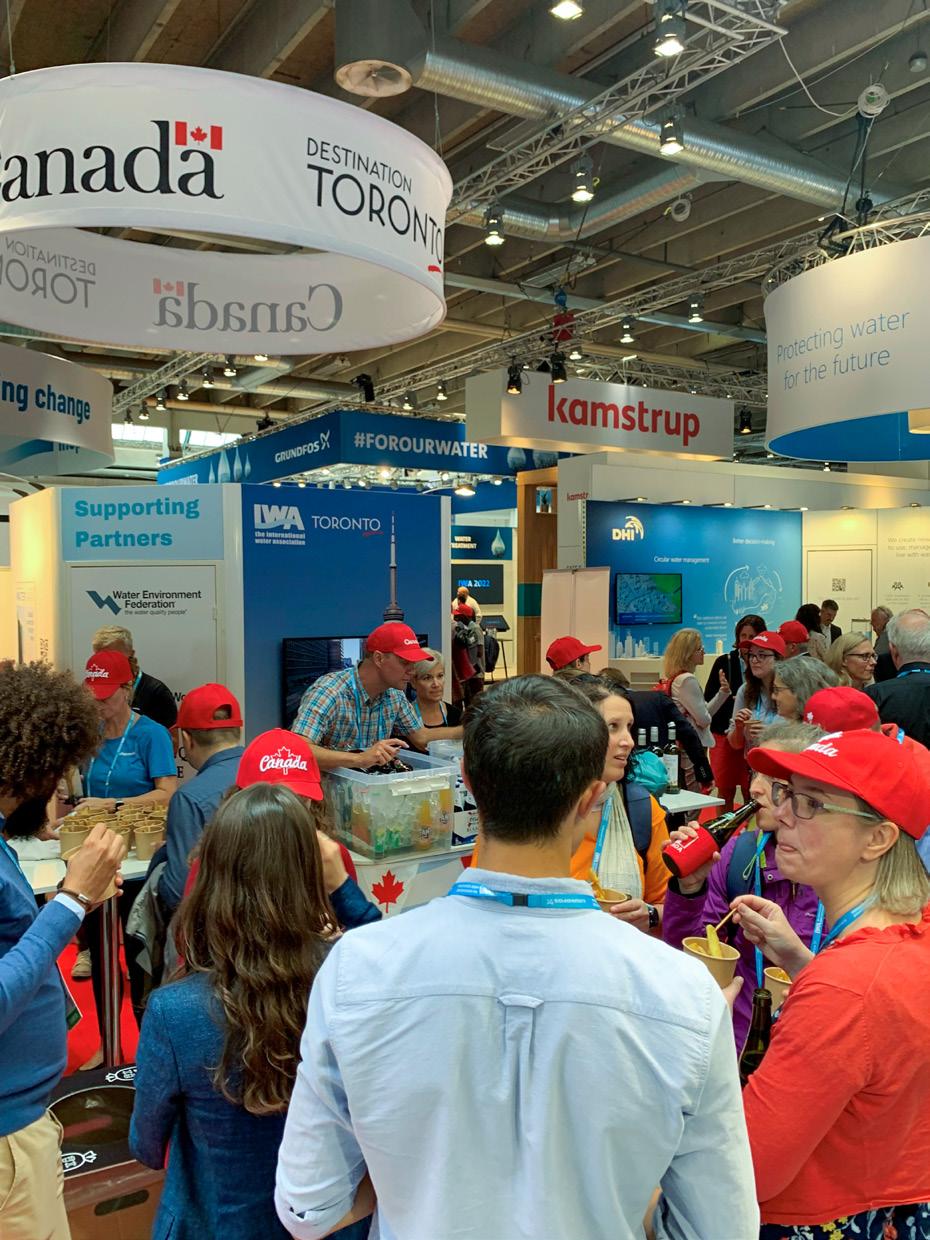
The exhibition will feature innovation and entrepreneurs from around the world and is expected to draw 6,000 participants.
and entrepreneurs from around the world. The exhibition floor is expected to draw another 6,000 participants. Half will be from North America and half will be global visitors. Visiting the exhibition is free for advance registrants.
Why is it being held in August? According to Haller, “this special event has the full support of both AWWA and WEF, so a time was chosen to be sufficient distance from both ACE and WEFTEC. But this is a very different event than those two. We don’t suggest you come to one or the other, but rather take advantage of this global event this year as a bonus.”
The last time IWA held this event in Canada was in 2010 and Montreal was the host city. I would encourage everyone to attend this year’s event in Toronto, as it will be a long time until it returns to Canada. For more information, visit www.worldwatercongress.org.

Steve Davey is the editor and publisher of ES&E Magazine. Please email any comments you may have to steve@esemag.com
6 | June 2024 EDITORIAL COMMENT BY STEVE DAVEY


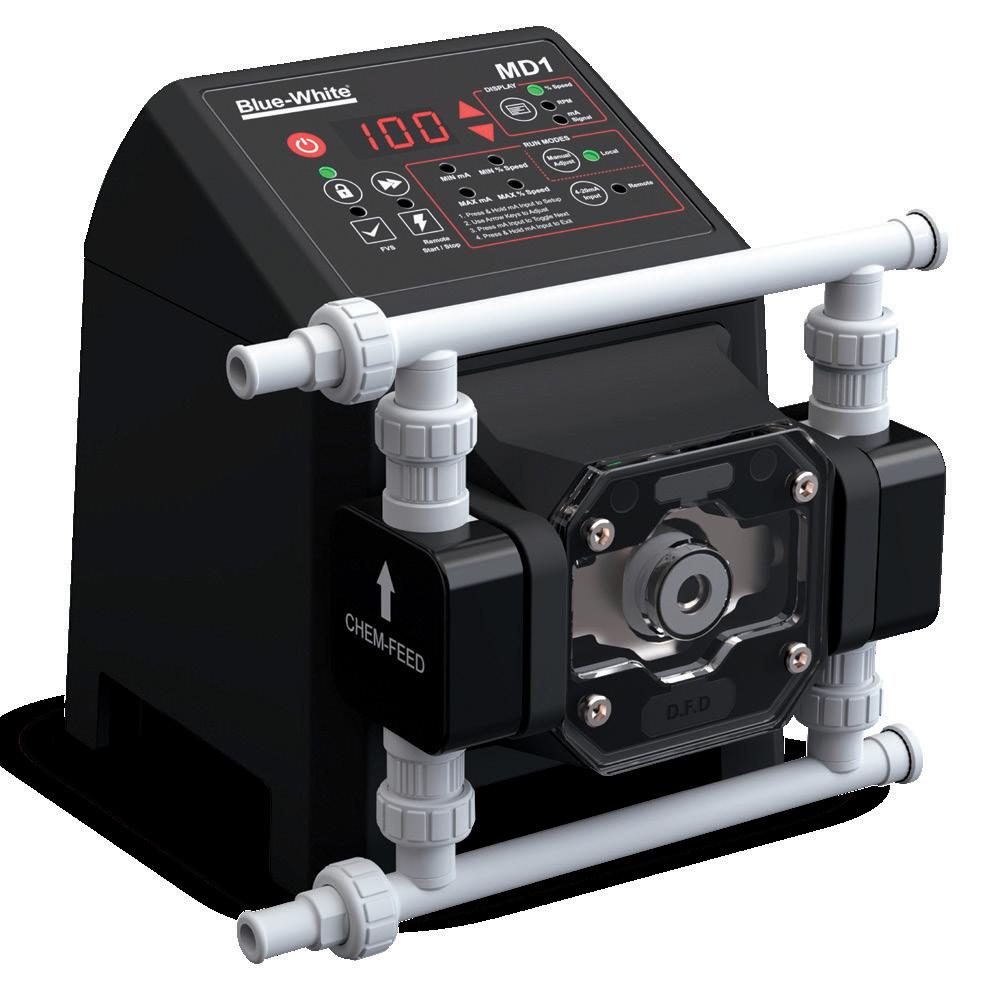

CHEM-FEED® MD1 Multi-Diaphragm Metering Pump CHEM-FEED® SKIDS One, Two, or Three Pump Complete Metering Systems FLEXFLO® M3 Peristaltic Metering Pump Learn more about Our Skids, M3, and MD1 at www.blue-white.com Fluid Metering Solutions Made Simple® Top Performance Solutions for Effective Chemical Dosing Quick Shipping, Easy Install, Fast Startup.
Cruise lines and ports using shore-side electricity to cut emissions
Recently, the United Nations International Maritime Organization and its participating maritime countries set their greenhouse gas (GHG) emissions strategy to achieve net zero “by or around” 2050. As a result, the shipping industry, including cruise lines, is adopting various strategies to achieve this ambitious goal, including new fuels, air scrubbers and shore-side electricity (SSE) systems.
One significant strategy being adopted by cruise lines and ports is SSE, also called “cold ironing” or shore power systems. According to some estimates, the industry can lower CO2 and other pollution emissions up to 98% by shutting down all on-board power generation from diesel engines and connecting to shore power supplied by the local utility.
Those additional pollutants include sulphur dioxide (SO2), nitrogen oxides (NOx) and particulate matter (PM). Overall CO2 reduction depends partially on the electricity sources of the port’s grid. If, for example, a port depends upon renewable energy sources such as wind, solar, or hydroelectric power, the GHG emissions reductions can be significant.
As a result, many cruise lines and ports are adopting the technology. Carnival Cruise Lines, for example, says that as part of its emission abatement program, 57% of its ships are fully equipped to leverage shore power technology, even though less than 5% of the ports it uses offer shore power connections. But the number of ports adopting the technology is growing.
The Cruise Line Industry Association indicates that 40% of its global members’ ships are set up to operate in SSE in 29 ports, which is up 20% year over year. And of new builds ordered between now and 2028, 98% are either planning to be fitted with SSE systems or be configured to add it in the future.
Adoption is expanding across the globe. The California Air Resources Board’s 2020 At-Berth Regulation is driving the expansion of shore power across

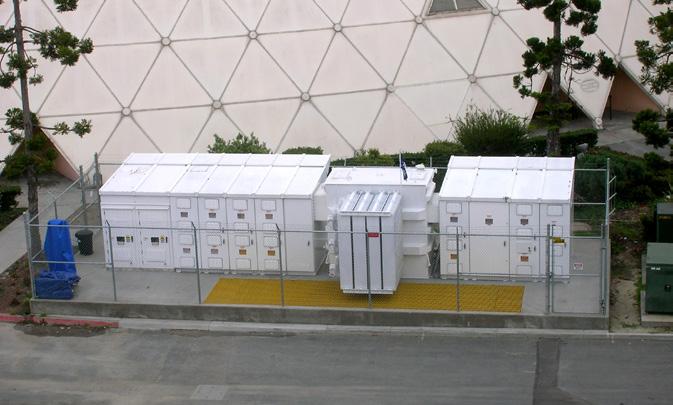
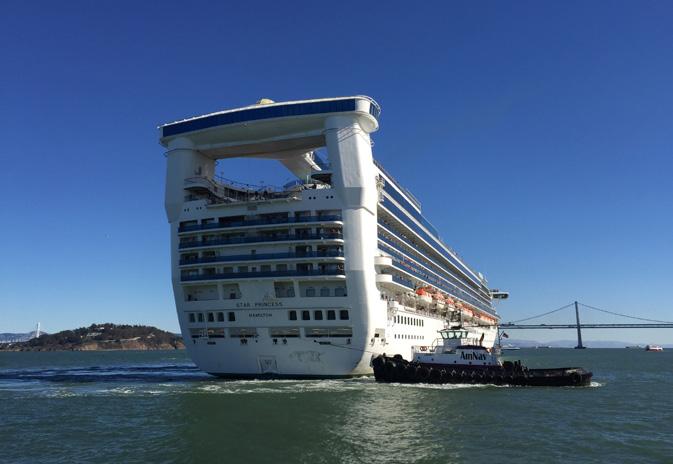
the state. International shore power standards for high-voltage systems are being implemented to make it easier for ports to choose the appropriate equipment.
One of the technical challenges, however, is determining exactly how much emissions are being reduced by SSE. Today, innovators in the design of standalone shore-to-ship power solutions like Kingston, WA-based Watts Marine are addressing that issue with improved reporting systems based on information gathered from the underlying power protection system components.
Watts Marine has installed its shore power system at ports in Seattle, WA; San Diego, CA; San Francisco, CA; Halifax, NS; Vancouver, BC; Brooklyn, NY; and Long Beach, CA. An estimated 500 ships connect to their shoreside equipment each year.
The company’s patented custom shore power system consists of proprietary equipment designed specifically for the cruise ship industry. It includes dual-voltage electrical service equipment, cus-
tom-developed electrical cable handling equipment, and customized electronic monitoring and control equipment.
Once a cruise ship or ocean transport vessel equipped to receive shore power docks in port, an operator selects the ship to be connected from a database that is integrated into the customized automation system which determines the proper operating parameters. To make the connection, five flexible power and control cables are lifted by a specially designed cable positioning device and connected to the ship’s electrical system through marine standard plugs and sockets. A shore-side operator then closes the breaker and power is supplied to the vessel.
For more information visit www.novatechautomation.com
Environmental Science & Engineering Magazine 8 | June 2024 GHG REDUCTION
Left: The patented custom shore power system consists of proprietary equipment designed specifically for the cruise ship industry. Right-top: Watts Marine utilizes information collected by NovaTech’s Orion automation system to calculate the total emissions reduction across all main pollutants while a ship is connected to shore power. Right-bottom: One of Watts Marine’s cruise ships.
Ottawa hosts global treaty meetings to fight plastic pollution
By ES&E Staff
Nine small and medium sized Canadian companies will each receive up to $150,000 to develop sustainable and cost-effective solutions to help better reuse plastics or improve the end-of-life management of plastic film for consumer items.
The funding comes as Canada welcomes the world to Ottawa for the fourth session of the Intergovernmental Negotiating Committee on Plastic Pollution, which aims to develop innovative solutions for plastic waste in partnership with World Wide Fund for Nature (WWF) International.
“A whole-of-society approach for the development and implementation of a global deal to end plastic pollution is crucial,” Canada’s Minister of Environment and Climate Change, Steven Guilbeault, announced in a statement. “This means engaging with all levels of government as well as the private sector, non-governmental partners, the science community and Indigenous partners to ensure that all voices and perspectives are considered.”
Federal data from the Ministry of Environment and Climate Change estimates that more than four million tonnes of plastic ends up as waste each year, and less than one-tenth of that is recycled. In March 2022, 175 nations agreed to make the first legally-binding treaty on plastics pollution, including in the oceans, by the end of 2024.
The new $3.3 million in funding to support Canadian organizations that are developing innovative solutions to address plastic pollution comes through the Canadian Plastics Innovation Challenges. The funding is targeted towards sectors known to generate some of the greatest quantities of plastic waste and pollution, and may have technological gaps with opportunity for innovation.
Among the phase one recipients of the new funding are:
• Circulr Inc., based in Toronto, has created modular reverse vending machines for the collection of reusable goods.
• MLVX Technologies Inc., based in Vancouver, has created an AI-powered hyperspectral system for sorting plastic film and flexible packaging.
• Les emballages PickPack Inc., based in Granby, Quebec, has developed rigid and reusable packaging for the delivery of fragile e-commerce products, as well as a system for measuring the impacts of reuse and circular logistics.
• Sparta Manufacturing Inc., based in Notre-Dame, New Brunswick, is working on the development of an accelerated ballistic separator for improved sorting of plastic film.
Environment and Climate Change Canada is contributing an additional $2 million in funding for advancing a circular economy for plastics in Canada toward 12 projects for organizations to develop solutions to address challenges.
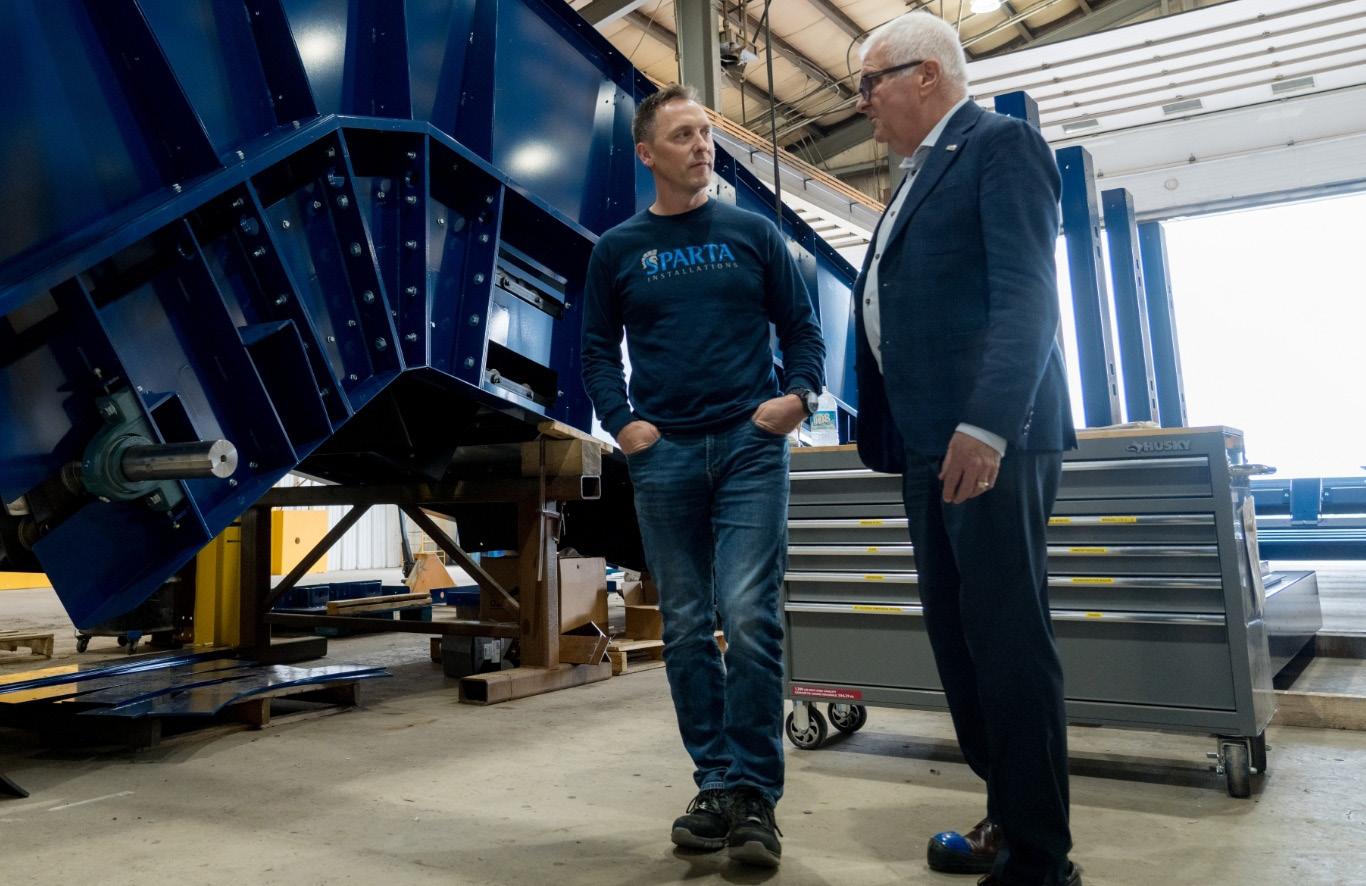


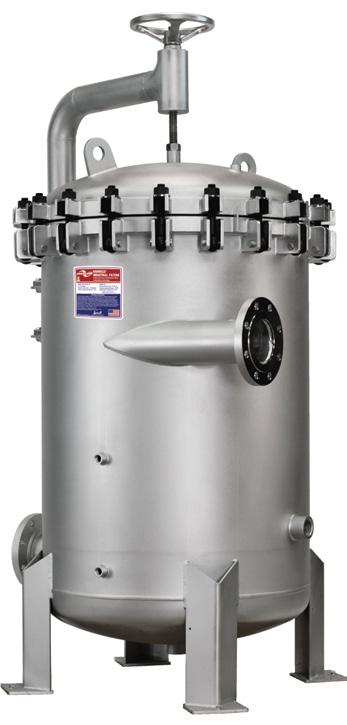

 Sparta Manufacturing Inc. President Bruno Lagacé tours the company’s manufacturing facility with New Brunswick’s Minister responsible for Economic Development and Small Business, Greg Turner.
Sparta Manufacturing Inc. President Bruno Lagacé tours the company’s manufacturing facility with New Brunswick’s Minister responsible for Economic Development and Small Business, Greg Turner.
June 2024 | 9 www.esemag.com @ESEMAG PLASTIC POLLUTION 800-327-3248 sales@harmsco.com www.harmsco.com Learn more about America’s most trusted LT2 Solutions Today! Approved installations in the US and Canada! Stainless Steel Housing 3.6-log cyst reduction 6,056 lpm LT2 Flow Rate Save up to 20% Energy GWUDI / Reclaimed water The premium choice for LT2 installations across the US and Canada Don’t Settle for Less than the Best #1 MostTrusted LT2 Filtration
River ice jam monitoring improves forecasting and response times
By Katy Curtis
Every river engineering project requires piecing together data to form a clear picture of a site’s unique characteristics. In remote, and sometimes not so remote locations, an absence of river data requires getting to know the site in more creative ways. This creativity was required for a project in the Town of Golden, British Columbia, where the team at Matrix Solutions was consulted to design a river ice monitoring system.
Ice jams in Golden are highly dynamic and can cause water levels to rise by several metres in a few hours. In the past these events threatened critical infrastructure in the town, such as dikes and the Highway 95 bridges, and caused winter flooding. The ice jams initiate in a rugged upstream canyon that is generally inaccessible except by railway and helicopter observation, so ice conditions in the canyon are usually unknown –meaning ice jams have historically happened without warning.
The intent of the ice monitoring system was to bring greater awareness and possible predictive tools about when an ice jam may be coming, allowing for improved forecasting and response.
FILLING IN THE HISTORICAL DATA GAPS
To inform the design of the system, Matrix Solutions set out in 2017 to collect as much data as possible about the history of ice jams and flooding in Golden. The team had been working on the Kicking Horse River for almost 20 years at that point, but many mysteries still remained about the ice processes along the river. These initial studies were funded by Public Safety Canada, Emergency Management British Columbia, the Columbia Basin Trust, and the Town of Golden.
The Golden Museum provided a wealth of historical information, including photographs, maps, survey plans, and newspaper articles with mentions of ice jams dating back more than 110 years. News articles reported on ice jams approximately every six years, which could have been lower than actual ice jam activity, since only more extreme events would have made the press.
Speaking to local historians and long-term residents filled in other pieces, including pointing to a potential connection between reduced threat of ice jam events following river dredging. Matrix Solutions cross-referenced these anecdotal reports with dredging approvals dating back to 1979. Data from the Water Survey of Canada (river discharge, water level, freeze-up and break-up dates) and Environment Canada (temperatures) helped fill in other clues about the Kicking Horse River and the surrounding area.
In addition, the town provided more than 30 years of historical cross-sectional data from the river. Since the turn of the century, the Matrix Solutions team has had the opportunity to conduct numerous site visits, capture site photographs, and

collect technical data from river surveys for hydraulic modelling and sedimentation studies.
Overlapping each data source provided engineers and the town with a greater degree of clarity about the behaviour of the Kicking Horse River and ice conditions. This led to an effective design for the monitoring system.
BETTER FORECASTING AND RESPONSE OUTCOMES
In 2019, the river ice monitoring system was designed and installed with funding from the Union of BC Municipalities. The monitoring system includes cameras for visual and timelapse monitoring, pressure transducers to monitor water and ice levels, and a temperature gauge to measure river temperature.
The monitoring system was accompanied by a detailed flow chart, developed in conjunction with key stakeholders, to guide response actions when various triggers are present. Triggers include conditions in the canyon and at the Highway 95 bridges, water and atmospheric temperatures, and time of year.
Data from the monitoring system and this decision matrix are being used to help the British Columbia Ministry of Transportation and Infrastructure and the Town of Golden more effectively assess the risk of ice jams; and to calibrate response procedures when there is an ice jam event. Data is also being used to verify engineering design levels for design and upgrade of town infrastructure.
Katy Curtis is with Matrix Solutions Inc., a Montrose Environmental Company. For more information, email: info@matrix-solutions.com
Ice jam conditions in 2014 at Kicking Horse pedestrian bridge.
Credit: Louise Rande
Environmental Science & Engineering Magazine 10 | June 2024 STORMWATER


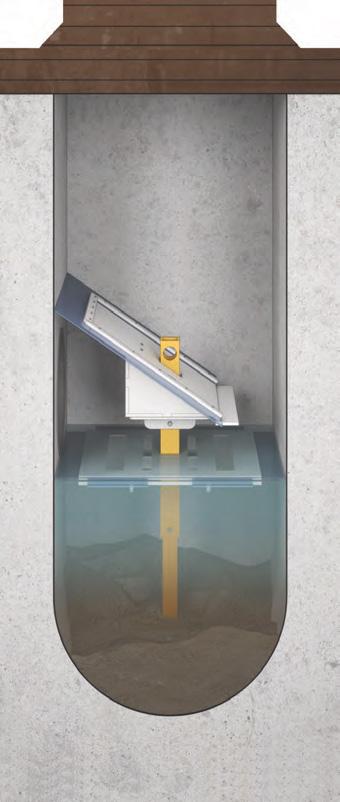




Upgrading Rivière-du-Loup’s aerated wastewater treatment ponds
By Marc-André Desjardins, Robert Lafond, Genevieve Pigeon and Yves Comeau
In 2016, the City of Rivière-du-Loup in Quebec embarked on a bold and innovative journey to upgrade its water reclamation facility (WRF).
The WRF, which uses aerated ponds for wastewater treatment, was initially commissioned in 1997 to serve a population of around 15,000 inhabitants. However, as the city grew, so did the demands on the WRF, necessitating an increase in its treatment capacity.
The city’s initial plan was to install a moving bed biofilm reactor (MBBR) with suspended packing, upstream of the ponds. However, the high costs of the bids received led to the cancellation of this call for tenders. Undeterred, the city returned to the drawing board in 2016, this time inviting bidders to propose innovative and economically advantageous solutions. The city was willing to support the project authorization process of the successful bidder,
even setting aside a significant amount to cover the costs of the ministerial authorization process.
The city’s 2016 call for tenders set the new design flow rate of the WRF at 31,500 m³/d, which was almost double its existing capacity.
The city adopted a two-envelope formula with technical proposal and price provided separately. Among the evaluation criteria of the technical proposal, the “innovation” criterion accounted for no less than 25%. A “sustainable development” criterion worth 10% was also considered, with the city wanting the proposed solution to meet its requirements in this area with a minimized carbon footprint and optimal energy efficiency.
The city awarded the project execution contract to a group with Veolia as technology provider and designer and AXOR Experts-Conseils (now FNX-INNOV) as engineering firm, for a total
cost of approximately $3.6 million before taxes. The project team proposed by the group also provided for the collaboration of Polytechnique Montréal as scientific guarantor.
The solution put forward by the group was to convert the first cell of pond #1 (pond #1A) into a completely mixed pond by adding directional surface propeller aerators with the objective of reducing soluble carbonaceous biochemical oxygen demand (sCBOD) contained in raw water. To compensate for the hydraulic retention time in the subsequent ponds being too short, the group proposed adding a “goalkeeper” after the ponds in the form of a ballasted flocculation clarifier of the Actiflo® type.
Performance tests carried out as part of this project made it possible to validate the ability of the Actiflo clarifier to comply with normative requirements, which was the anticipated result follow-
Environmental Science & Engineering Magazine 12 | June 2024 WASTEWATER
Rivière-du-Loup’s water reclamation facility, which uses aerated ponds for wastewater treatment, was initially commissioned in 1997.
ing modelling carried out during the authorization process.
This highlights the potential of adding tertiary treatment to the outlet of aerated ponds in order to increase their capacity to the extent that sCBOD has been sufficiently reduced beforehand, which is generally the case in ponds.
Moreover, the project underscores the potential of modelling and performance testing in the development and implementation of innovative solutions.
The group used a combination of simulation models to demonstrate the treatment capacity of the proposed solution.
This was followed by performance tests, which validated the ability of the Actiflo clarifier to comply with normative requirements. This approach not only provided assurance of the solution’s effectiveness but also contributed to a better understanding of the BOD removal mechanisms in ponds.
Rivière-du-Loup’s decision to invite bidders to propose innovative solutions, rather than sticking to conventional design guidelines, opened the door to a solution that not only met the city’s needs but also offered a cost-effective alternative to the initially proposed MBBR.
The project also highlighted the importance of collaboration in achieving innovative solutions. The successful execution of the project was the result of a collaborative effort. Each party brought their unique expertise and perspective to the table, contributing to the development of a solution that was both innovative and effective.
Furthermore, the project demonstrated the potential of tertiary treatment as a means of increasing the capacity of aerated ponds. By adding the Actiflo clarifier to the outlet of the ponds, the group was able to significantly increase the treatment capacity of the WRF, while also ensuring compliance with normative requirements.
This approach could offer a viable solu tion for other municipalities facing simi lar challenges, particularly those with lim ited space for additional ponds.
The success of the Rivière-du-Loup project offers valuable insights and les sons for other municipalities and enti ties looking to upgrade their wastewater treatment facilities. It underscores the importance of being open to innova
By adding the Actiflo clarifier to the outlet of the ponds, the group was able to significantly increase the treatment capacity of the water reclamation facility, while also ensuring compliance with normative requirements.
tion and the potential of unconventional solutions.
The city’s decision to include a “sustainable development” criterion in its call for tenders reflects a growing recognition of the need to balance economic, social, and environmental considerations in the pursuit of development. The solution proposed by the group not only met the city’s needs in terms of increased treatment capacity, but also aligned with its sustainability goals, a minimized carbon footprint, and optimal energy efficiency.
Marc-André Desjardins is with FNX-INNOV. Email: mdesjardins@fnx-innov.com
Robert Lafond is with Veolia Water Technologies Canada. Email: robert.lafond@veolia.com
Genevieve Pigeon is with the City of Rivière-du-Loup. Email: genevieve.pigeon@villerdl.ca
Yves Comeau is with Polytechnique Montreal. Email: yves.comeau@polymtl.ca

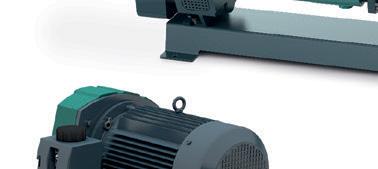

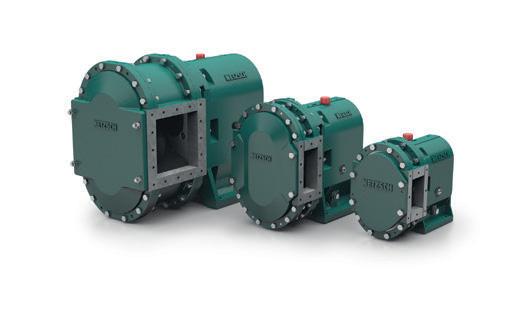






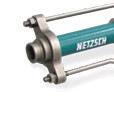






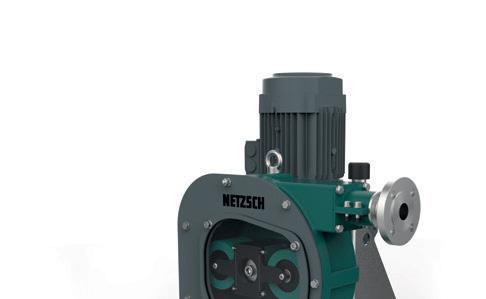



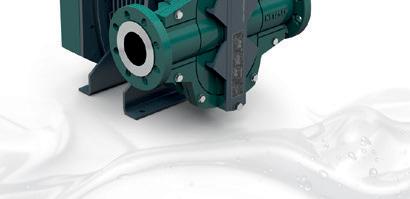








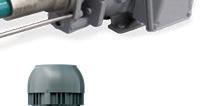

June 2024 | 13 www.esemag.com @ESEMAG ® C M Y CM MY CY CMY K Waste Water products plus PERIPRO 4.5 x 4.875 Holistic.pdf 1
PM ntc.social@netzsch.com
1/19/2023 3:40:41
Pressure sewer systems can cut new residential development costs
By Mackenzie May
Across Canada, housing development continues to boom. According to Statistics Canada, as of February 2024, the current investment in residential building construction across the country is more than $13 billion. As development continues, infrastructure must also be expanded to support growth, and this includes water and wastewater planning.
As development occurs in rural areas with minimal existing infrastructure, continued expansion becomes more costly for builders. When installing new sewer infrastructure, the most common method of collection is using gravity sewer systems to transport wastewater. This traditional approach, while effective in many contexts, poses challenges in areas with rugged terrain or low population density, often necessitating extensive excavation and costly installations.
Keeping the financial impacts in mind, alternative sewer solutions may offer more economical options for infrastructure expansion.
EQUIPMENT COST
A pressure sewer system utilizes a network of grinder pumps which are used to transport wastewater through small diameter pipes under pressure to a collection or treatment system. Each home is equipped with a grinder pump station, which consists of four main components: a basin, a 1-2 HP grinder pump, a level control, and a control panel. Lateral piping from the basin ranges from 32 mm to 50 mm diameter, while the main sewer line is typically 200 mm to 300 mm in diameter. Pipe size may vary depending on the number of homes connected to the system. Hydraulic design considerations should aim for sufficient scouring velocity to prevent solid settlement.
A gravity sewer utilizes larger diameter pipes, typically 400 mm, up to 900 mm. Similarly to pressure sewers, gravity sewers require sufficient scouring velocity to prevent solid settlement. As a result, pipes must be installed at consistent downward slopes and lift stations are required when there is a need to transport wastewater to higher elevations.
Lift station equipment can be very costly, as it includes pumps, level controls, a control panel, variable frequency drives, telemetry systems, valves and pressure gauges. Depending on capacity, lift station pumps may start around 20 HP for small stations, and can get up to 150 HP or beyond. This means that that the equipment found in one lift station alone can exceed $100,000. Many municipalities have several lift stations, depending on the distance homes are located from the force main or treatment facilities.
While there are cases where a single development utilizing a pressure sewer would require hundreds of grinder pump stations, the overall cost of this equipment is rather small com-

pared to the cost of several lift stations. The cost of the equipment can be easily added to the price per lot when selling the development.
INSTALLATION COST
As discussed, gravity sewer systems utilize large diameter pipes, which must be installed at a consistent downward slope. To accomplish this, significant excavation is required. If existing infrastructure such as roads is already in place, they must be torn up during sewer installation.
Installation of lift stations also requires significant excavation, often several stories below ground level. The site of each lift station in a system may require a control building to be fabricated, which is often protected with fencing and gates to prevent unauthorized access.
Contractors preparing grinder pump stations for installation.
continued overleaf… Environmental Science & Engineering Magazine 14 | June 2024 WASTEWATER

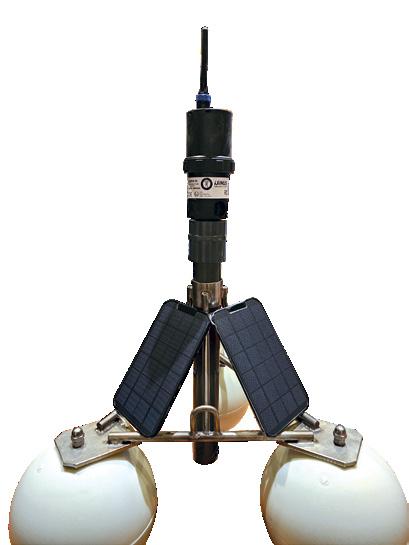

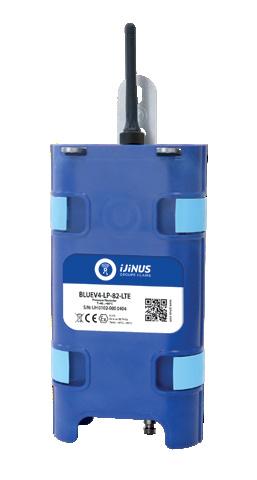








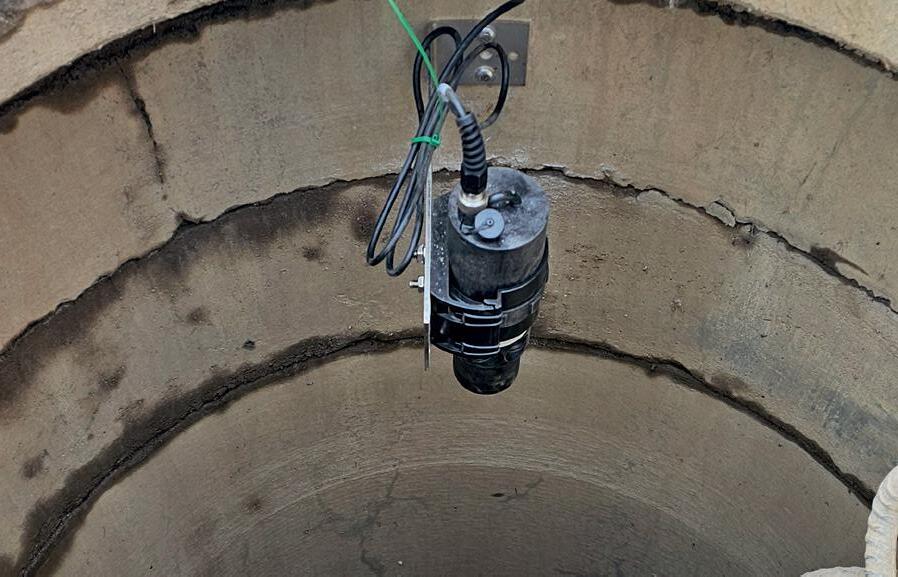


UPGRADEABLE
PR’eautech, Instrumentation & Odours Autonomous & Connected Solutions for effective monitoring! Visit us at the IWA Toronto! August 11-15 2024 Booth 635 Your Expert for analysis, control and monitoring of water GRAPHIC DESIGN: freelance-gazoline.com CLAIRE GROUP05/24 preautech.com ijinus.com Follow us on Follow us on Natural water - Wastewater - Overflow - Drinking water
systems AUTONOMOUS CONNECTED SOLUTIONS
SYSTEM
Partner specialized in the development of autonomous and smart measuring and data logging

Each home is equipped with a grinder pump station, which consists of four main components: a basin, a 1-2 HP grinder pump, a level control, and a control panel.
With pressure sewer systems, pipes are installed directly below the frost line via directional boring, eliminating the need for deep excavation and preventing the disruption of existing infrastructure. Piping follows the contour of the land, allowing them to be installed in various terrain types including rocky, hilly, and areas with high water tables.
This allows developers to utilize land that may have otherwise been considered too costly with traditional infrastructure. Minimal excavation is required to install basins on each lot.
It is important to note that pressure sewer systems have the flexibility to be used on their own, or in conjunction with existing gravity sewer infrastructure. Depending on the individual scenario, the use of a pressure sewer can reduce or eliminate the need for a lift station.
DEFERRING UPFRONT COST
It is easy to forget that the infrastructure used in existing homes on a day-today basis had to be established before they were built. All of the equipment and installation expenses discussed thus far are spent long before owners occupy a new home. If considering a single new development project, the entirety of the sewer system must be planned and installed prior to breaking ground on homes.
In phased developments, which will be
built over the course of several years, this means that infrastructure, including piping and lift stations, must be developed for when the system will operate at full capacity. Even if that is many years away.
to provide the financing for the equipment. This notably reduces the upfront cost associated with development.
OPERATIONAL COST
If gravity systems could operate without lift stations, there would be little to no cost associated with operation. Unfortunately, lift stations come with large and complicated equipment which does require significant capital. Large horsepower pumps can cost thousands per year in electricity alone. Incorporating telemetry and monitoring features add additional monthly communication fees. Municipalities or service utilities also must employ operators and electricians to keep equipment functioning as expected. While operator jobs are not eliminated with pressure sewer systems, the electrical cost of the grinder pump is covered by the homeowner. Grinder pumps utilize very little electricity in comparison to lift station equipment, accounting for similar cost to other small household appliances.
MAINTENANCE COSTS
While there are cases where a single development utilizing a pressure sewer would require hundreds of grinder pump stations, the overall cost of this equipment is rather small compared to the cost of several lift stations.
Municipalities or service utilities who are familiar with lift station maintenance can feel overwhelmed at the prospect of having hundreds to thousands of grinder pump stations to maintain. The key difference is the frequency of service required. Most operators visit their lift stations for basic maintenance on a daily or weekly basis.
However, with grinder pumps, the average time between service calls is intended to be 7 to 10 years. With that said, nuisance calls for problems such as float issues or clogging can occur, but they are easily fixed, and if new parts are required, they are far less expensive.
With a pressure sewer system, developers can defer a significant amount of their equipment cost until the sale of a home. They simply must install the piping network upfront, while basins, pumps and controls can all be installed immediately prior to occupancy. This allows income from the sale of the home
Many municipalities or utilities charge a monthly sewer fee to residents, which provides a source of funding for standard service calls. Other solutions include charging homeowners for grinder pump service on a case-by-case basis. In some cases, homeowners own and are responsible for maintaining their own grinder pump stations.
Mackenzie May is with Crane Pumps and Systems. Email: mmay@cranepumps.com
Environmental Science & Engineering Magazine 16 | June 2024 WASTEWATER

ECOTRAN
Barnes Pressure Sewer Packaged Solution

INSTALLATION
Directional boring and field adjustable risers allow for faster installation and limited disruptions saving time and money.
AESTHETICS
The materials of construction and EcoTRAN technology allow for lower environmental interference and extended product life.
You were top of mind with this product’s design. The discharge valve, plug-and-play cord, and basin were engineered to simplify maintenance.
SERVICE
Capacitance is a reliable and cost- effective method to monitor for industrial spills and leaks
By Greg Reeves
Capacitance technology has been used in industrial monitoring applications for over 100 years. Its classic probe design is typically known for high- and lowlevel alarm, continuous level monitoring and interface control. As new technologies for level applications are steadily being introduced, such as ultrasonics, radar and optical, capacitance continues to firmly hold its place as a reliable and cost-effective method for sensing and control.
In the early days of capacitance controls, industrial instrumentation was focused on improved automation and process control. Instrument selection was based largely on a product that could contribute to a company’s competitive edge and profit. However, for many years now, corporate sustainability has included environmental responsibility, and capacitance technologies have adapted well to this focus. Unique and creative

sensor design, coupled with advancements in precision components and microprocessors, have provided capacitance a stronger than ever place in the environmental monitoring space for applications such as spills and leaks.
Capacitance is unique in that it does not employ any mechanical moving parts or rely on sonic or optical transmission through a medium to work. The actual sensing element is really just a simple piece of metal.
HOW DOES CAPACITANCE WORK?
A common conception of a capacitor is a small component that is used in electronic circuits or as a device used with motors and power machinery. On circuit boards it is often used to control and stabilize electronic signals. On machinery, it is more often used to build up and hold a charge. The charge can then be released in a controlled manner to kick-start motors.
When applied to industrial process monitoring, capacitance is used in a totally different manner. A typical capacitor is comprised of a positive and a ground plate, separated by a medium in between. The performance of the capacitor can be dictated by the size and distance between the plates and the material between the plates. A material’s ability to hold an electrical charge is known as its dielectric. Different materials have different dielectrics and will behave differently within a capacitor.
For industrial measurements, such as level control, the two plates become the long sensing probe and the wall of the tank (see Figure 1). In an empty tank, the material between the two plates is air. Air has dielectric strength of about 1.0.
The capacitance field across the plates is measured in farads, and specifically for industrial level and spill control, it is usually in the picofarad range.
As the tank is filled with a liquid or solid, the air is being displaced by a material with a higher dielectric constant. This increases the overall capacitance reading between the probe and tank wall in a proportional manner. Through a control circuit, this reading can be tracked and calibrated to provide useable output signals, controls and display devices.
HOW CAN CAPACITANCE BE USED FOR ENVIRONMENTAL MONITORING?
In the above scenario, a level probe in a tank was used to describe a typical application of capacitance technology for automation and control. One of the unique features of capacitance is that the sensing plates can be virtually any shape or size and can be placed into any type of service. The capacitance sensor design and function are left up to the imagination,
Environmental Science & Engineering Magazine 18 | June 2024 SPILLS MANAGEMENT
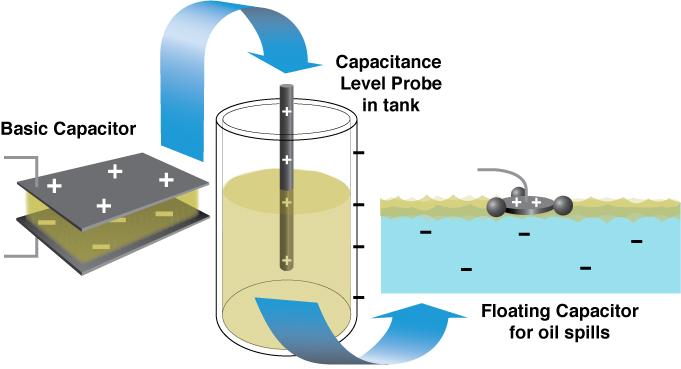
resulting in endless applications and customer solutions.
An interstitial tank leak alarm is a good example (see Figure 2, upper left). Protecting groundwater from potential tank leak hazards is of prime concern. Most buried tanks and many above ground tanks are regulated to require double walls to help contain a leak. A tip-sensitive, flexible cable can play the role of a capacitor plate.
It can be snaked within the interstitial space of a double-walled tank to lay in the normally dry void near the bottom. In the event of the internal tank leaking product into the interstitial space, or a breach of the external wall, allowing groundwater in the space, the capacitance of the sensor will change due the displacement of air by the liquid. This can trig ger remote alarms.
Another example of unique capacitance sensor design is the use of sensing pucks. These can readily be placed in tank containments, electrical vaults, chemical storage units, pump pans or just about anywhere a normally dry condition may incur liquid during an upset leak situation (see Figure 2, upper right). Capacitance sensors are very sensitive and can be set to alarm at very low accumulations of liquid.
Stormwater runoff is another environmental concern of industrial facilities, particularly those that use and contain petroleum oil and fuel on site. Power utilities, refineries, air ports, steel plants, pulp and paper mills, and railyards are just a few such facilities that have concerns of trace oils getting into the stormwater runoff and leaving the site.
Strategically placed sumps throughout industrial sites act to contain debris and oils that might otherwise work their way to a local stream or storm drain. A unique solution to monitoring these sumps for oil accumulation is to float a capacitance plate on the water surface (see Figure 1 and Figure 2 bottom sketch).
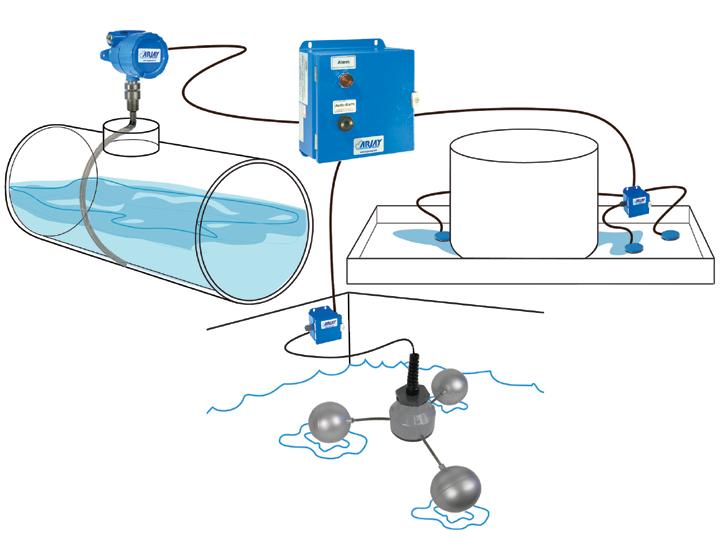
installed, the initial setup is minimal and they are easily calibrated to the ambient normal conditions of the site. Any upset condition due to the presence, absence or change in a liquid condition will trigger an alarm for operator attention. With over 100 years of industrial service, new applications and solutions are found for capacitance technologies every day and environmental protection is no exception.
Greg Reeves is with Arjay Engineering. For more information, email: greeves@arjayeng.com, or visit www.arjayeng.com
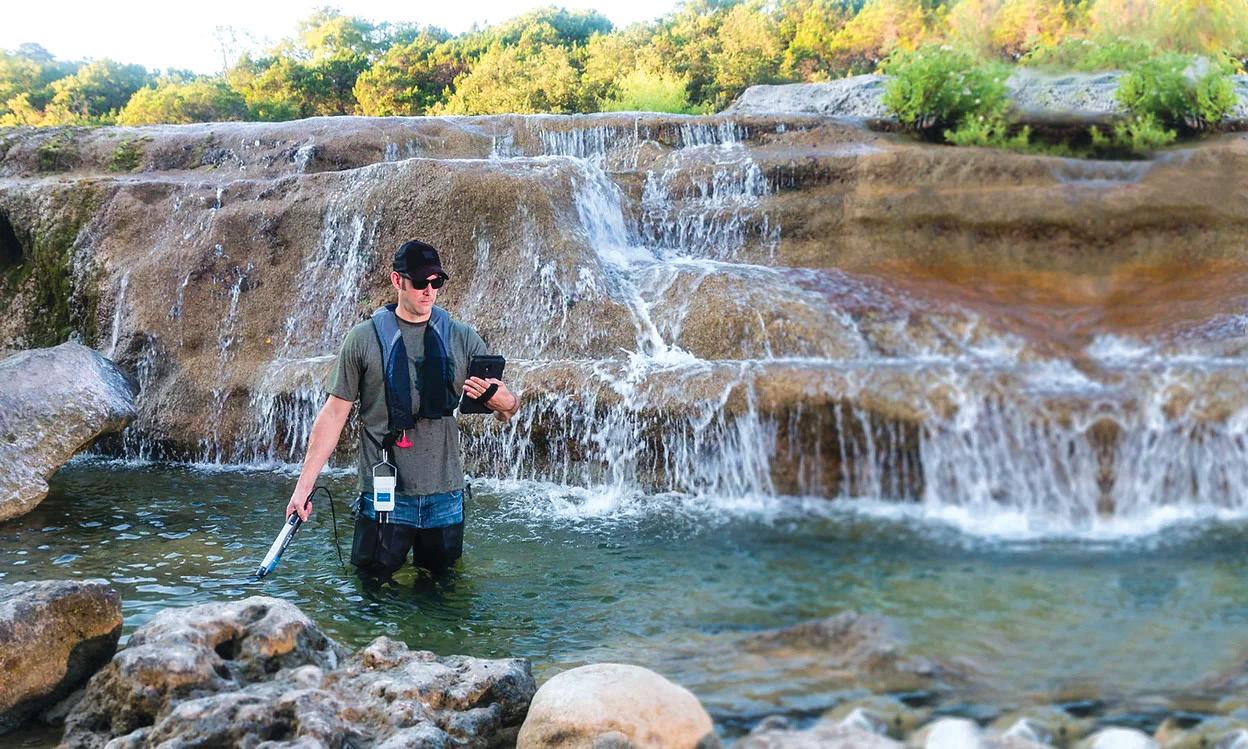


The tethered sensor will ride the routine level changes from the sump pump action. In the event of an abnormal oil accu mulation, the water that is normally just below the floating sensor is displaced by separated oil, which has a lower dielectric. The capacitance reading changes and the controller alarms to lock out the sump pump and alert personnel.
Capacitance technologies have proven to be an ideal solution to many environmental monitoring concerns. They are physically very robust and electronically very sensitive. Once
Figure 1. Capacitance can be applied to industrial and environmental applications.
Figure 2. Capacitance sensor design and function are left up to the imagination.
June 2024 | 19 www.esemag.com @ESEMAG SOIL METEOROLOGY BIODIVERSITY GEOMATICS PROUD DISTRIBUTOR OF THESE BRANDS: AIR HEALTH WATER T (365) 527-2508 | F (365) 527-2509 | 1 855 527-5808 sales@geneq.com 910 Rowntree Dairy Rd., Unit #15 Vaughan, (ON) L4L 5W5 T (514) 354-2511 | F (514) 354-6948 | 1 800 463-4363 info@geneq.com 10700 Secant St. Montreal, (QC) H1J 1S5 Vaughan Montreal & SAFETY WWW.GENEQ.COM Critical Environment Technologies SCIENTIFIC INSTRUMENTS ENVIRONMENT
Canada invests $15M to support biomanufacturing supply chain for wastewater surveillance
By ES&E Staff
New federal funding of $15 million will help to support a wastewater surveillance network and bolster Canada’s biomanufacturing sector to improve health sector supply chains, cross-border trade and mobility, and explore new technologies in pathogen surveillance.
The Integrated Network for the Surveillance of Pathogens: Increasing Resilience and Capacity in Canada’s Pandemic Response (INSPIRE) brings together 43 researchers from seven universities and public and private agencies. The team consists of biochemists, microbiologists, engineers, computer scientists, and supply chain public policy experts.
INSPIRE will develop strategic partnerships with researchers in Michigan, Ohio, and New York, to create a cross-border pathogen surveillance network covering regions where many supply chains supporting Canadian industry originate.
The University of Windsor’s Cross-Border Institute will focus on optimizing cross-border policies and programs to make Canada a more attractive destination for life sciences companies.
“During the COVID-19 pandemic, we had supply chain shortages, we couldn’t get enough PPE in Canada, we weren’t making our own vaccines,” announced Dr. Mike McKay, director of the University of Windsor’s Great Lakes Institute for Environmental Research.
McKay is leading INSPIRE with Dr. Lawrence Goodridge, a professor in the Department of Food Sciences, and director of the Canadian Research Institute for Food Safety within the Ontario Agricultural College at the University of Guelph.
The project will build up Canada’s capacity to produce vaccines and therapeutics by advancing wastewater surveillance and developing technologies

that simplify and speed up sampling and pathogen detection.
“As we deal with the increasing emergence of infectious diseases, it’s imperative that we enhance our preparedness for future health crises,” says Goodridge in a statement from the University of Guelph.
The team also includes researchers from the University of Waterloo, University of Toronto and York University, as well as partners at more than 30 academic, public, private and not-forprofit institutions. University of Waterloo scientists Dr. Trevor Charles and Dr. Andrew Doxey have been granted $1.5 million in research funds to fulfill their part of the larger multi-institute team looking to advance wastewater analysis.
By using high-throughput metagenomic sequencing, Dr. Charles and his team will detect new, existing and emerging pathogens and antimicrobial resis-
tance, building on all the work done in Waterloo research labs tracking SARSCoV-2 and its variants, as well as with other viruses like influenza and RSV.
“This same technology also has potential for application in agriculture and food production, with implications for human, animal and crop health,” announced Dr. Charles. “A recent example is the emergence of avian influenza in cattle.”
For more information, email: editor@esemag.com
Dr. Arezoo Emadi, Dr. Mike McKay, Dr. Kendall Soucie, and Dr. Kenneth Ng are pictured along the Detroit Riverfront. Credit: UWindsor
Environmental Science & Engineering Magazine 20 | June 2024 WASTEWATER
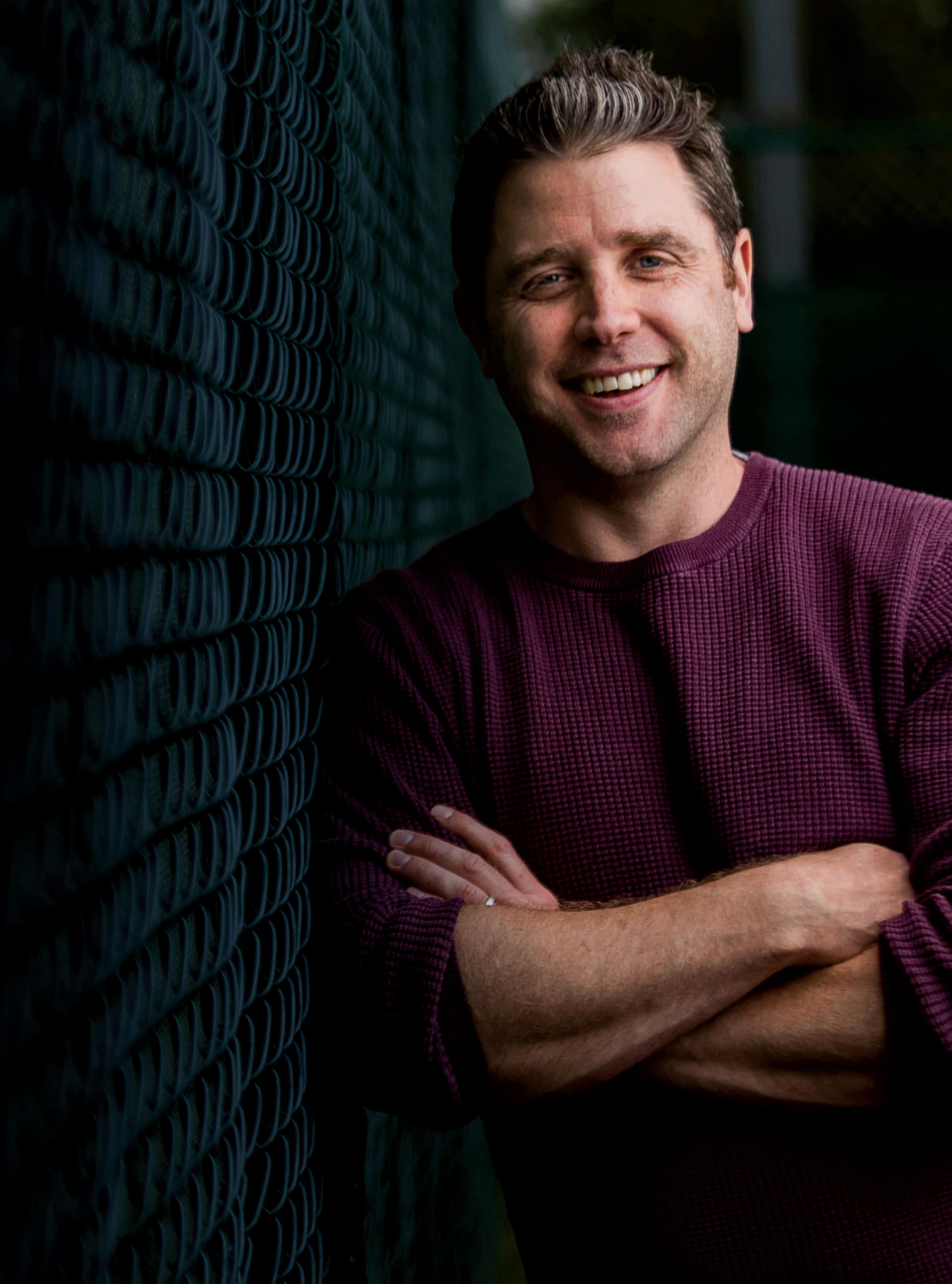













ENGINEERS SPEC US AGAIN AND AGAIN. WE ARE GENERATIONS STRONG. PENTAIR.COM/200
How a rural Alberta water treatment plant reduced DOC and improved water quality
By Russ Swerdfeger
The pristine waters of Lake Christina in northeastern Alberta serve as a recreational attraction and also as the source water for Conklin, one of 11 Indigenous and rural communities that comprise the Regional Municipality of Wood Buffalo. For years, Conklin’s water didn’t require treatment for dissolved organic carbon, but recently, with heavier use and a larger plant, dissolved organic carbon (DOC) has crept up to exceed mandates.
DOC found in raw water sources with natural organic matter is a known precursor to the formation of disinfection byproducts (DBPs) which are created when disinfectant (either chlorine or chloramine) reacts with dissolved organic carbon to form halogenated organic compounds.
Despite its small size, Conklin serves about 250 residents and includes a post office, gas station, cafe, store, lounge, and school. The community found success with a fluidized ion exchange pretreatment system specifically designed for small water treatment plants. MIEX® Mini systems from IXOM Watercare utilize a small-particle resin that is fluidized and used as a pretreatment step to pull organics from untreated water before it reaches the plant. This pretreatment removes dissolved organic carbon, thereby reducing disinfection byproduct formation. Prior to installation, the manufacturer provided a pilot test.
PRIOR TREATMENTS STRUGGLED TO COMPLY WITH DBP RULES
Rural water systems across Canada face the problem of DOC carbon in source water, just like their larger counterparts, but struggle to find treatment options suited for a smaller operation and budget. Do-it-yourself solutions, chemicals and other options often don’t get the job done to meet compliance and other issues.
Canada requires water treatment plants to monitor for two disinfection byproducts in drinking water. Total trihalomethanes (TTHM) and haloacetic acids (HAA5) have shown to cause negative human health effects such as cancer and reproductive harm. Canada’s Guidelines for Canadian Drinking Water Quality (GCDWQ) require plants to provide quarterly water quality samples that show amounts no greater than 100 µg/L for TTHMs, and 80 µg/L for HAAs.
The water treatment plant was unable to comply with the regulations before installing the MIEX Mini plants. Staff conducted multiple-loading tests to determine the optimum treatment rate for their source water. The optimal rate is selected based on the treatment goals, economic feasibility, and diminishing DOC removal efficiency.
Steven Meunier, foreman of operations for water treatment at the Regional Municipality of Wood Buffalo tried treating DOC with a conventional coagulation treatment system of
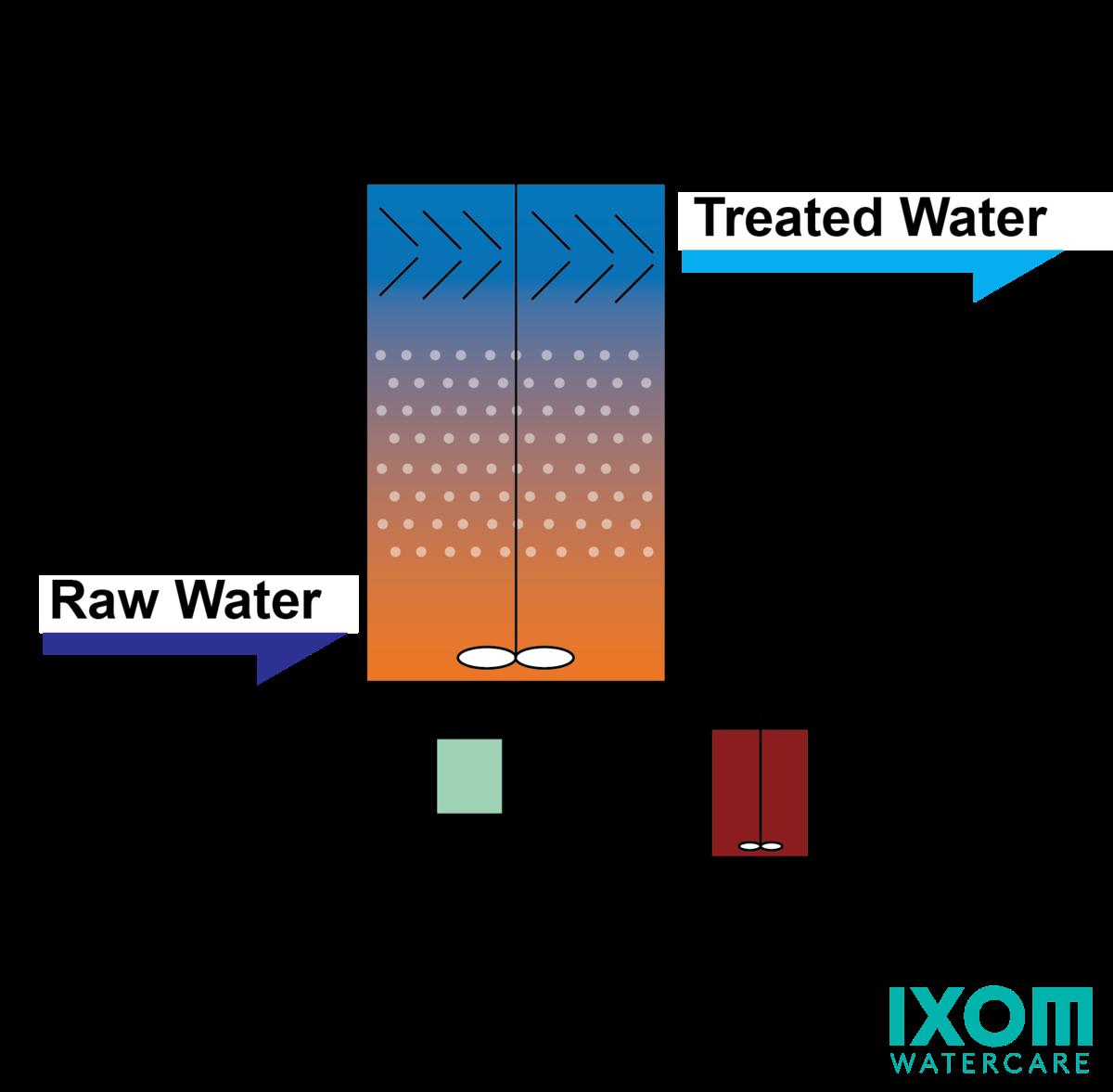
potassium permanganate, soda ash and other chemicals, but the system struggled to remove DOC to levels low enough to minimize disinfection byproduct formation upon chlorination. Due to elevated DOC concentrations, the Conklin water treatment plant was sometimes unable to meet federal water guidelines for trihalomethanes and haloacetic acids (HAA) at 100 µg/L and 80 µg/L, respectively.
NEW TECHNOLOGY, WITH PILOT STUDY, SOLVES THE PROBLEM
As the DOC levels increased, Meunier looked for newer technologies, while also trying various solutions. “We have a big reservoir and a small population. We tried lowering contact time, aeration, as well as using different chemicals,” he said,
At a Water Week regional conference in Edmonton, Meunier met representatives from MIEX and IXOM Watercare, and started the conversation of how to fix his problem. He also checked with others in neighbouring provinces who had installed the a MIEX system and received favorable reviews. With the support of the Regional Municipality management team, Meunier arranged for a four-week pilot study at the Conklin water treatment plant.
“The major adjustment was dropping our coagulant use down quite a lot,” said Meunier. “The pilot study predicted we would drop coagulant use about 50%. That’s where we started, but ended up dropping it about 75%. That’s where it runs now. We’re getting better performance out of the actual plant than the pilot one.”
The MIEX Mini treatment process utilizes MIEX Resin, a
The regeneration cycle for MIEX Mini ion exchange pretreatment systems.
Environmental Science & Engineering Magazine 22 | June 2024 WATER
continued overleaf…
Pinnacle Ozone Solutions’ patented modular quad-block design operates in a small footprint to eliminate odour, oxidize colour, and kill bacteria.
Pinnacle Ozone Solutions delivers technically superior, energy efficient, and reliable ozone systems which do not produce harmful by-products, such as THMs and HAAs, which can result from chlorine disinfection.
The modular design ozone cells offer seamless system integration for drinking water and wastewater treatment facilities, delivering rugged, service-free operation within a small footprint. All while lowering your energy cost 20-40% and total operating cost 35-50% versus conventional systems.

LOWER YOUR COSTS BY UP TO 50%
To discover the unparalleled advantages of Pinnacle Ozone Solutions for your application, contact ACG-Envirocan today.
CREATE YOUR IDEAL DISINFECTION SOLUTION WITH OZONE GENERATING MODULES
CALL 905.856.1414 • 131 Whitmore Rd., Unit 7, Woodbridge, ON L4L 6E3 LE AD ERS IN INN OV ATION & SUST AI NA BILITY Ontario Pollution Control Equipment Association www.acg-envirocan.ca
magnetized ion exchange resin, in a fluidized bed to remove charged constituents of DOC from drinking water supplies and therefore reduce treated water disinfectant byproduct formation that occurs during chlorination. Used as pretreatment to coagulation, the resin reduces the chemical demand necessary for coagulation, as a large portion of the organics are removed.
Coagulants are left to remove larger non-polar constituents, thereby decreasing coagulant dose and yielding a denser floc through minimized charge repulsions, with a reduced need for flocculant aids, polymers, and pH adjustment. Meunier is also able to reduce soda ash treatments by about 50%.
The reduction in coagulant reduces operating costs and sludge volumes generated by chemical additions, as well as increases filter efficiency due to less frequent backwashing. “It took us a while to drop down to a running average rate,” said Meunier. “Based on our research and pilot, I was optimistic. Based on the results, I was pleasantly happy. And I’m more than pleasantly happy about the decreased chemical use, and the operators all like the system. There’s not much day-to-day maintenance, and it’s not adding much extra work.”
Conklin is one of four communities in the area, and each will also eventually need DOC treatment. Now that Conklin is meeting its compliance goals for reduced THMs, Meunier will turn his attention to Fort McKay, with plans to install a MIEX system there.

Visit our website to view our hands-on training, virtual training and e-learning course options.
Browse our online Drinking Water Resource Library, and learn about Pilot Testing and Helpline services.
www.wcwc.ca

HOW FLUIDIZED ION EXCHANGE PRETREATMENT WORKS
MIEX is short for “magnetic ion exchange” The magnetic properties of these beads allows them to agglomerate and settle rapidly, or fluidize, at high hydraulic loading rates. Because of this feature, MIEX Resin is used in a continuous process, with ion exchange occurring in either a mixed tank or a fluidized bed reactor vessel.
Raw water is fed to the base of the reactor vessel for providing upflow fluidization hydraulics. Inclined plate settlers at the top of the reactor vessel assist with resin/water separation. Treated effluent overflows into collection launders and to downstream treatment processes. After the predefined volume of water has been treated, flow stops and the resin regeneration processes occur.
Water is drained from the vessel, and a brine solution downflows through the settled resin bed, regenerating the resin. The regeneration cycle takes approximately three hours, after which the system will resume treating water. Two systems on line can alternate for continuous duty; plant expansions are easy with the addition of redundant units.
The resin beads used in the process are manufactured to be much smaller than conventional ion exchange resins, providing four to five times the surface area, and allowing for rapid exchange kinetics.
DOC REMOVAL CHEMISTRY
When the resin comes in contact with water, negatively charged organic acids (i.e., DOC) are removed from the water by exchanging with a chloride ion on active sites on the resin surface.
In the regeneration process, resin loaded with DOC undergoes a reversed ion exchange reaction, where chloride ions are substituted for DOC, which is released from the resin into a concentrated brine (NaCl) solution. Other regenerants can also be used.
Russ Swerdfeger is with IXOM Watercare, who are represented in Ontario by Pro Aqua Sales. For more information, email scott@proaquasales.com
Environmental Science & Engineering Magazine 24 | June 2024 WATER
MIEX Mini units help Conklin comply with drinking water mandates.





Up to 50% reduction in mechanical room space required 90% fewer joints = 90% less risk of leakage Simple, consolidated operation AFTER simple. intuitive.

THE DICE
#20 – 220 Industrial Parkway S. Aurora, Ontario L4G 3V6 Tel: 1 (905) 841-4073 Fax: 1 (905) 841-4018 www.VissersSales.com THE EVOLUTION OF THE CHEMICAL METERING SYSTEM
BEFORE complex. cluttered.
Toronto pauses stormwater charge consultations
By ES&E Staff


•
The City of Toronto has paused its three stormwater charge public consultation sessions which were set for April, following the mayor’s instructions to align its potential implementation with Toronto’s broader climate resilience strategy.
Mayor Olivia Chow told local media she was caught off guard by the stormwater charge consultations, when she began fielding public complaints about it. The charge, or tax, was intended to begin in 2027 to address the amount of impermeable hard surface on a property, such as roofs, asphalt drive-





STORMWATER Stormwater Management Systems Inspect Smart GRAF EcoBloc Ontario Distributor 1.866.625.3929 | makeway.ca Canadian Supplier 1.800.665.4499 | barrplastics.com Watch it in action
Suitable for infiltration, detention and retention
Capable of HS-25
Storage Coefficient of 96%
•
•
•
System is fully inspectable and flushable
fund the infrastructure to manage it.
The stormwater charge is calculated by taking Toronto’s total stormwater management expenditures ($385 million) and dividing it by the city’s total impermeable surface area (22,857 hectares), which equals $1.68 per square metre of hard surface area.
L arger properties would likely see the largest jump in annual water costs if the stormwater charge is implemented. City officials estimate that properties larger than one hectare could face about a 10% annual increase in contributing to stormwa-ter infrastructure costs.
L arge properties represent approximately 1% of properties in Toronto, but account for 37% of the city’s total hard surface area. The city is also consulting on a potential stormwater charge credits program for large properties that implement long-term stormwater management solutions.
Several municipalities across North A merica have already implemented a stormwater charge, such as the Ontario communities of Mississauga, Brampton and Newmarket. Toronto itself has looked at the proposition for years, going back to about 2012
“Costs for stormwater management would be removed from the water rate and the stormwater charge would appear as a separate line on the utility bill as a fixed charge,” stated the City of Toronto’s stormwater consultation preview document.
Properties would be charged based on property type and size, and those without a water account would receive a stormwater charge-only bill, city officials noted.
Chow also told local media that before a stormwater charge comes to council, she would prefer to help homeowners figure out how to make green improvements to their properties and help rain to drain and infiltrate the ground more efficiently.
For more information, email: editor@esemag.com

Montreal’s newest sponge park will retain over a million litres of rainwater
By ES&E Staff
Montreal is set to build its largest sponge park ever as local officials aim to increase the city’s square footage of green infrastructure to absorb heavier and more frequent rainfall. In the fall of 2023, the city announced plans to build 20 sponge parks over two years. Its latest park project in the borough of Verdun will cover an area of some 4,300 m².
Drainage tree pits will also be built along the length of the park to allow water to infiltrate the soil. These features will temporarily retain more than a million litres of rainwater, over 40% of the capacity of an Olympic swimming pool, making it the first project of this scale in Montreal. As for the street, it will feature over 305 m² of sponge-like infrastructure in the form of draining vegetated pits.
The Verdun park will rank first among Montreal’s sponge parks, ahead of Pierre-Dansereau Park in Outremont, with a retention capacity of 627,000 litres, and Howard Park in Villeray-Saint-Michel-Parc-Extension, with a capacity of 624,000 litres. By way of comparison, the green space of Place des Fleurs-de-Macadam on the Plateau-Mont-Royal holds 160,000 litres of stormwater and runoff.
“At a time when the whole world is
confronted with the consequences of climate change, we have a responsibility to implement concrete measures to adapt to this new reality,” announced Montreal Mayor Valérie Plante, in a statement. “Sponge infrastructure is part of the solution, as it reduces the risk of flooding in vulnerable areas by capturing as much rainwater as possible, rather than directing it into the sewer system.”
The park will be built on land adjacent to the Atwater drinking water plant. Rue Dupuis will be resurfaced with a slight slope towards the park, and passages will be built under the sidewalk to allow water to flow directly into the park. Work on this project is scheduled to begin in the next few weeks and be completed during fall of 2025.
“The use of city-owned land, that of the Atwater factory, not only makes it possible to build this new resilient park, which will reduce the risk of flooding, but also to offer local residents quality landscaping, brand-new street furniture and a dog park. A win-win situation!” announced Marie-Andrée Mauger, mayor of the borough of Verdun. “At a time of climate change, the city continues to take advantage of every opportunity to improve its territory’s ability to adapt.”
For more information, email: editor@esemag.com
Local officials say drainage tree pits will also be built along the length of the park to allow water to infiltrate the soil. Graphic: City of Montreal
June 2024 | 27 www.esemag.com @ESEMAG STORMWATER
Concordia researchers analyze alternative factors for water main breaks
By ES&E Staff

While age, material and diameter are most often the culprits when it comes to water main breaks, a pair of Concordia University researchers has analyzed more than 62,000 breaks and found that the types of surrounding soil, or the type of pipe lining, coating or joint, are also notable factors.
The new paper published in the journal, Environmental Systems Research, includes data from 13 utilities in seven provinces, including inventories and histories of main breaks that covers almost 26,000 kilometres worth of pipes.
“It is very rare to find a study that includes so many cities,” explained study co-author Rebecca Dziedzic, an assistant professor in the Department of Building, Civil and Environmental Engineering at Concordia in Montreal, Quebec. “Having access to this kind of data allows us to see different perspectives and ways of collecting data, as well as each utility’s different goals and results.”
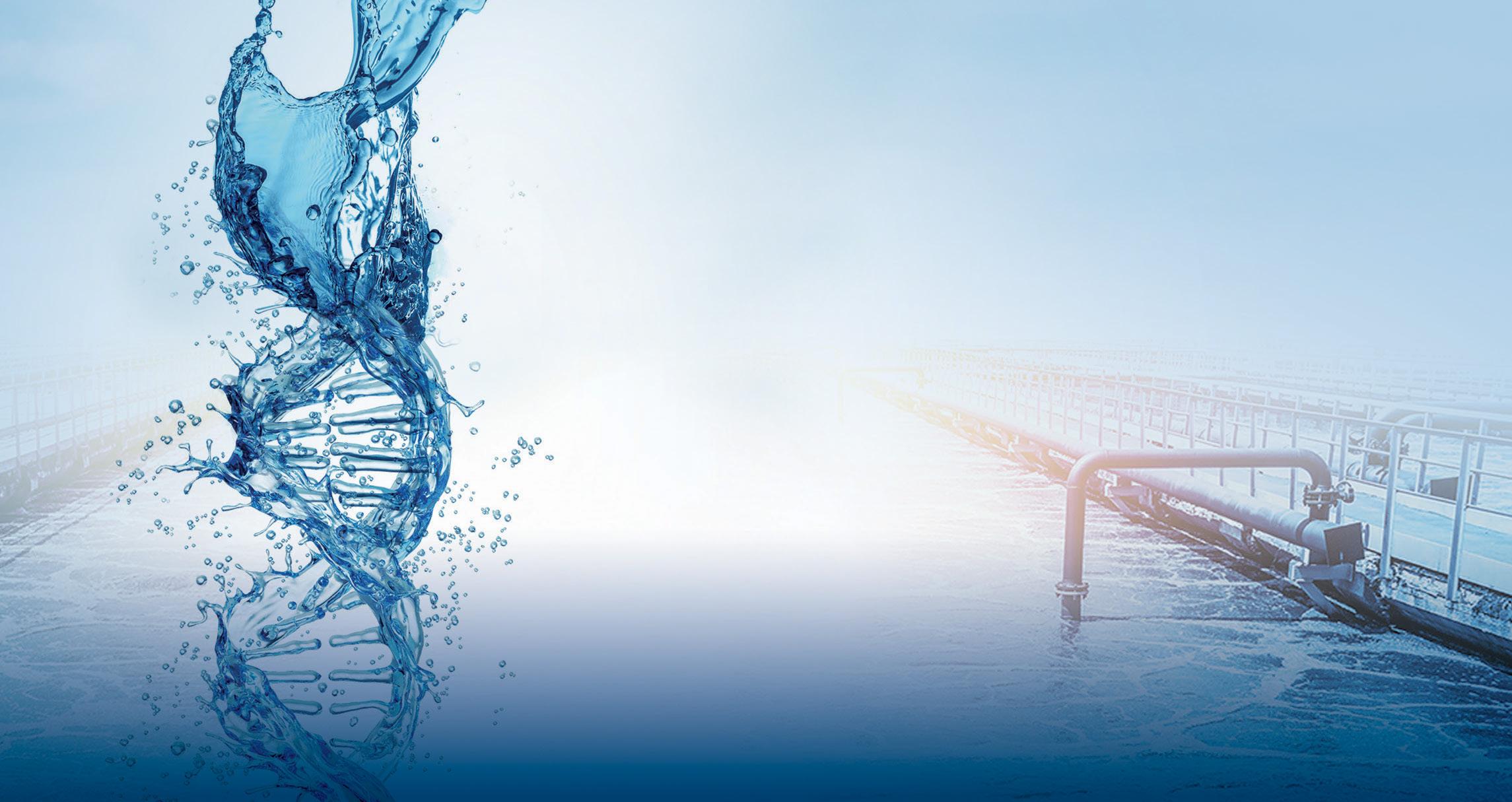
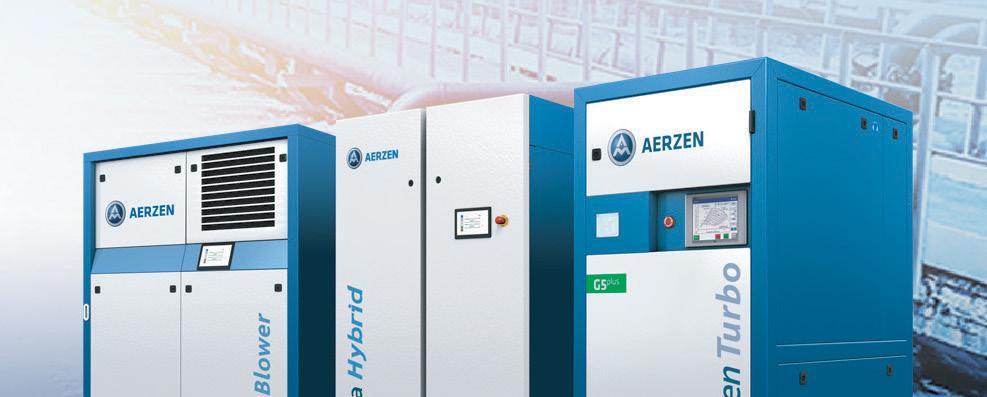






























 Researchers Sadaf Gharaati (left) with Rebecca Dziedzic.
Credit: Concordia University
Researchers Sadaf Gharaati (left) with Rebecca Dziedzic.
Credit: Concordia University
Environmental Science & Engineering Magazine 28 | June 2024 WATER It’s in our DNA. The innovative AERZEN Positive Displacement Blower, Hybrid and Turbo about efficiency and sustainability www.aerzen.com/canada Up to 55% energy saving potential in the biological wastewater treatment process Minimising CO2 footprint by 65% to achieve your common climate goals Optimizing blower technology mix for a sustainable aeration process
A recent Utah State University study created from utility survey data estimates that some 20% of water pipes across the U.S. and Canada are in need of replacement and contribute to some 260,000 water main breaks each year.
The utilities’ data for the Concordia study also has information on pipe diameter, material, length, installation year and failure year, among other variables, but the researchers were focused on lesser-known variables. For instance, seasons play a role in determining the risks of a water main break, the study found. Summer breaks can often be accidental due to Canada’s short but intense construction season. However, more failures are experienced in January and February, during freezing winters.
“The utilities can use the data to implement better practices, such as improving communication with construction crews about the location and types of water mains in a particular area,” Dziedzic explains.
When it comes to soil conditions, pipes in clay and sandy soils are more likely to break than pipes in damper environments, the study found. Clay soil breaks are usually related to bedding issues, while those in sandy soil are linked to the way the structures settle.
Universal joints were more likely to fail than collared ones, the researchers noted, particularly for circumferential failures. Joints and fitting failures were most likely in pipes less than 20 years old, and usually the result of poor installation rather than pipe quality.
The majority of historical breaks
recorded by the utilities occurred on older cast iron pipes. Because most of the PVC pipes were installed in the 1980s, or more recently, they have not yet reached the end of their expected service lives, the study found.
“The hope is that we continue to work together with the utilities to create better predictions of future breaks,” Dziedzic concludes. “This way, they can maintain
and manage their systems better within their budgets. Hopefully, we will be able to create better models that look at more factors and can help reduce the potential of restricting people’s access to clean water.”
Dziedzic co-authored the study with Sadaf Gharaati, MSc 22.
For more information, email: editor@esemag.com
STAINLESS STEEL LEVER HOIST
• Type 304 Stainless Steel Construction
• Food-Grade Grease Meets NSF H1 Standards
• Enclosed Gearing & Sealed Roller Bearing
• Weston-Style Braking System
• Ergonomic Handle with 360-Degree Rotation
• Twin Pawl Design
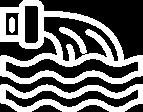

The researchers were focused on lesser-known variables. For instance, seasons play a role in determining the risks of a water main break.














June 2024 | 29 www.esemag.com @ESEMAG
CE, ASME/ANSI B30.16, AS1418.2, ASME/ANSI B30.21, NSF H1 FREE SPARE SET OF LATCHES
Effectively ensuring safety in biogas facilities
By David Ellis, Trisha Aldovino, and James Arambarri
Anaerobic digestion is an established method for managing organic waste, creating renewable energy, and also producing valuable soil amendments. Prioritizing safety at biogas and renewable natural gas (RNG) facilities helps maintain smooth operations.
From toxic gases and biohazards to common industrial safety risks, there are many aspects to consider in maintaining a safe working environment. These hazards apply to most biogas and RNG facilities. However, those that process food waste, municipal source separated organics (SSO), or the organic fraction of municipal solid waste (OFMSW), may face additional hazards.
The presence of hazardous gases may be the best-known concern for operational health and safety in a biogas facility. While hazardous gases should be treated seriously, they are not the only safety hazard to consider. Safety protocols at a biogas facility should also address biohazards, fire and explosion risks, maintenance and repair procedures, and common industrial risks.
Hazardous gases: Gases like ammonia, methane, carbon dioxide, carbon monoxide, hydrogen sulfide (H2S), and volatile organic compounds (VOCs) pose health risks ranging from irritation to death. Methane and H potential impact on health and safety. Methane is highly flam mable and explosive, while H2S can be extremely toxic, even in small amounts.
These hazardous gas risks are not unique to biogas and


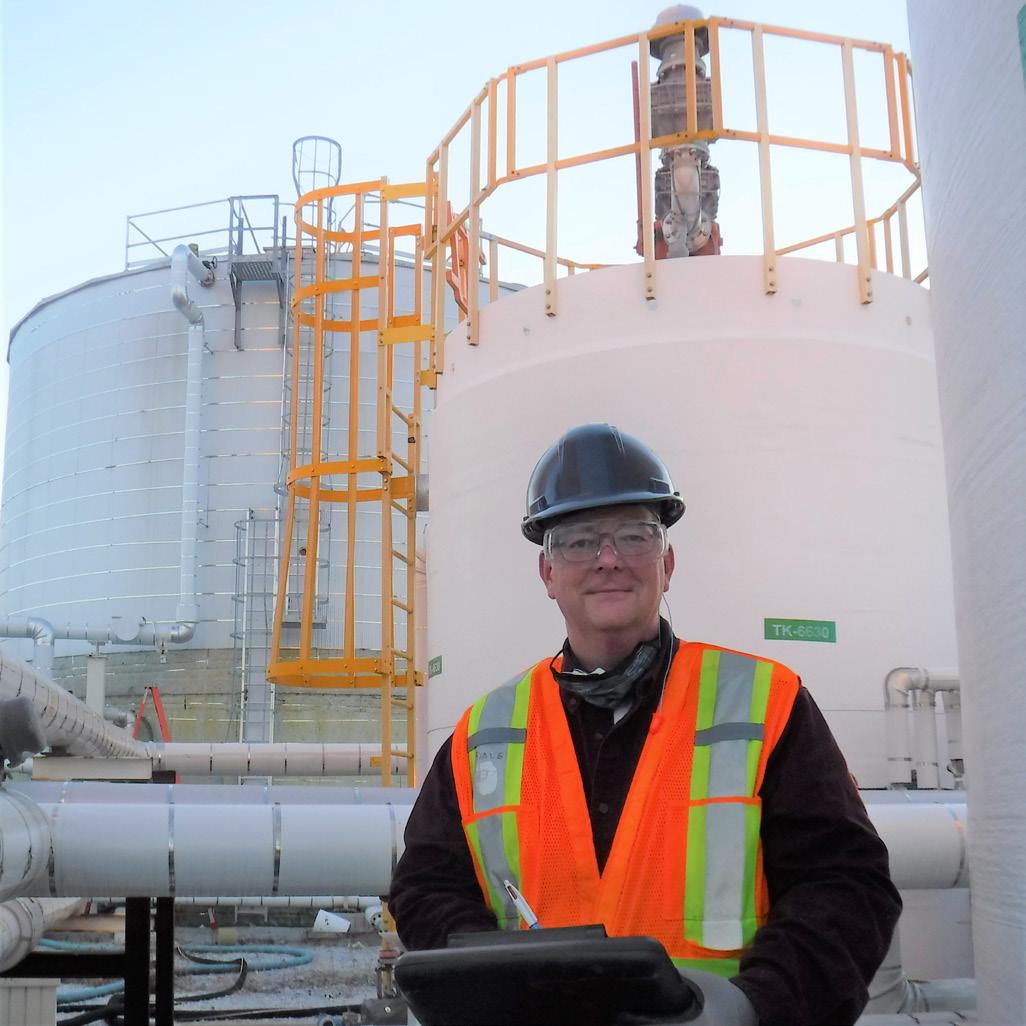
RNG production facilities. Trained sewage treatment plant operators should be familiar with these gases and able to manage the risks appropriately.
A particular risk at organic waste processing sites comes from mixing different food waste and other organic waste materials in raw feedstock holding tanks. Sometimes, the
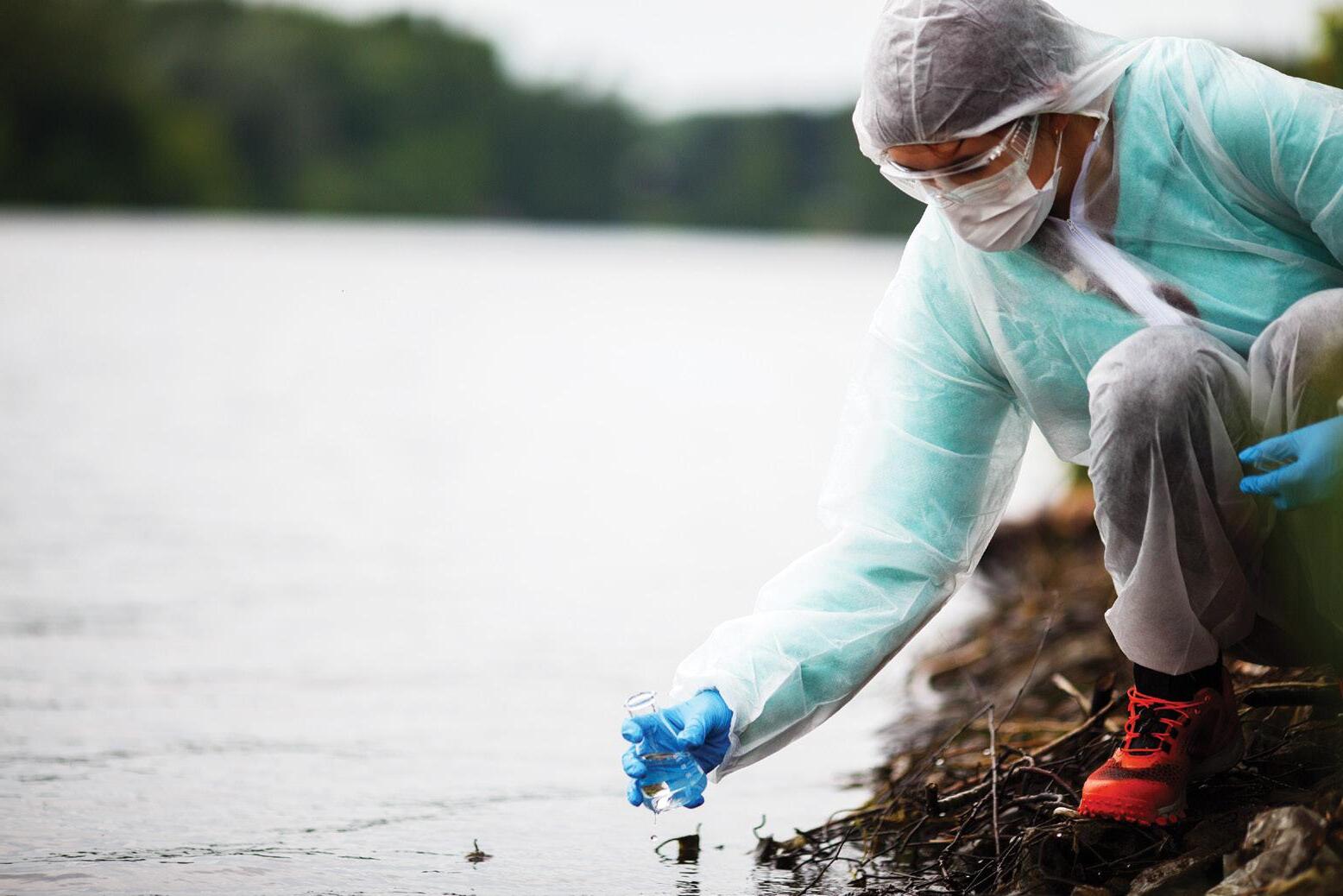 Azura’s principal engineer, Dave Ellis, standing in front of a feedstock storage tank and anaerobic digester wearing appropriate PPE.
Azura’s principal engineer, Dave Ellis, standing in front of a feedstock storage tank and anaerobic digester wearing appropriate PPE.
Environmental Science & Engineering Magazine 30 | June 2024 ANAEROBIC DIGESTION PANTONE 116 CPANTONE p179-15 U > > > > > > > WATCH VIDEO TM
Biohazards: Biogas facilities often deal with a wide range of organic materials, including liquid and solid food wastes, manure, and sewage sludge. Organic waste often contains biohazardous materials and that risk cannot be eliminated because biogas cannot be produced without it. We need to understand and manage these risks safely.
Organic waste often contains a variety of microorganisms, including bacteria, viruses, moulds and parasites that can cause infections and disease. Sewage biosolids host a plethora of pathogens. At food waste digesters, or any biogas facility treating chicken or other raw meat, operators are at a risk for exposure to salmonella and E. coli. SSO, or OFMSW digesters, may see materials like pet waste, diapers and hygiene products in the feedstocks.
The risk of exposure to biohazards is highest where an operator handles the feedstock or digestate. Areas like the feedstock receiving pits and digestate holding tanks are common points of exposure. During planned maintenance, operators also face increased risks when cleaning or maintaining these tanks and any piping, pumps, valves, instruments, or other equipment that touches the waste. Flushing and sanitizing systems before planned maintenance is routine. But what about during a breakdown?
Imagine a cracked pipe spraying raw feed material and aerosolizing the mate rial. The same risk can also occur when operators use hoses to spray off equip ment or wash down the feedstock area.
Including air quality controls in the design of the ventilation system, hygiene protocols, adopting industry best prac tices, and the appropriate use of per sonal protective equipment (PPE), can all work together to reduce the risk for those exposed to these biohazards.
Fire and explosions: Beyond the flammability of biogas, accumulation of dust around digestate drying operations also aggravates the risk of fire and explo sions in biogas facilities. Dust particles can be stirred up by vehicle traffic and moving equipment. Dust explosions are a great risk as a secondary event. For example, if a truck accidently hits part of the building, the impact can disturb accumulated dust on the tops of piping,
The most effective time to reduce risk is during the design and construction phases. Designing processes focused on hazard prevention removes significant risk.
ductwork, and structural steel, causing it to become airborne. This airborne dust is then the highest risk of a dust explosion, if there is an ignition source nearby. Potential ignition sources include:
• Friction from mechanical parts such as hot bearings.
• High-temperature equipment such as heaters, but also forklift exhaust piping.
• Electrical sparks, including static electricity, as well as from motors and lighting.
• Common electronics and hand tools such as flashlights and power drills.
• Flames from activities like smoking, welding, or other hot work.
Increased dust levels not only raise
explosion risks, but also affect air quality for on-site operators and the surrounding community.
Maintenance and repair: These activities can lead to exposure to biohazards, chemical hazards, and the accidental creation of confined spaces, all of which increase safety risks for workers. Some of the common repair events involving increased safety hazards are gas leaks, foaming due to digester upsets, and spills. Similarly, a planned maintenance event, like digester biological startup or reseeding, can result in creating temporary conditions that need special attention.


continued overleaf…
www.esemag.com @ESEMAG
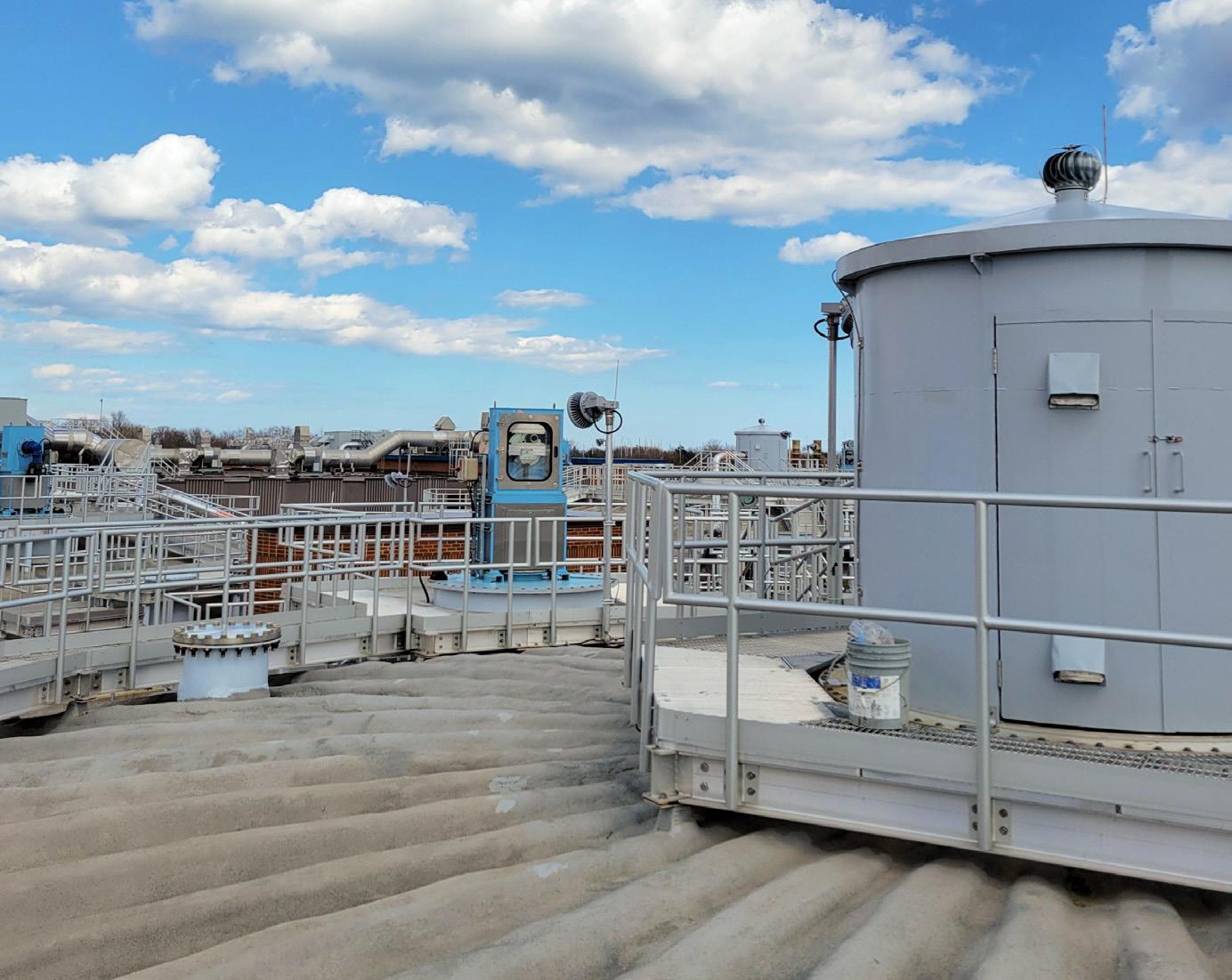
For example, after digester repairs and reseeding, the digester headspace may need to be purged of oxygen. This prevents creating an explosive air and methane mixture, as the process biology begins creating methane.
It is important to take safety precautions even during routine maintenance and operations. Routine and repetitive tasks can pose a physical health risk to operators through overuse injuries. Repetitive tasks can also reduce an operator’s focus, which can lead to accidents. Personal factors, such as tiredness can further reduce an operator’s focus away from the task. Managers can reduce this risk by implementing job rotations, adequate break times, and automation.
Common safety hazard: Biogas facilities have all the same hazards that are common across most industrial sites. These hazards include slips, trips and falls, vehicle and heavy equipment traffic, and mechanical equipment hazards.
While these are common safety concerns, it is important to consider how they apply specifically to anaerobic digestion facilities.
Organic wastes often contain fats, oils and grease (FOG). This FOG material poses a heightened slip, trip, and fall risk
if there is a spill or even a small amount of material on the ground, like when a hose has been disconnected. The area can look simply wet, but in fact be greasy and very slippery. These FOG areas are also particularly challenging to clean with a simple cold-water hose.
Increased vehicle traffic for moving feedstock and digestate on- and off-site can lead to congestion. Congestion can be aggravated during poor weather when trucks may arrive close together in time, resulting in increased risk of accidents and injury. During poor weather, visibility in the yard area can also be reduced because of rain or snow. Site layout planning can mitigate this risk as can enhanced operator procedures around yard operations during low visibility periods.
Rotating equipment engineered to cut, shred, and break down coarse food waste materials in a biogas facility presents a particular risk to operators. The need for extra attention to be paid to placing and maintaining equipment guarding cannot be over stressed.
HAZARD CONTROL METHODS
Hazard control methods can be divided into four types. These include elimination and substitution, engineering controls,
administrative and work practice controls, and PPE. Each method plays a distinct role in minimizing risks and enhancing safety within a biogas or RNG facility.
Elimination: This hazard control method involves completely removing the hazard. In biogas facilities, various components like mixers, engines, storage tanks, and other processing units often require regular maintenance and inspections, sometimes even performed at heights. To eliminate the hazard of working at heights, technologies can be chosen where maintenance points are located at ground level.
For example, using mixers that operate from the bottom of digesters instead of the top removes the need for personnel to access elevated areas. This change eliminates the risk of falls and injuries associated with working at heights to access that piece of equipment.
Substitution: Substitution involves replacing the hazard source with something less hazardous. For example, some biogas facilities use acidic liquid ferric chloride to reduce H2S gas production in the digester and digestate. However, by substituting liquid ferric chloride with powdered forms of iron (i.e., iron oxide or iron hydroxide), the risk of spills and leaks of this corrosive chemical is significantly reduced.
Powdered iron additives are easier to handle and clean up, while eliminating the potential for splashing, making it a safer alternative for operators. Additionally, using an automated feeder for powdered iron additives further minimizes human contact with the chemical, enhancing safety measures within the facility, specifically reducing the risk of dust exposure from the iron powders.
REDUCING RISKS
The most effective time to reduce risk is during the design and construction phases. Designing processes focused on hazard prevention, such as defining clearances around maintenance points for operators to work, removes significant risk.
Equipment with built-in safety measures such as automated systems used for chemical dosing or process monitoring, reduces the time the operators interact with hazardous chemicals and equipment.
Providing comprehensive training and
Environmental Science & Engineering Magazine 32 | June 2024 ANAEROBIC DIGESTION
Safe access to a digester roof during maintenance is considered a best practice for operating digesters and is seen here at the City of Toronto’s Ashbridges Bay WWTP.
certification programs can give employees a baseline understanding of safety protocols and procedures. Developing and practicing emergency response plans prepares teams to handle unexpected incidents effectively.
Implementing strict permit systems for confined space entry restricts tasks within the confined space to the trained and authorized personnel. An entry permit system also outlines the necessary safety precautions to perform those tasks. Similarly, working with ignition sources near flammable materials, also called “hot work”, should follow a work permit system.
Maintaining detailed records of safety inspections, near-misses, incidents, and corrective actions helps to continuously improve safety practices.
PPE is worn by workers to limit exposure to hazard, but it does not eliminate hazards, or guarantee total or permanent protection! For those reasons, PPE is considered the last level and least desirable method of protection when all other methods are not available or not possible.
Using respirators with appropriate filters protects workers from inhaling hazardous gases or airborne particles. Wearing flame-resistant clothing, gloves, and eye protection will shield workers from chemical splashes, spills, fires, and other physical hazards. Finally, using harnesses, safety nets, and guardrails prevents falls from elevated areas during maintenance or inspections.
By combining these hazard control strategies and tailoring them to the unique risks of each facility and the specific equipment, materials, and operations, owners can build a comprehensive safety framework that prioritizes the health and well-being of their employees.
WHEN TO APPLY SAFETY CONTROLS
Hazard controls are most effective in early integration during the design and construction phases. Utilizing tools such as HAZOP (Hazard and Operability) studies during design can pinpoint potential risks before they materialize. Additionally, changes to the facility’s equipment, layout, and construction to improve safety are cheaper to implement in these early stages.
As the facility becomes operational,

Staff performing a visual inspection as part of a maintenance project involving confined space entry into an anaerobic digester.
safety considerations shift towards administrative controls and PPE due to the increased cost associated with elimination and substitution as well as engineering control methods. Administrative controls and PPE require site managers and operators to take more personal responsibility for maintaining a safe environment.
These extra responsibilities can require plant mangers to chose between hiring more staff to maintain safe operations, or to pay for costly retrofits to add engi-
neering controls after the plant is operating. For these reasons, administrative controls and PPE work best to protect workers and the business after hazards have been reduced in the design phase.
CONCLUSION
Safety is paramount for all biogas facilities. A comprehensive safety strategy begins during the design phase and is then reinforced throughout construction and operations. By understanding the risks, implementing appropriate control measures, and prioritizing safety at every stage, biogas facilities can operate efficiently while safeguarding the well-being of all involved.
David Ellis, Trisha Aldovino, and James Arambarri are with Azura Associates. For more information, email: dave.ellis@azuraassociates.com, trisha.aldovino@azuraassociates.com, james.arambarri@azuraassociates.com
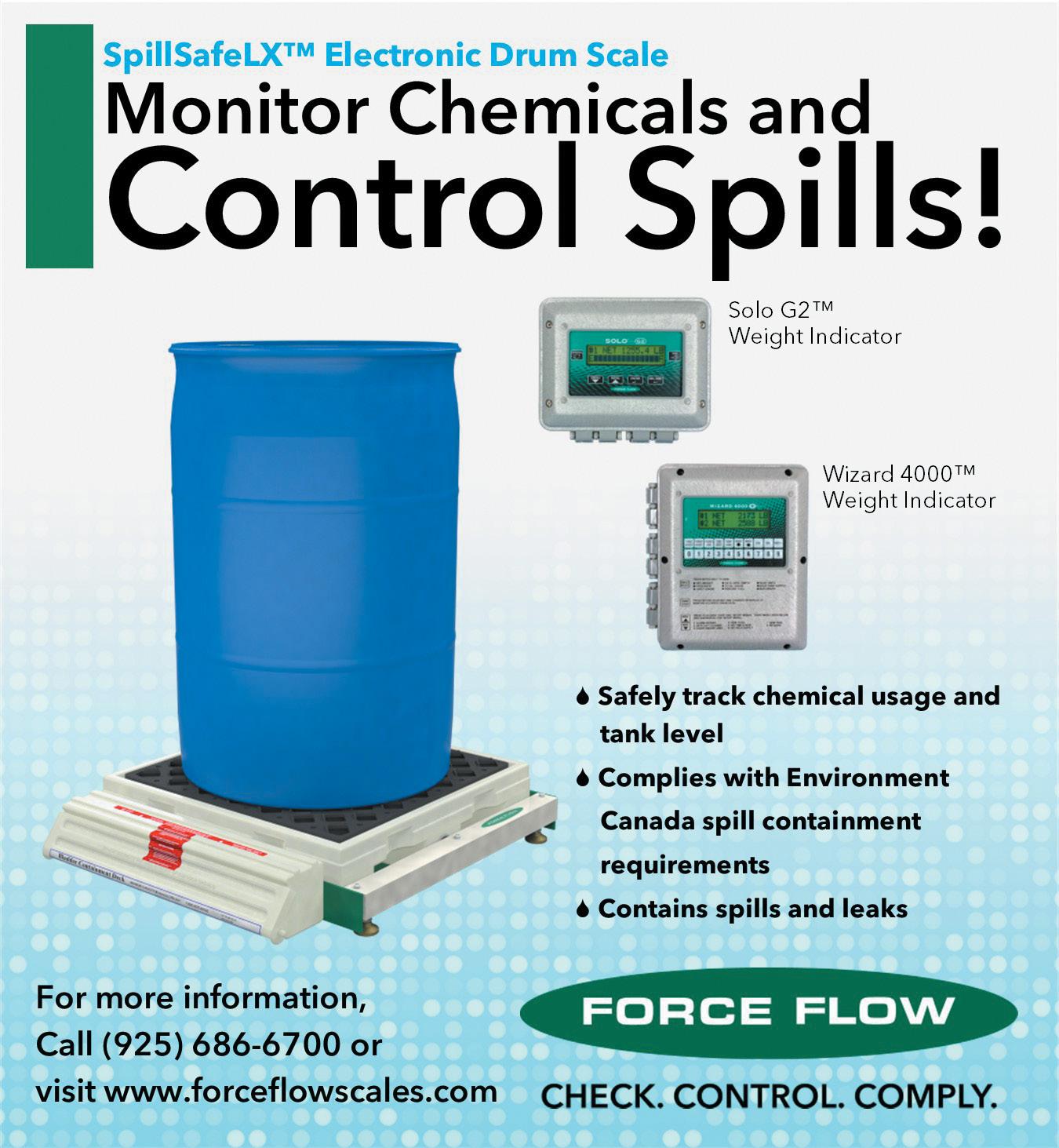
June 2024 | 33 www.esemag.com @ESEMAG
New funding showcases Ontario’s dedication to critical water infrastructure
 By Nadia Todorova
By Nadia Todorova
Apolicy and political crisis is normally years in the making, and the housing crisis across Canada is no different. Policy makers have realized changes are needed, with a comprehensive and sustained response required to realize the fix. Greater collaboration between all three levels of government in Ontario will be a must. It is with this context in mind why the Government of Ontario’s announcement of $1.8 billion in funding for water and wastewater infrastructure is so encouraging.
The announcement was made as a part of this year’s provincial budget, and is part of a broader suite of measures all designed to build more homes, support municipalities struggling to keep up with growth in their communities, and expand Ontario’s critical infrastructure. The housing crisis has galvanized the political conversation, with broad recognition that more housing supply is the answer.
However, at Queen’s Park, there is also recognition that new homes alone will not be enough. Comprehensive investment in all of the critical infrastructure needed for communities and Ontario’s economy to thrive is a must.
Ontario’s Greater Toronto Area is among the fastest growing metropolitan areas in North America. The region expects to welcome an additional 2.8 million people over the next 25 years, with 58% of that population growth destined for York, Halton and Peel Regions. The expected population growth will increase demand for water, wastewater and stormwater infrastructure, as well as other critical infrastructure like housing, transit systems, highways, and roads.

The recognition from the Ontario government for the need to modernize and expand water infrastructure across the province speaks to the successes of industry doing a better job to advocate for sensible public policy solutions and a government that is listening. Strained municipal budgets need support from higher orders of government to invest in the critical infrastructure we all require to meet the demands of growth.
Modernizing Ontario’s water and wastewater systems will go a long way to ensure the over 1 million new homes being built across the province are effectively serviced. Water, wastewater, and stormwater infrastructure are essential to accommodate growth. This new funding will connect new homes to the grid with the buildout of new infrastructure, and support municipalities upgrading the capacity of their existing systems to modernize water infrastructure in need of capital renewal.
Part of that renewal is in response to the need to adapt the water infrastructure systems to mitigate against climate-related stormwater management needs.
Increased flooding risks, strengthened environmental protections, and evolving best practices for sustainable infrastructure management will see new investments yield real benefits for communities new and old.
For industry across Ontario, this is good news. It also serves as a reminder of the importance in understanding the current environment government decision makers are operating within. At the local level, municipal budgets that took a massive hit during the COVID-19 pandemic have been slow to recover. The reality is municipal governments do not have the taxing authority nor the debt issuing authority to bridge the gap, nor do municipal revenues grow at existing tax rates like the provincial and federal balance sheets do as the economy recovers.
Research suggests that, on average across Canada, the cost of municipal infrastructure required to support new housing construction is $107,000 per home. This funding announcement and the continued focus by the Government of Ontario on infrastructure funding is
Environmental Science & Engineering Magazine 34 | June 2024 GUEST COMMENT
RCCAO board members with Ontario’s Minister of Transportation, Prabmeet Sarkaria, following an industry roundtable meeting early in 2024.
necessary and very welcomed.
New funding also goes a long way in helping municipalities address the infrastructure deficit in their communities. A 2021 Financial Accountability Office (FAO) of Ontario report, found that only 55% of municipal assets are in a state of good repair and 45% are estimated not to be in a state of good repair. There are $47 billion worth of municipal assets, the conditions of which are unknown and therefore not included in the backlog, estimated the report. If these assets were included, it is safe to say that the size of the backlog would be larger.
While the Ontario government should be applauded for stepping up and delivering for municipalities, the absence of the federal government in contributing to these critical investments is concerning.
If executed strategically, new water infrastructure that connects new homes to the grid can be laid alongside upgrades to the existing infrastructure that benefits the existing community welcoming new neighbours. In addition to building and upgrading critical infrastructure capacity, industry can help ensure municipal stakeholders realize the support available to meet the growing challenges in their own communities.
The $1.8 billion in new funding for water infrastructure is part of integrated planning and investment by the provincial government. Other recent measures include progress on Ontario’s new infrastructure bank, known as the Building Ontario Fund. The government’s $3 billion allocation to this fund offers the potential to get more projects built by leveraging public infrastructure dollars to attract additional institutional capital. Allowing for more innovative sources of funding for infrastructure work is a positive step toward ensuring that Ontario has the necessary foundation for a prosperous and competitive future.
Transportation projects, both roads and transit, are under development across the province. Expansion of the GTA’s GO Train network, LRTs, subways, and rapid bus ways in cities are in advanced stages, with projects coming online throughout the rest of this decade. Rather than getting drawn into the ideological debates of the past, former Transportation Minister Caroline
New water infrastructure that connects new homes to the grid can be laid alongside upgrades to the existing infrastructure that benefits the existing community welcoming new neighbours.
Mulroney’s Greater Golden Horseshoe Transportation Plan recognizes that roads and transit work in concert.
Government investment is bringing that long-term planning closer to reality. New and upgraded roads have featured prominently. This includes expansion of the 400 series highways, building Highway 413 and the Bradford Bypass, and ensuring critical assets like the Gardiner Expressway and Don Valley Parkway are maintained by uploading them to the provincial government.
All of these measures are proper recognition of the reality that Ontario is
one of the fastest growing regions in North America and it is imperative that governments ensure that the province has the necessary critical infrastructure for its economic competitiveness and quality of life.
Nadia Todorova is executive director of the Residential and Civil Construction Alliance of Ontario (RCCAO). Email: todorova@rccao.com
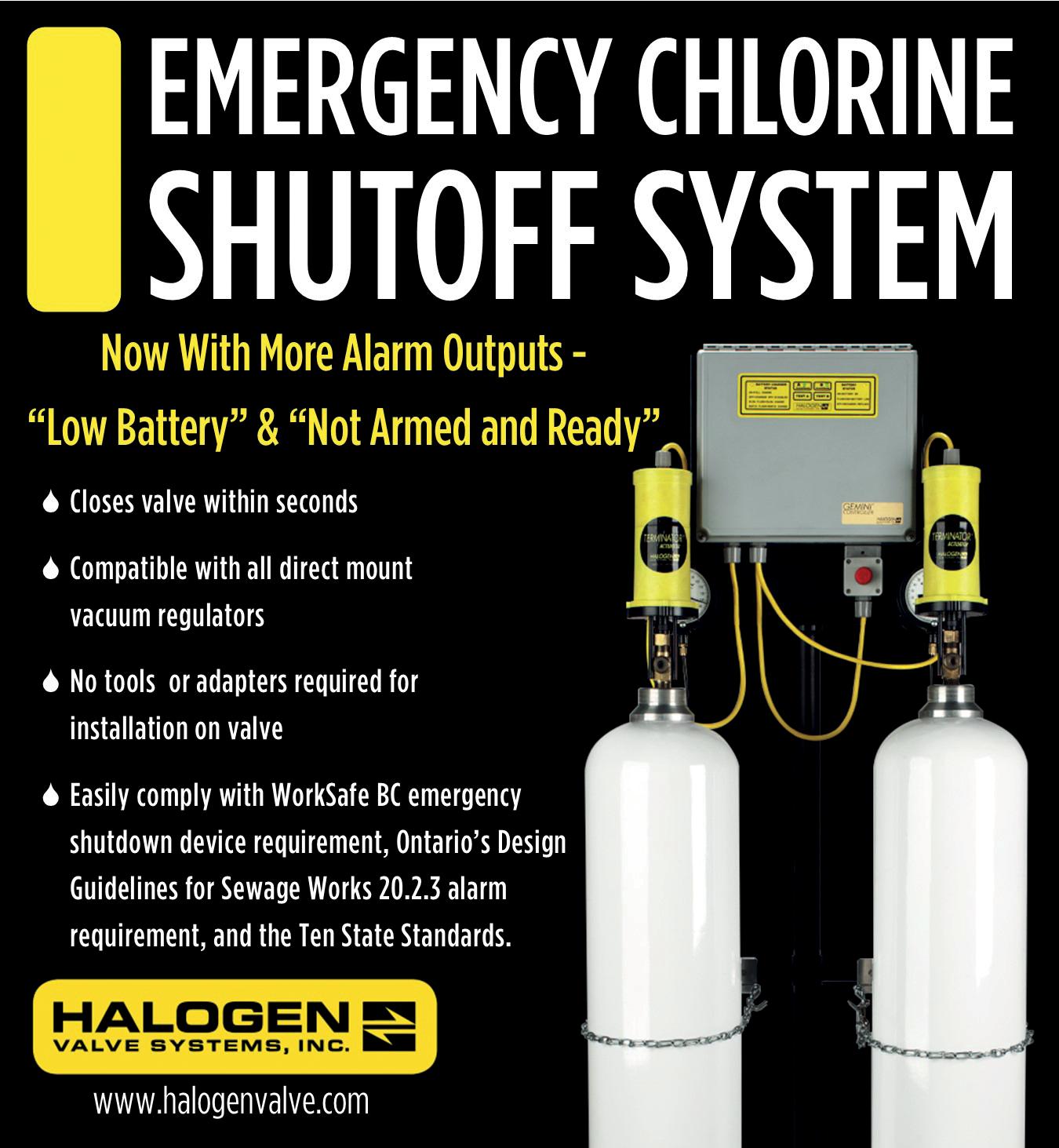
June 2024 | 35 www.esemag.com @ESEMAG
Ensuring chemical compatibility in water treatment equipment
By Jean Hendrickson
The use of chemicals is key in many aspects of drinking water and wastewater treatment, from disinfection to pH adjustment to coagulation and more. These chemicals all have specific properties and can react differently to certain materials found in the water treatment equipment, such as chemical metering pumps, and throughout the plant.
Chemical and material incompatibility can lead to increased maintenance and expense due to equipment damage or failure, as well as infrastructure damage. For well-established chemicals and materials, it may already be known which are compatible with which. But for infrequently used or proprietary products, it may not be so clear.
Caustic chemicals, such as chlorine, chloramine byproducts, ozone, and acids used in pH adjustment can corrode certain metals. This can cause contaminants to leech into the water, disrupting downstream processes or entering ratepayers’ taps. Over time it can

For commonly used chemicals, operators may already know what materials are compatible and which are not.
also cause pipes to leak prematurely and valves to fail.
Rubber, plastic, and other synthetic material can degrade and lose structural integrity when exposed to certain chemicals. This can cause leaks from pipes, gaskets, connectors, and more. In pumps, degradation of diaphragms and other components can reduce performance and require more frequent and costly maintenance and premature part replacement.
Poor chemical and material combi-





nations can result in damage to a range of equipment, including mixers, meters, pumps, and more. Filter media may also be vulnerable to specific chemical types. Again, this will result in additional costs associated with maintenance, replacement, and downtime.
Because many of the chemicals in question are caustic, volatile, or otherwise highly reactive, there is a range of health and safety risks associated with their use. If equipment or piping begins to leak, or if machinery requires emergency maintenance, it can increase those risks by exposing personnel to these chemicals or to byproducts of their interaction.
HOW TO DETERMINE COMPATIBILITY
For commonly used chemicals, operators may already know what materials are compatible and which are not. For example, liquid chlorine is safe to use with PVC, polypropylene, PVDF, and 316L stainless steel, among others. But it will corrode types of galvanized steel, copper and copper alloys, rubbers and elastomers, and certain plastics. When considering use of any chemical the operator is unfamiliar with, some investigation is in order.
In some cases, manufacturers or suppliers may offer compatibility charts. These will list the types of materials found in a piece of equipment and the chemicals that are acceptable for use with the equipment. However, at other times this information may not be so readily available.
When that is the case, it may be possible to at least get a list of the component materials. Once this is known, some research can be done to determine if the equipment will work with the chemical(s) in question.

Conversely, sometimes the unknown is the chemical itself. Proprietary chemicals, for example, may not have pub-
Environmental Science & Engineering Magazine 36 | June 2024 WATER & WASTEWATER
lished compositions. The material safety data sheet (MSDS) could potentially offer answers, but not always. When all else fails, operators or project engineers can obtain samples of the material and chemical and perform their own in-house testing. If time does not allow for that, it may be worth considering a different combination.
CONSIDER THE APPLICATION
When discussing chemical compatibility, it’s important to understand that the application in question matters. For example, PVC can be used with sulfuric acid at low concentrations (ideally around 10% to 20%) and moderate to low temperatures. However, higher temperatures can soften PVC and make it more susceptible to acids and other caustic substances, even at typically low concentrations. Operators and project engineers need to consider these factors, as well as other chemicals that may come in contact with the primary chemical in question.
It is important to balance all of these issues before choosing chemicals, equipment, and ancillary materials. In addition, project engineers should be mindful of both upfront and longterm costs. While it may initially save money to use a lower-cost pipe material, it could potentially cause increased costs in both material and labour if there are leaks or an outright equipment failure.
Whenever possible, it is worth partnering with equipment
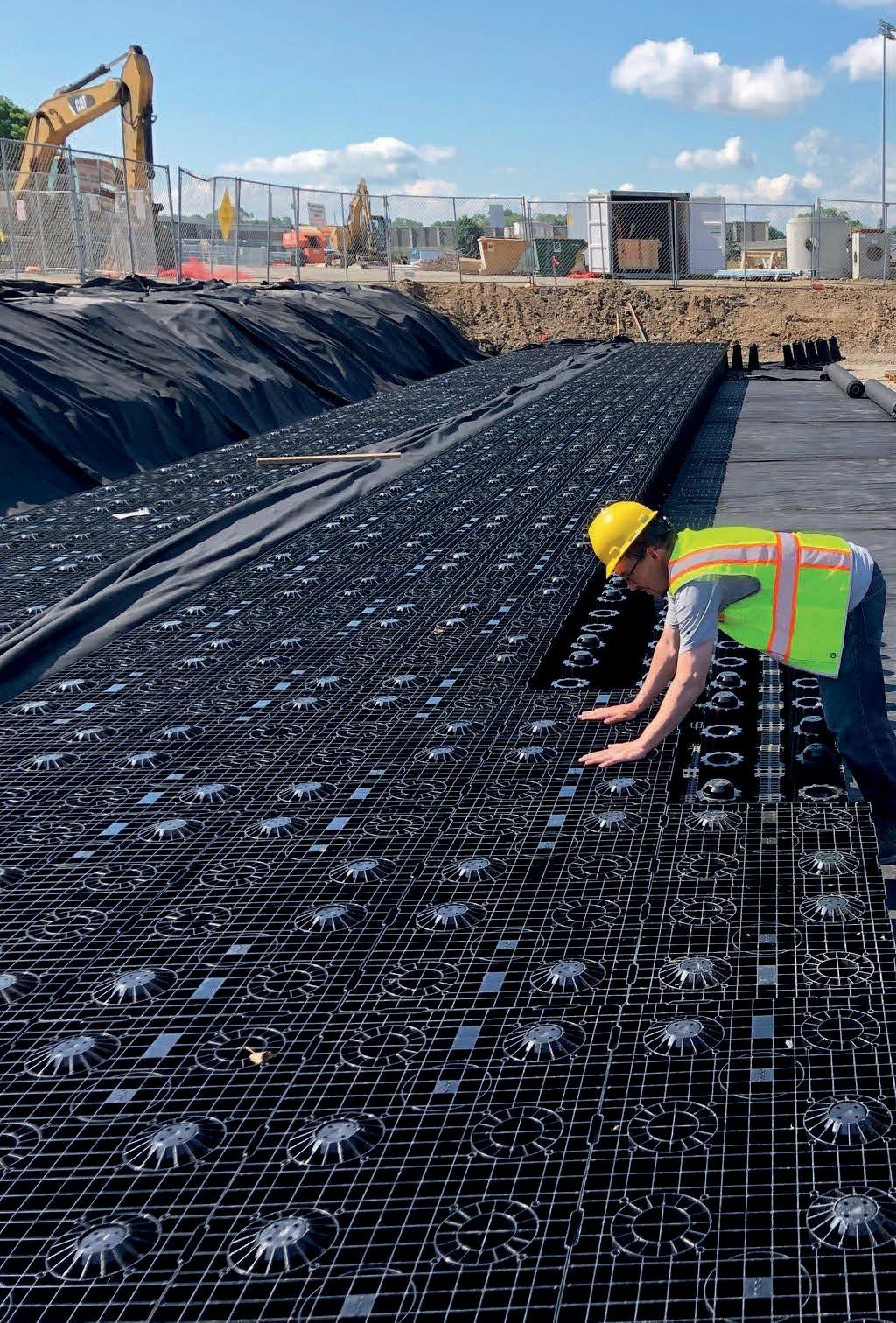
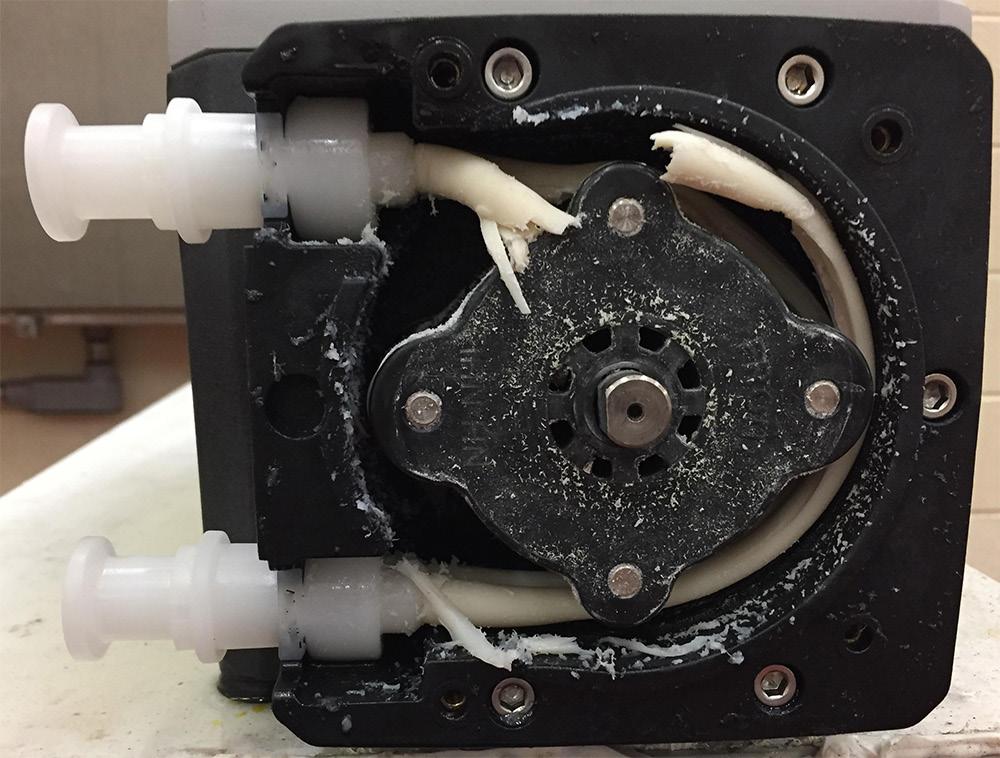
manufacturers who understand the importance of chemical compatibility and are willing to work together to find the right solution at the lowest possible cost.
Jean Hendrickson is with Blue-White Industries. For more information, visit www.blue-white.com
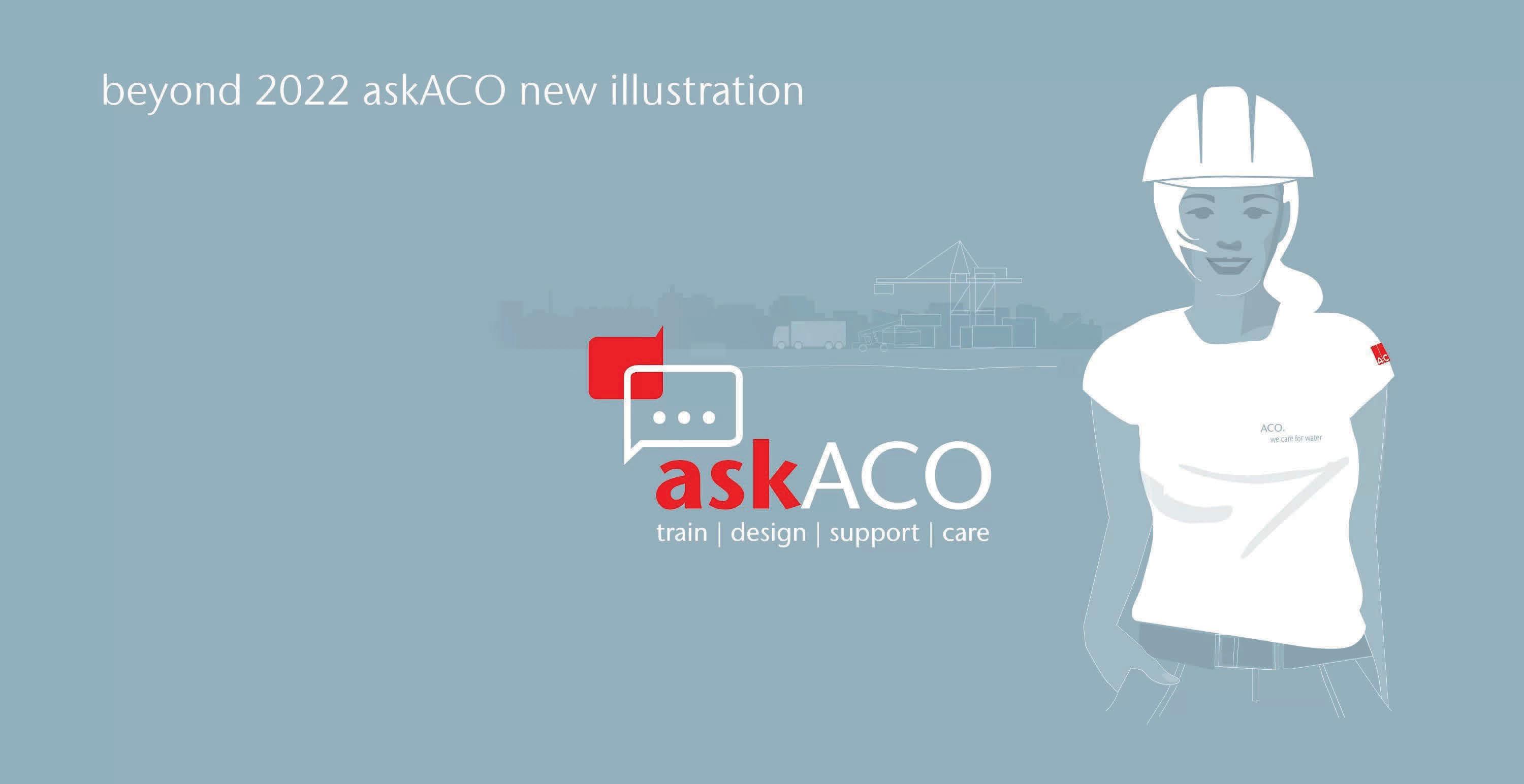


 The internal tubing of this peristaltic pump was not compatible with the chemical being metered, which caused a chemical leak.
The internal tubing of this peristaltic pump was not compatible with the chemical being metered, which caused a chemical leak.
June 2024 | 37 www.esemag.com @ESEMAG (877) 226-4255 • info@acocan.ca • www.acocan.ca www.ACOStormBrixx.ca ■ Inspectable and maintainable ■ CL-625 load capacity ■ Outstanding strength & structural stability ■ Creep tested; design life of 50 -60 years ■ Fast and easy installation
Stormwater detention and infiltration tanks www.askACO.ca
ACO
StormBrixx
How to minimize the impact of problematic wastewater from upstream distilleries and industry
By Patrick Kiely
In almost all regions of North America, municipal wastewater treatment plants (WTTPs) are surrounded by industry affecting their daily influent and resulting effluent. “Industry” has become synonymous with “unpredictability”, from the upstream distillery randomly dumping wastewater filled with high organic matter, to local manufacturing plants discharging toxic effluent.
For the WWTP operator, that means unexpected treatment challenges and headaches. For the manager, it means excessive costs and energy use for the plant. Pre-treatment programs are put in place to mitigate this impact, but they lack reliable wastewater tools and data to know what is actually being sent to the downstream WWTP.
A WWTP SUCCESS STORY FROM THE DISTILLERY HEARTLAND
The City of Frankfort, Kentucky’s wastewater treatment facility serves a population of 30,000, two upstream distilleries, and 14 industrial clients. The area is also prone to heavy wet weather events.
The Frankfort WWTP includes grit removal, an activated sludge oxidation ditch, a sludge thickener, and a two-stage aerobic sludge holding with a belt press. It has a capacity of 38 million litres per day from two collection streams – municipal and industrial. Because of this and the local weather, the plant continuously faced variable organic loading and major biochemical oxygen demand (BOD) swings.
In fact, during one year, operators had to run the belt presses 24/7 for over a month to keep up with solids production due to BOD loading. They also often came into the plant in the mornings to find the oxidation ditches had turned almost black due to toxicity issues from local industry.
After experiencing continuous influent “surprises” and resulting plant upsets, mainly related to distillery discharges, the Frankfort operations team knew they needed to better anticipate and handle sudden high organic loading and toxicity from these dischargers, and better understand the extent of the impact from rain dilution events.
They turned to Prince Edward Island based SENTRY: Water Monitoring and Control (SENTRY), which offers a real-time biological activity and water quality monitoring platform. By placing SENTRY’s zero-calibration, biofilm-based sensors in facility locations never possible before, operations staff gain the real-time influent monitoring and data points they have been needing, allowing for processes to be adjusted on the fly, avoiding kill-off events, environmental disasters and associated fines.
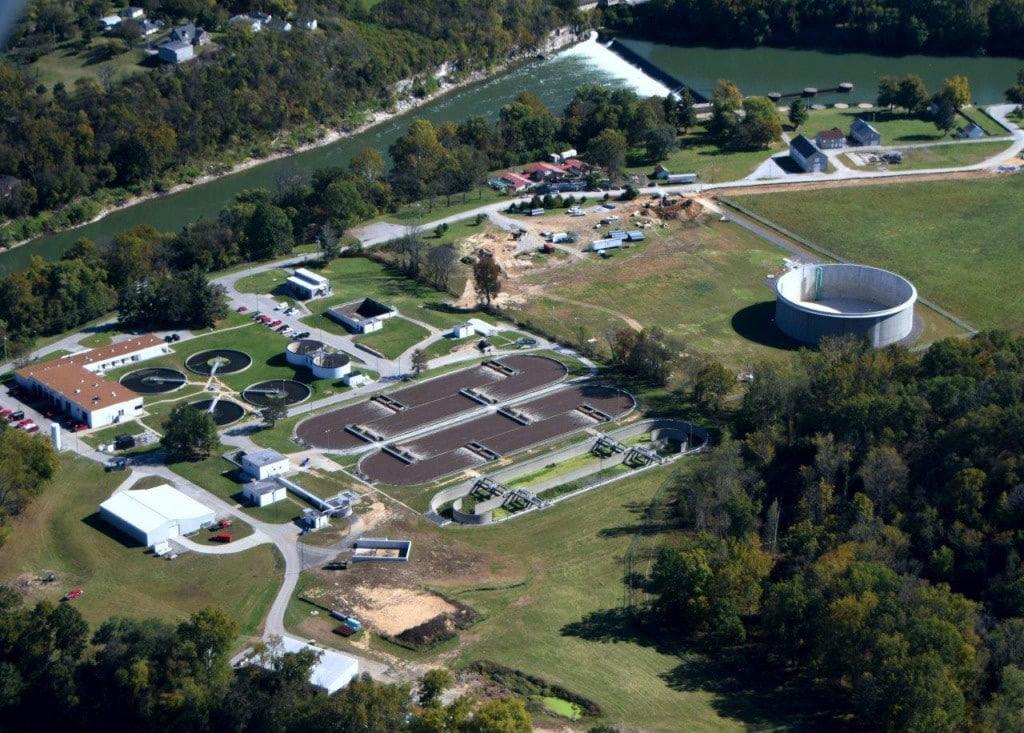
The Frankfort Wastewater Treatment Plant where they used new biofilm-based sensors to identify excessive biological loading and toxic shock events in real time, allowing them to adjust treatment processes accordingly.
EARLY VISIBILITY MEANS EARLY RESULTS
A pre-inoculated SENTRY sensor was initially placed at a location post bar screen, prior to grit removal in the Frankfort plant’s influent channel to identify high organic loading or toxic shock. Sensor data almost immediately profiled high organic loading and toxicity from upstream distillery discharges, as well as the true impact from rain dilution. One surprising recurring and weekly upset event flagged by the sensor every Wednesday was triggered by a landfill leachate delivery at a receiving lift station.
Influent visibility like this then led Frankfort to install an additional SENTRY system into their two influent stream splitter boxes as a point of earlier detection and action. This information allowed the operations team to further quantify events coming in, as well as do the following:
• Monitor the biomass health at the influent channel in real time, helping operators divert high-strength influent to a large equalization tank and meter it back in during periods of more stable influent.
• Use targeted manual sampling to capture data during upset conditions.
• Use the real-time sensor data to identify loading trends and patterns to prepare and act early with reoccurring events.
• Fine-tune process decisions during upset events to identify what works best to maintain stable effluent quality despite
Environmental Science & Engineering Magazine 38 | June 2024 WASTEWATER
changing influent conditions.
With both SENTRY systems, Frankfort’s WWTP now saves an estimated $80,000 to $120,000 USD a year and has improved its oxidation ditch loading management. The plant continues to use the two layers of defense to protect and optimize their treatment process during highly variable influent fluctuations and toxic events. They are now exploring a third SENTRY system further into the treatment process to contribute to a feed-forward aeration control process.
PROBLEMATIC INFLUENT DOESN’T HAVE TO BE A PROBLEM
The most challenging part for any treatment facility operation is a lack of real-time visibility into the characteristics of the wastewater being treated. Most tools for monitoring wastewater are either lab-based or come after treatment processes. As such, operations teams typically wait five days for sampling results. When there’s an average of over 25 problem events detected daily,

that’s a lot of process upset leading to operational challenges, additional costs, and environmental impacts.
However, problematic influent (from whatever source) doesn’t need to remain a problem if the data is available to help
stay one step ahead. Depending on a sensor’s location, this means these teams can build better pre-treatment solutions that allow then to better identify and understand organic loading, industrial discharge toxicity, toxic/imbalance events, impact of I&I (rain events), seasonal impact on plant performance, optimal aeration efficiency, optimal carbon dosing, carbon requirements and effluent wastewater quality.
Having the right data at the right time gives WWTP operators the confidence they need to turn variable influent into more predictable outcomes, with a lot less hassle and cost along the way. With the right sensor data they can now get the continuous microbial metabolic activity snapshots that directly correspond to how treatment processes will be affected by the industry around them.
Patrick Kiely is the founder of SENTRY: Water Monitoring and Control. Email: pkiely@sentrywatertech.com
Celebrating Our Award-Winning Projects & People
We’re proud to share that Associated won four awards at the Consulting Engineers of Alberta Showcase Awards in Edmonton on April 26! These awards are a wonderful recognition of our amazing staff and the creativity and innovation they put in to every project. Congratulations team!

Award of ExcellenceStudies, Software, and Special Services for the Closing the Infrastructure Gap for First Nations project, Assembly of First Nations

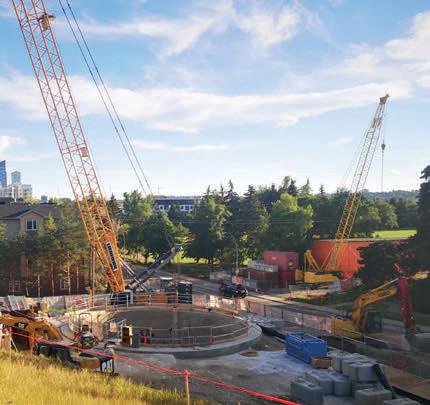
Award of ExcellenceSustainable Design for the Northwest Inner City Upper Plateau Separation project, City of Calgary

Award of Merit - Project Management for the Confederation Way Sanitary Sewer Bypass project, Regional Municipality of Wood Buffalo
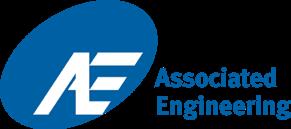

Lieutenant Governor’s Award for Distinguished Achievement awarded to Herb Kuehne
 The zero-calibration, biofilm-based SENTRY sensor.
The zero-calibration, biofilm-based SENTRY sensor.
June 2024 | 39 www.esemag.com @ESEMAG
www.ae.ca
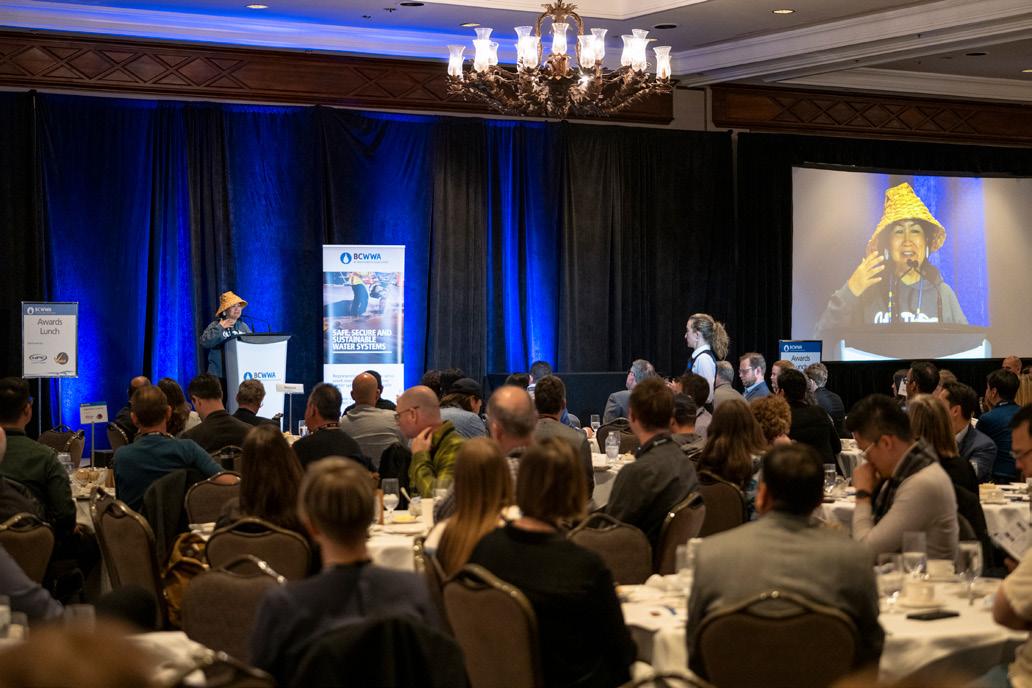
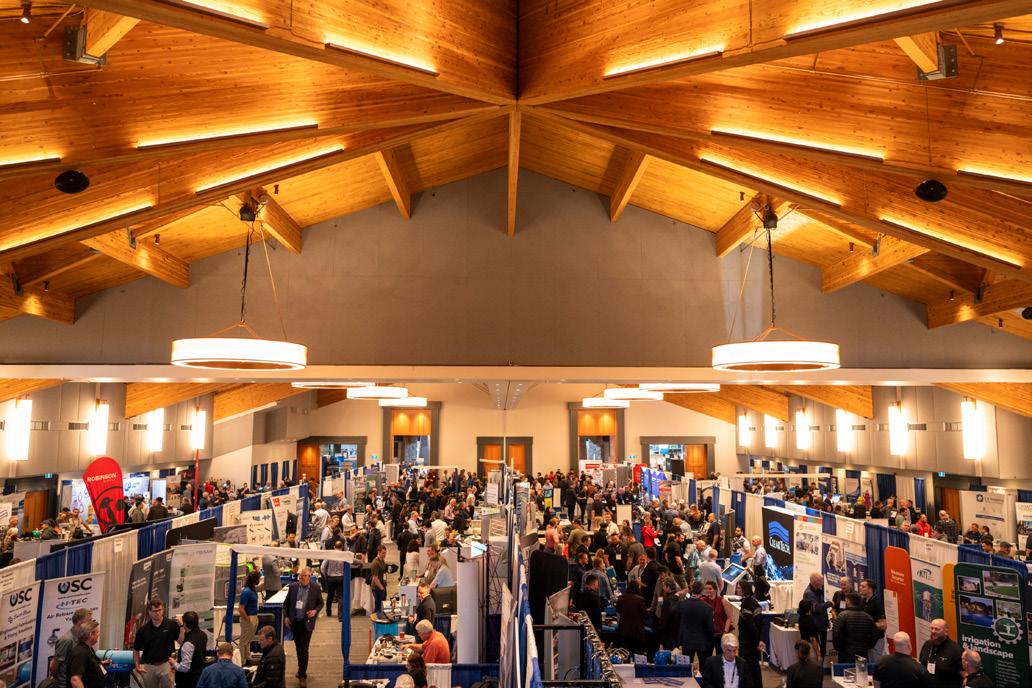
BCWWA’s annual conference & trade show returns to Whistler
By Sarah Pratt
The 52nd British Columbia Water & Waste Association (BCWWA) Annual Conference & Trade Show returned to beautiful Whistler, British Columbia, for a memorable and compelling conference. The event attracted over 1,000 water industry professionals from B.C., Yukon, and beyond, to the Whistler Conference Centre and the Fairmont Chateau Whistler from April 28 - 30.
This year, our conference focused on “The Ripple Effect: When Action Becomes Change.” In our work and life, we create our own ripples that interact with others in complex ways, and this was an opportunity to address challenges, learn from each other and dive into the bigger questions facing the water sector. This theme led our two-day education program, with over 120 presentation sessions from knowledgeable industry speakers and leaders.
We began the education sessions with a poignant welcome by cultural ambassadors from the Squamish Lil’wat Cultural Centre. It was a deeply valuable experience to have so many passionate professionals and leaders from the sector together in one place. We appreciate everyone’s contributions, learning and
ideas as we continue to strengthen our knowledge of new challenges in the sector.
A key part of the event was a packed two-day trade show with over 130 exhibitors! We also introduced a new “rapid-fire” format to the Industry Innovation Showcase by inviting select exhibitors to present the latest innovations in the water sector.
Later in the conference, we were pleased to bring back the “Best of the Best” Tap Water Taste Test to our conference for a fun and friendly competition between municipalities to determine which has the best-tasting tap water.
We were pleased to welcome a panel of esteemed judges, including Resort Municipality of Whistler’s Acting Mayor Jeff Murl, Whistler Chamber of Commerce and Fairmont Chateau Whistler Director Wendy Hargreaves, American Water Works Association Representative Gluzen Ramos Ong, and Water Environment Federation Trustee Tracy Ekola.
After deliberation, we wish to congratulate Phantom Creek Estates Winery of Oliver, B.C., who took home the “Best of the Best” title.
On the final day of our conference, we hosted a special sit-down Awards Lunch to meet the incoming BCWWA Board
of Directors and BCWWA President, as well as to celebrate this year’s BCWWA Award and Student Design Competition Winners.
We were also honoured to have Maxine Bruce from the Lil’wat Nation share the connections of the Lil’wat people to the land and water since time immemorial and the importance of protecting their land and resources in the face of climate change.
We closed the final day of our conference with a wrap reception on the stunning rooftop terrace of the Fairmont Chateau Whistler, which featured live entertainment and an opportunity to network with other water industry members.
If you didn’t get a chance to attend this year’s annual conference, we hope you join us next year in Victoria, B.C., April 27 – 29, 2025.
Sarah Pratt is with the BC Water & Waste Association.
For more information, visit bcwwaconference.org
Environmental Science & Engineering Magazine 40 | June 2024 CONFERENCE REPORT
Left: Environmental steward and elected official of the Lil’wat Nation, Maxine Bruce, addresses delegates during the awards lunch. Right: Over 130 exhibiting companies meet with delegates at BCWWA’s annual trade show.








TORONTO CANADA 11-15 AUGUST 2024 Organised by Co-organisers Supporting partner www.worldwatercongress.org Shaping Our Water Future IWA World Water Congress & Exhibition 2024 Opportunities for Innovation and Action Register now Exhibit Sponsor
Study shows CAC can be injected to prevent PFAS-contaminated groundwater from moving further
By Rick McGregor and Ryan Moore
The injection of colloidal activated carbon (CAC) is a highly effective method to slow the movement of PFAS (per- and polyfluoroalkyl substances) in groundwater long-term, according to a team of leading environmental scientists.
Using data from a high-concentration PFAS site where aqueous film-forming foam (AFFF) was released into the environment, their research shows that a typical in-ground (i.e., in situ) CAC permeable barrier can stop an advancing PFAS contaminant groundwater plume for over 60 years. In the process, it passively treats two billion litres of groundwater to non-detect PFAS levels with no pumping or waste generation.
The research team, led by Dr. Grant Carey of Ottawa-based Porewater Solutions, published their research in the Winter 2024 issue of Remediation. “Analysis of Colloidal Activated Carbon Alternatives for In situ Remediation of a Large PFAS Plume and Source Area,” by Carey
et al., serves to further demonstrate how the patented CAC material can be most effectively used to treat PFAS.
The study aimed to determine the optimal location(s) within an advancing PFAS contaminant groundwater plume where CAC can be injected to prevent the plume from moving further for at least 30 to 40 years. After CAC injection, PFAS will adsorb to the CAC that is attached to soil particles, resulting in the immobilization of PFAS in the CAC zone. The effects of CAC injections applied at the downgradient plume boundary, midplume, source area, and combined treatments in these areas were assessed.
The authors state that at some sites, there is an urgent need for in situ remedial alternatives which may be used to reduce the PFAS mass flux from a source area or across a downgradient property boundary. However, evaluating the longer-term performance of these remedies through modeling is necessary since the earliest in situ PFAS treatment using
CAC has only been in place for less than a decade.
A computer model was created to map PFAS contaminant movement over time. The model was based on actual PFAS contamination data and geologic information obtained from a U.S. Department of Defense (DoD) facility in South Dakota. The site has relatively high PFAS contamination, with concentrations in the top 25% of AFFF-release sites reported by the DoD.
According to the numerical model, a typical CAC barrier installed at the plume boundary would theoretically contain PFAS behind the barrier for over 60 years, effectively doubling the treatment longevity goal (Figure 1). Placing the barrier at the leading edge of the contaminant plume was determined to be the optimal location to prevent PFAS plume migration.
For this specific modeling scenario, adding a CAC barrier at an upgradient plume location would be minimally

Environmental Science & Engineering Magazine 42 | June 2024 WATER
Figure 1. Two-dimensional model simulation depicting a perfluorooctanoate (PFOA) plume in groundwater being contained for 60 years behind a CAC barrier placed at the downgradient plume edge (produced from Carey, et al., 2024, Supporting Information).
effective at extending the barrier’s lifetime. However, treatments applied to the source area or mid-plume would be expected to have more pronounced effects at many sites where the travel times for PFAS to reach the leading plume edge are shorter.
The modeled CAC barrier will treat 30 million litres of groundwater annually as it passes through the barrier, equating to approximately two billion litres of groundwater treated over the barrier’s 60-plus-year lifespan. The barrier eliminates the need for pumping PFAS-contaminated groundwater to the surface for treatment, thereby eliminating energy consumption and PFAS waste generation.
Extending the life of a barrier would likely only require “injecting over a smaller portion of the original injection footprint.” The model for this site estimates that less than 20% of the barrier’s original length targeting the plume core would need to be replenished to extend .the life of the barrier well beyond years.
The new study supports previously
A typical CAC barrier installed at the plume boundary would theoretically contain PFAS behind the barrier for over 60 years, effectively doubling the treatment longevity goal.
published research by Carey et al. assessing the longevity of CAC-based remedies for treating PFAS in groundwater. While these sites use predictive modeling to estimate treatment longevity, several sites remediated using this approach have maintained PFAS at or near detection limits for multiple years, including the first-ever in situ PFAS treatment implemented at a site in Central Canada in 2016. The initial results were published in the Remediation: “In situ Treatment of PFAS-Impacted Groundwater using Colloidal Activated Carbon,” by McGregor et al. (2018).
Numerous other research projects examining CAC’s effectiveness in treating PFAS are ongoing. Meanwhile, CAC technology continues to demonstrate outstanding performance across more than 50 PFAS-contaminated sites treated globally, emerging as a leading alternative to eliminate PFAS exposure risk.
Rick McGregor is with InSitu Remediation Services Ltd. Email: rickm@irsl.ca. Ryan Moore is with REGENESIS. Email: rmoore@regenesis.com





June 2024 | 43 www.esemag.com @ESEMAG
Buffer zone monitoring strategies to detect leachate in groundwater
By Paul F. Hudak
Older, unlined landfills often release leachate that contaminates soil and groundwater. However, leachate can also seep through small holes in lined landfills. At breached landfills, timely and effective source control and groundwater cleanup protects groundwater supply wells and natural discharge areas, such as streams and wetlands. Preventing contaminated groundwater from moving offsite is a key objective for landfill managers.
An important consideration is the number of monitoring locations (wells) in a detection monitoring network. Efficient networks facilitate timely detection with relatively few wells. Such efficiency is desirable, because installing wells and monitoring them becomes costly over many years. Typically, detection wells near landfills are sampled in the field quarterly or semi-annually, and laboratory technicians measure concentrations of numerous analytes in the samples.
Detection networks often comprise many wells, especially at larger facilities, to account for unknown locations of future releases. Moreover, holes in modern landfill liners tend to be small, and narrow source widths in the cross-gradient dimension are difficult to detect with few wells. Typically, detection wells occupy a buffer zone between a landfill and property boundary but are near the hydraulically downgradient boundary of the landfill.
Ideally, any contaminant plume that emerges from a landfill should be detected and controlled within its buffer zone. Case-specific conditions, including property boundaries, nearby water wells, surface water, and the costs and benefits of early release detection, should be considered when defining buffer zones in practice.
Previous work showed that locating wells along the midlines of equal-spaced flow tubes is more efficient than spacing
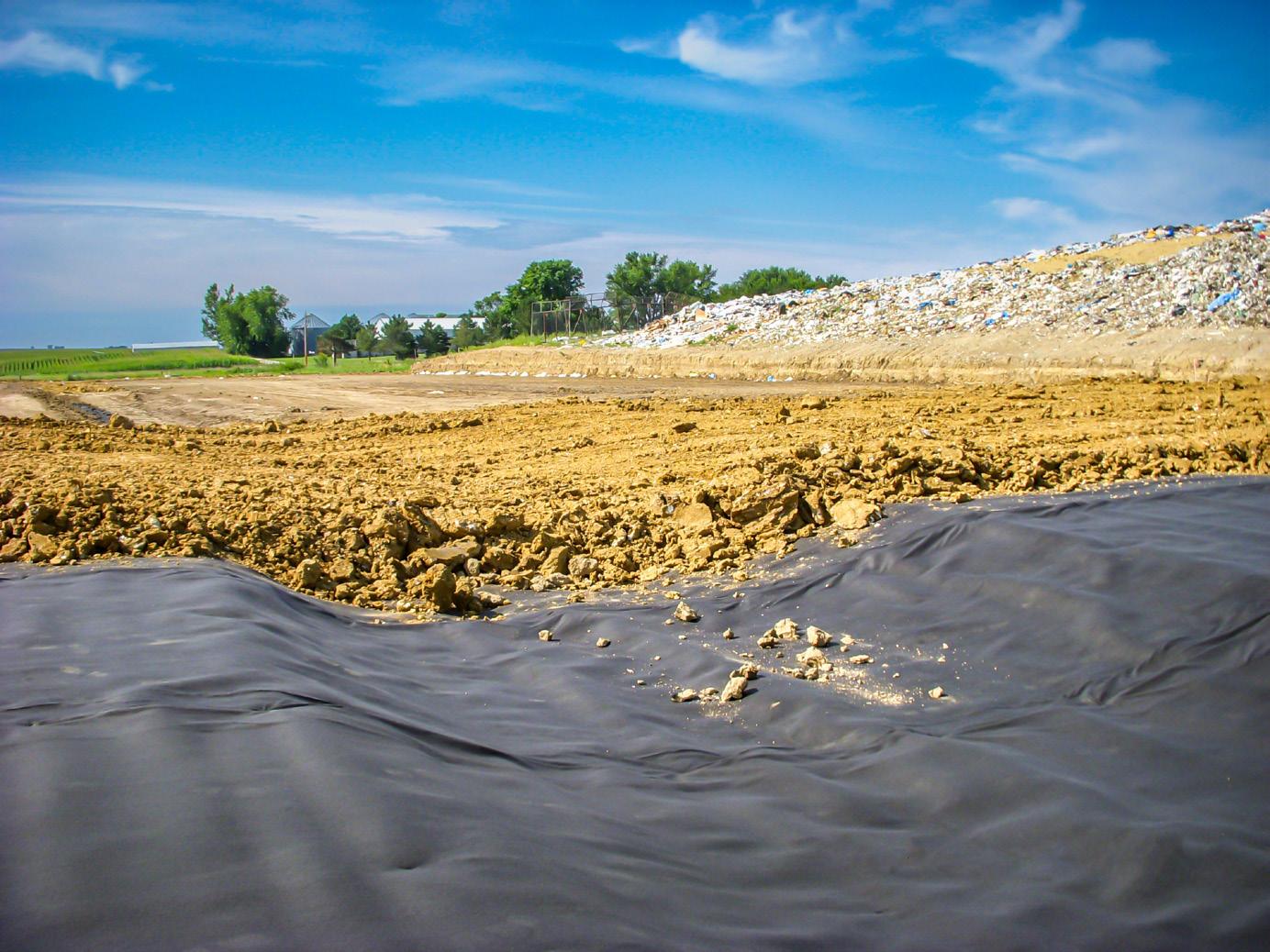
them equally along the perimeter of a landfill (Hudak, 1998). When establishing flow tubes, using the middle trajectory of a range of possible trajectories is effective in uncertain flow fields.
Further gains in efficiency may be possible by placing wells at varying distances from a landfill’s downgradient boundary. Effectively, longer setbacks take advantage of a contaminant plume’s tendency to widen with hydrodynamic dispersion as it travels hydraulically downgradient from a source. This study describes a variable-distance heuristic for designing detection networks near landfills and compares a resulting network with an alternative, equal-distance network.
METHODS
Equal-distance and variable-distance detection networks were designed for a hypothetical lined landfill above an alluvial sand aquifer (Figure 1). The landfill’s
downgradient corner is 150 metres from a buffer zone (property) boundary. In the equal-distance network, flow tubes of equal width were overlaid on a map of the landfill. Wells were located along the midlines of flow tubes, each placed 10 metres hydraulically downgradient of the landfill (Figure 1).
A numerical mass transport model (Zheng and Wang, 1999) was used to find the maximum width of flow tubes (minimum number of wells) in the equal-distance network to detect a contaminant plume originating from any cell (point source) within the landfill. Model simulations focused on contaminant plumes originating at the downgradient corner of the landfill, which are relatively small when reaching maximum allowable size, at the time they reach the buffer zone boundary. Given specified model parameters (below), a detection well spacing narrow enough to detect downgradi-
Older, unlined landfills often release leachate that contaminates soil and groundwater. However, leachate can also seep through small holes in lined landfills.
Environmental Science & Engineering Magazine 44 | June 2024 GROUNDWATER
ent-corner plumes would also detect wider upgradient plumes. The finite-difference model comprised one layer, 380 columns (trending north-south), 310 rows (trending east-west), and 117,800 cells. Calculation points (nodes) at cell centres were 1.0 m apart along columns and rows. Hydraulic head was 4.000 metres and 2.105 metres at the farthest west and east columns, respectively. These measurements were from a datum at the base of the model. No groundwater flowed across the northern or southern boundaries of the model, nor across the base of the model (Figure 1).
Eastward, the hydraulic gradient averaged 0.005. Other variables included: hydraulic conductivity = 1.5 m/day, effective porosity = 0.25, longitudinal dispersivity = 1.0 m, transverse dispersivity = 0.1 m, effective molecular diffusion coefficient = 0.00001 m2/day, point source concentration = 100 mg/L, and plume boundary concentration = 1.0 mg/L.
Alternatively, a variable-distance network was designed using a five-step graphical heuristic, with tangent and overlapping plumes originating along the landfill’s downgradient boundary (Figure 2):
1. Simulate outermost contaminant plumes, originating at the cross-gradient corners of the landfill and ending at the buffer zone boundary.
2. Continue simulating plumes originating along the downgradient boundary, progressively inward (closer to the downgradient corner), and identify (map) the plumes tangent to the cross-gradient plumes.
3. Repeat the process in (2), finding successive inward tangent plumes, until reaching the downgradient corner.
4. With additional simulations, find a final plume that evenly overlaps the innermost plumes.
5. Place monitoring wells at tangent points, or the midpoint of overlap, between adjacent plumes.
The heuristic positions monitoring wells to detect: (a) adjacent plumes, and (b) plumes from downgradient boundary sources between those producing adjacent plumes. Moreover, networks capable of detecting downgradient boundary sources are also capable of detecting other (upgradient) sources, which generate wider plumes at the time they contact the buffer zone boundary.
RESULTS AND DISCUSSION
The equal-distance network comprised 16 wells evenly spaced (9.4 m) in the direction perpendicular to groundwater well (Figure 1). However, actual well spacing (29.2 m) far exceeds 9.4 m along the shorter downgradient boundary segment, due to its more parallel orientation to groundwater flow.
Few wells are needed to detect contaminant plumes originating along downgradient boundaries that are nearly parallel to groundwater flow, because the cross-gradient width of the boundary is small. Indeed, only one downgradient well is needed to detect contaminant plumes originating along a boundary that is precisely parallel to the hydraulic gradient.
In contrast, actual spacing (9.9 m) between wells along the longer downgradient boundary segment only slightly exceeds 9.4 m, due to its more perpendicular orientation to groundwater flow. Downgradient boundaries nearly perpendicular

1. Map view of equal-distance network (dots) near landfill (rectangle); dashed lines bound flow tubes.
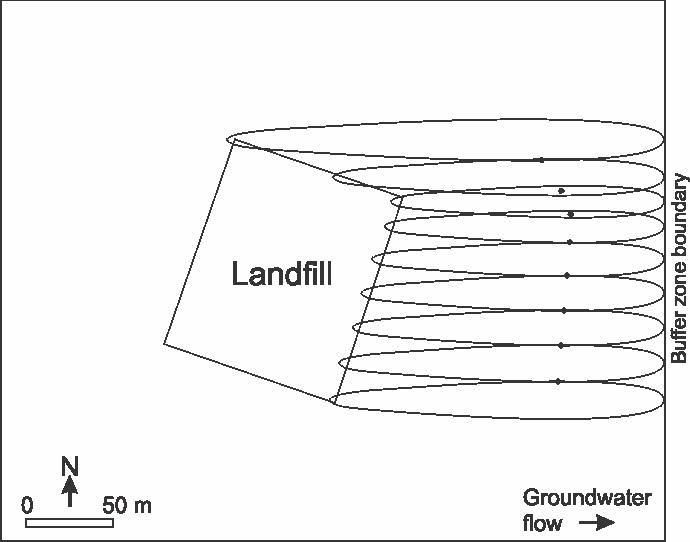
2. Map view of variable-distance network (dots) and boundaries (1 mg/L) of contaminant plumes originating along landfill’s (rectangle) downgradient boundaries.
to the hydraulic gradient have a wide cross-gradient dimension. In this case, if the longer downgradient boundary was precisely perpendicular to groundwater flow, the actual well spacing would be 9.4 m.
In the variable-distance network (Figure 2), distance between the downgradient boundary and monitoring wells, measured along the hydraulic gradient, is variable rather than constant. Wells are located approximately where contaminant plumes achieve maximum width inside the buffer zone. Detection wells are set back farther from the landfill near its cross-gradient corners, because contaminant plumes emerging there achieve larger size, due to longer travel within the buffer zone (Figure 2).
Along the hydraulic gradient, distance from the landfill to variable-distance wells ranges from 63% to 67% of the available distance within the buffer zone. In contrast, equal-distance wells are located only 4% to 7% of the available dis-
continued overleaf…
Figure.
Figure.
June 2024 | 45 www.esemag.com @ESEMAG
tance from the landfill to the buffer zone boundary. Thus, the variable-distance network achieved greater efficiency by using much more of the available buffer zone space.
While the variable-spaced network is efficient, it delays time to first detection and thus onset of remedial action. For the equal-distance network, contaminant plumes travel a minimum distance of 10 metres past the landfill before first detection. With the variable-distance network, in this example, plumes travel at least 99 metres before first detection.
This example involved specified variables, but uncertainty would compound the network design problem. For example, narrower sources (in the cross-gradient dimension) would require a smaller well spacing and thus more wells. Similarly, a smaller lateral dispersivity of the aquifer medium, the primary parameter controlling plume width would require more wells. Heterogeneous hydraulic conductivity fields would produce more contorted plumes, potentially requiring more
wells. Reducing the spacing between wells, a conservative measure, would help address parameter uncertainty.
Once detected, additional monitoring wells and in some cases geophysical techniques, such as electrical conductivity, or resistivity, can be used to define the actual shape of a contaminant plume to guide remedial action. In practice, the shape of a contaminant plume, and the location of its associated point source, tend to be unknown at first detection. However, the location of the first well that detects a contaminant plume can establish a plausible upgradient subarea, in the footprint of the landfill, likely containing the point source.
Remedial action might involve repairing a leak, monitored natural attenuation of a leak and associated plume, or additional steps to reduce the size of a plume.
CONCLUSION
Alternative contaminant detection configurations in groundwater were
designed for a hypothetical landfill using different buffer zone strategies. An equal-distance network comprised 16 monitoring wells located 10 metres downgradient along midlines of equalspaced flow tubes. A variable-distance approach used more buffer zone space and required only eight wells. Results of this study suggest that using more buffer zone space can facilitate more efficient monitoring networks, but also delay time to first detection.
Paul F. Hudak is with the Department of Geography and the Environment at the University of North Texas. Email: hudak@unt.edu. References are available upon request.
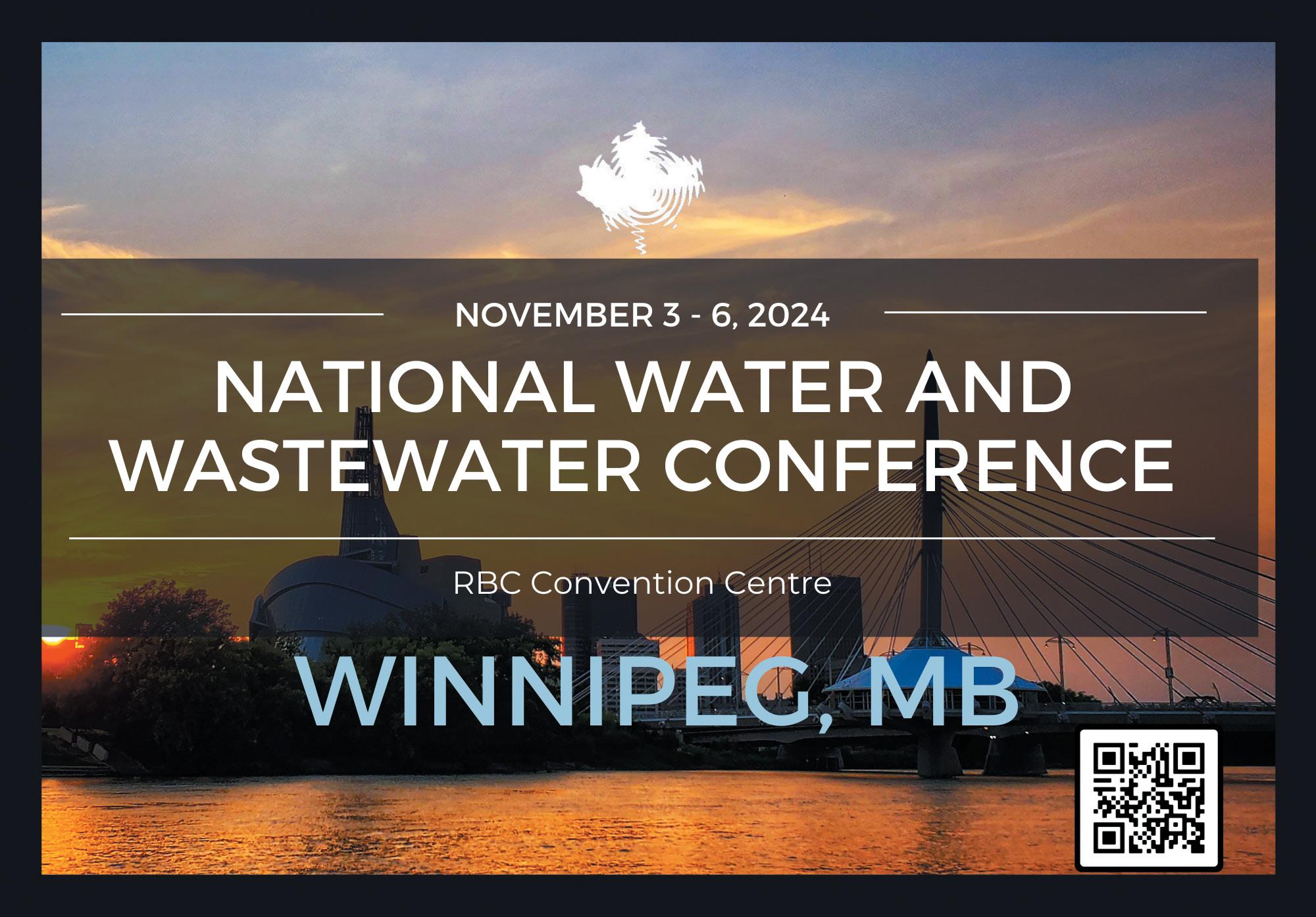
Environmental Science & Engineering Magazine 46 | June 2024 GROUNDWATER
www.canect.net
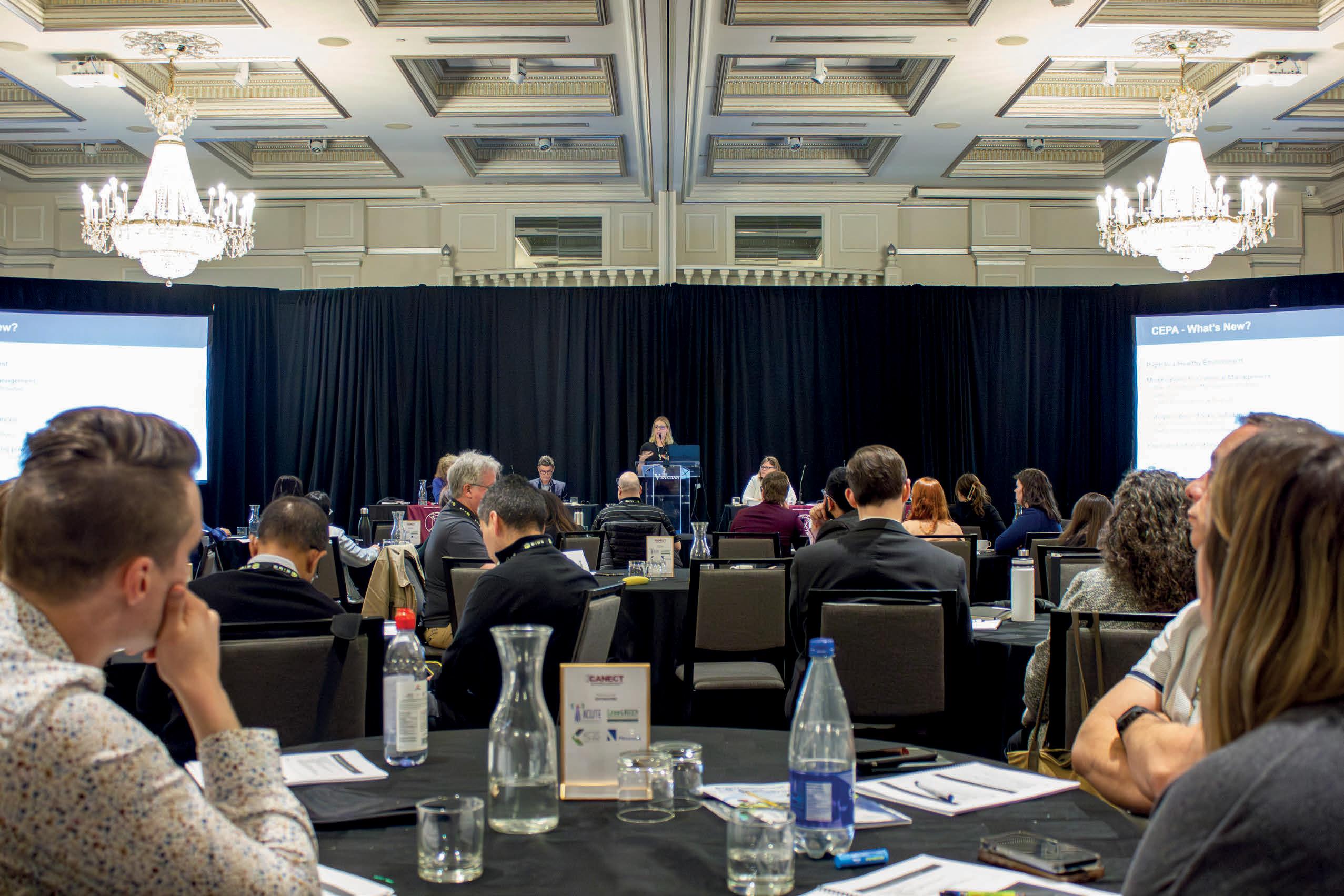
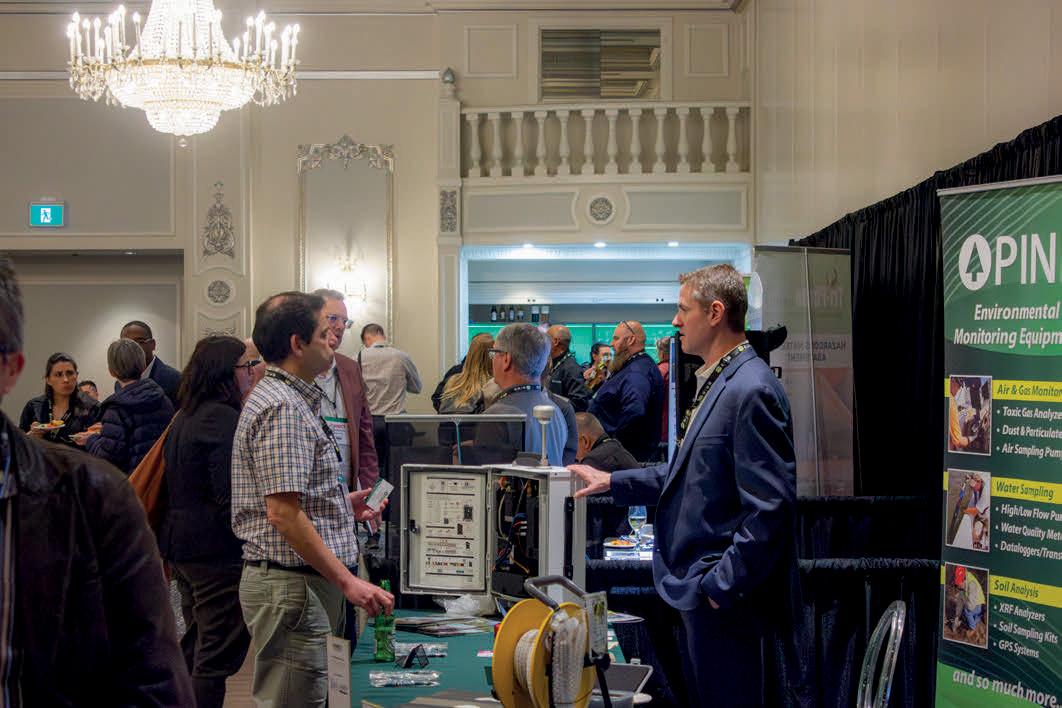
Thank you to everyone who participated in this year’s CANECT Environmental Compliance and Due Diligence Training Event. We look forward to seeing you at CANECT 2025!
SPONSORS & PARTNERS


COURSE CHAIR COMPANIES

EXHIBITORS
Acute Environmental & Safety Services
Blue Heron Environmental completewaters
Dragun Corporation

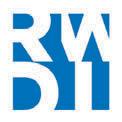


KGS Environmental Group Inc.
LimeGREEN Equipment Inc.
Neothane Inc.
OACETT
Pine Environmental
SciCorp International
Testmark Laboratories Ltd
Trinity Consultants Inc.
Tri-Phase Group
Check valve installation considerations to maximize backflow prevention performance
By Lea Clauson
Check valves play a crucial role in backflow prevention, safeguarding pumps and compressors within a process system, as well as preventing the flooding of wet wells. Proper selection and installation will prevent premature wear of the valve and an unscheduled shutdown.
The keys to successful check valve performance are valve selection, size, pipeline installation, and cost of ownership. Time spent evaluating these key considerations will maximize check valve operational performance.
The design of the pumping system should be evaluated before selecting a check valve. First, consider whether the pump system design has potential surge issues. If surge issues are a concern, then an investigation should be performed by a valve manufacturer. The surge investigation may determine whether a pump control valve is better suited for the application than a check valve.
KEY CHECK VALVE CONSIDERATIONS
Selecting the appropriate style check valve starts with understanding the process media. The type of media, whether it is clean, abrasive, corrosive, or slurry, determines what style of check valve should be selected. For clean service, check valve styles such as slanting disc, double door and silent are most common for low head loss, large pipe or quick closure requirements.
Although rubber flapper and swing check valves can be used for clean applications, they are typically used in wastewater applications. These valves are more suitable for abrasive/corrosive/ dirty applications and rapid flow reversal. Swing check valves are commonly used for pump discharge applications due to control options that accommodate varying forward and reverse flow conditions.

Although 10 pipe diameter lengths are specified in MSS-SP-94 for check valve installation downstream from pumps, many facilities achieve acceptable performance with five pipe diameter lengths from pumps after checking with the valve manufacturer.

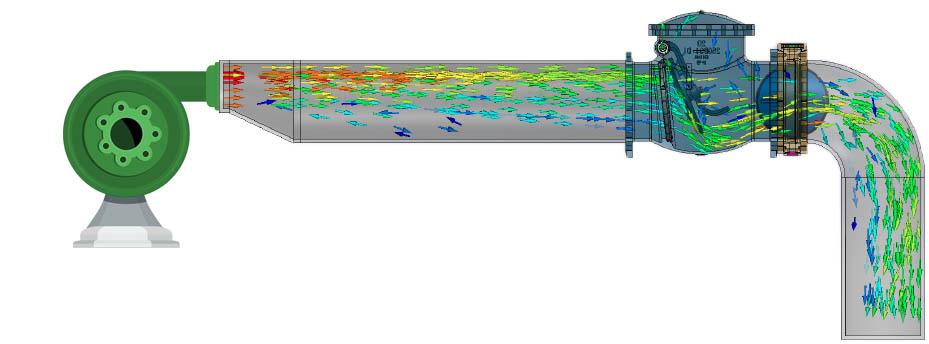
Correct valve size is important to performance and it may or may not be the same as the pipeline size. For best valve performance, sizing calculations for minimum, normal, and maximum flow conditions are necessary to optimize valve life and minimize valve maintenance. The American Water Works Association standard (AWWA C508) for swing check valves states, “Valves may be subjected to excessive wear if there is insufficient flow to open the valve.”
Rubber flapper valves are typically sized to be fully closed or fully open with sufficient flow. Conversely, full waterway swing check valves are not typically
sized for full open, but are sized for lowest acceptable head loss per the design. If the valve is sized too large and normally operates nearly closed, the disc connection can be worn. Premature wear can occur on the disc connection through vibration, oscillation and force until the metal connection is ground away and no longer allows the disc to seat properly in the valve body.
Valve installation in the pipeline is a critical consideration to the success of the check valve. The recommendation by Manufacturers Standardization Society of the Valve and Fittings Industry (MSS SP-92) is to install a check valve at
Environmental Science & Engineering Magazine 48 | June 2024 VALVES
(Left) Unbalanced dynamic forces on the disc from the increaser caused the disc to wobble and wear the connecting parts. (Right) Moving the check valve further away from the increaser decreased turbulence and allowed flow to become more laminar through the valve.
a minimum of 10 pipe diameters of straight pipe on the downstream side from tees, fittings, increasers, or pumps and five pipe diameters from elbows to ensure laminar flow with minimum turbulence to minimize disc movement and premature wear.
However, many facilities with smaller footprints have achieved acceptable performance in systems with the check valve installed five pipe diameter lengths of straight pipe from the downstream side of tees, fittings, increasers, or pumps, and three pipe diameter lengths from elbows.
The goal of design planning is to minimize the facility footprint without compromising equipment performance. Equipment will last longer under laminar flow and with no sudden changes in flow velocity.
Sudden changes in flow velocity occur during a sudden pump shutdown when the flow reverses and is stopped by the closing of the check valve. This sudden stop in fluid flow or flow velocity change instantly reduces the pressure below the vapour pressure and may cause momentary column separation.
The vacuum created by the column separation draws the two columns together violently. When the columns rejoin it creates a high-pressure shockwave also known as water hammer. Water hammer creates a loud banging sound which is disruptive and the accompanying pressure surge may or may not be destructive, if left untreated.
Eddies can form at the bottom of pipe diameter increasers and create turbulent flow through the check valve. Moving the check valve away from the increaser removes the eddies and creates a more laminar flow through the check valve. Another way to ensure more laminar flow is to limit the size of the increaser between the pump and check valve so it is not greater than two pipe sizes.
When selecting the proper check valve, it is important to consider the total cost of ownership, which includes initial, operating and maintenance costs. An inexpensive check valve may cost less at startup, but may cost more in the long run with unscheduled maintenance and downtime than a valve that is better suited for the application. The more suitable valve will perform better, require less maintenance, and provide system longevity.
FIELD EXPERIENCE
Check valves that are failing are often caused by installations too close to pumps and increasers. In addition, there is a tendency in design planning to oversize discharge pipes for future expansion, which then requires extreme reducers to fit the pump size. Both these issues create turbulent flow that can wear the disc and pin connections and cause premature check valve failure.
Ideally, the pipe distance between the pump and check valve should be calculated at the design phase of the project. For existing facilities, one solution is to move the check valve further away from the pump to achieve a more laminar flow, preferably no more than five pipe diameters. If there are space limitations and moving the valve is not an option, then consider another style of check valve. Another solution is verifying the check valve is properly sized for the process conditions and, if
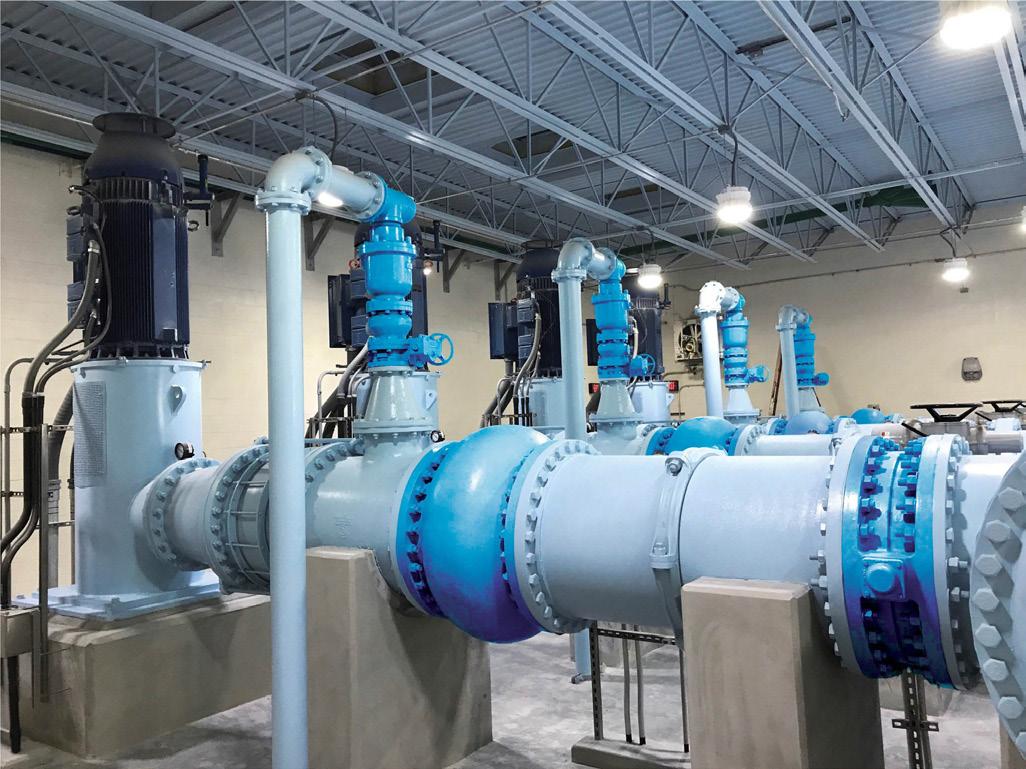
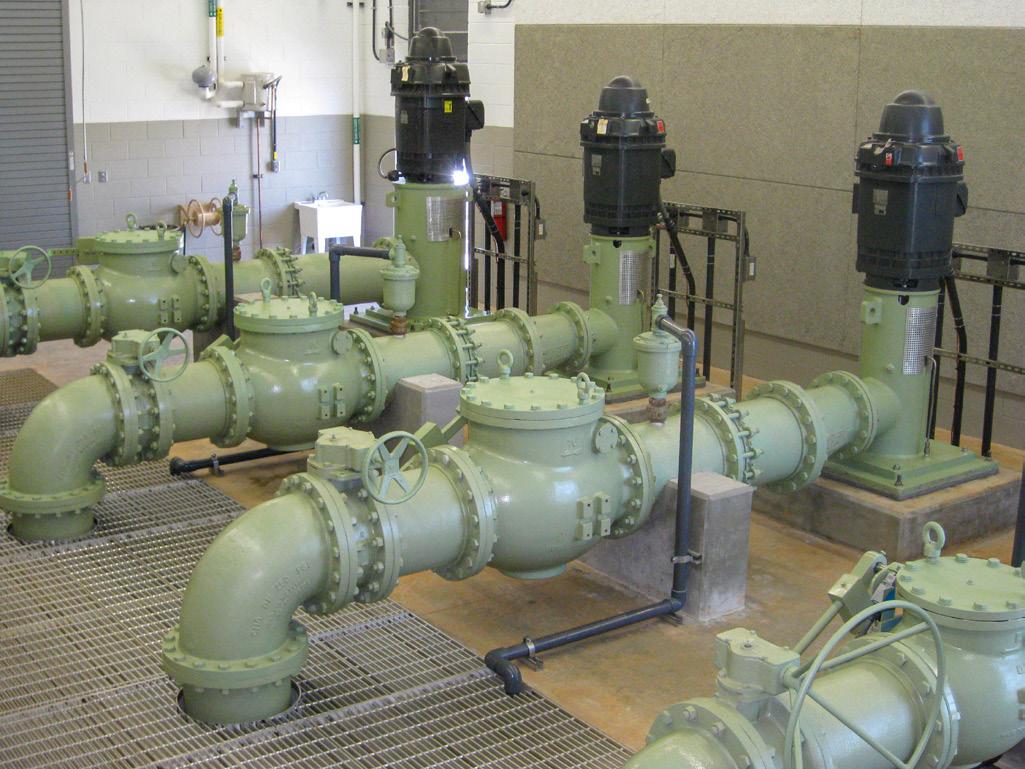
possible, avoid utilizing extreme increasers.
When designing a pumping system, it is beneficial to request a surge investigation from the valve manufacturer to determine whether the process conditions require a check valve or a pump control valve. If a check valve is required, then valve selection, size, installation, and cost of ownership should be considered before specifying the valve. These key considerations will extend the life of the check valve, ensure proper protection of process equipment, and prevent an unplanned shutdown.
Lea Clauson is with DeZURIK Inc, which has offices and representatives across Canada. Email: lea.clauson@dezurik.com
Pump station design with silent check valve installed five pipe diameter lengths from pump discharge.
Pump station layout with air valve, swing check valve, and butterfly valve.
June 2024 | 49 www.esemag.com @ESEMAG

New chapter of water data begins for Global Water Futures network that connects nine universities
By ES&E Staff
OGlobal Water Futures Observatories (GWFO) officially launched in April as a new chapter of the freshwater observation network that now connects nine Canadian post-secondary institutions, including Carleton, McMaster, Saskatchewan (lead), Toronto, Trent, Waterloo, Western, Wilfrid Laurier and Windsor.
More than $40 million in new funding, in part through the Canada Foundation for Innovation Major Science Initiatives Fund, has enabled the GWFO to continue its legacy of open-access data from observatory and laboratory facilities
under the Global Water Futures program, which had four core partner universities.
New research is now funded up to 2029 with the potential for renewal.
Spanning many of the provinces and territories, including the Great Lakes-St. Lawrence, Yukon, Mackenzie, Saskatchewan–Nelson major river basins, GWFO will cover 64 instrumented basins, lakes, rivers, and wetlands, complemented by 15 deployable water measurement systems and 18 water laboratories that will allow researchers to understand the dynamics and resiliency of Canada’s aquatic systems.
The network’s meteorological, glaciological, hydrological, water quality, and freshwater data will inform the development of water prediction models for flooding and drought, agricultural and municipal water governance models, diagnosis of risks to water security, and solutions to ensure the long-term sustainability of resources across Canada.
At the recent GWFO launch event in Saskatchewan, Executive Director of the Global Institute for Water Security, Corinne Schuster-Wallace, emphasized the need for equitable and sustainable water management. She said it’s time to
Environmental Science & Engineering Magazine 50 | June 2024 SPECIAL FOCUS: ACADEMIC PROGRAMS
Fifteen deployable water measurement systems and 18 water laboratories will allow researchers to understand the dynamics and resiliency of Canada’s aquatic systems, including Saskatchewan’s Buffalo Pound Lake. Credit: Mark Ferguson, University of Saskatchewan.
get used to the uncertainty caused by climate change, whether it’s extreme droughts, rain, floods, or wildfires, and learn adaptation solutions informed by data.
“I don’t think you can look at the news without seeing a weather-related or water-related story,” said Schuster-Wallace. “So that’s what makes Global Water Futures Observatories facilities so very important as a foundation for a lot of the research that goes on here, not only at the University of Saskatchewan, but also across the eight partner universities, and beyond that in terms of private sector, other academics in Canada, and also internationally.”
Many GWFO sites are in remote and data-sparse locations, such as under the Great Lakes, atop glaciers, or in the Arctic. They serve as crucial sources of information for detecting the impact of climate change on water resources.
Schuster-Wallace also highlighted the initiative’s focus on human-water interactions, wastewater surveillance, and aquatic toxicology.
GWFO Director and University of Saskatchewan professor, John Pomeroy, painted a picture of some of GWFO’s other research for the initiative’s launch event. He described flying drones over agricultural fields to look at productivity or soil moisture; accessing remote mountains in the Yukon for snow surveys; descending underwater autonomous vehicles into Lake Erie; and looking at the hydrometeorology of mountains and snowpacks. He also described the health of wetlands in the Prairies, and the sophisticated chemical analyses that occur in the facility’s many labs.
Nearly 500 groups across Canada utilize data from GWFO.
“We try to address questions and issues of relevance to society, wherever that may come from, and so that’s our guidance,” said Pomeroy.
Leading the University of Waterloo’s GWFO contributions will be Philippe Van Cappellen, professor in the Faculty of Science for the Department of Earth and Environmental Sciences, and also the Canada Excellence Research Chair Laureate in Ecohydrology.
“GWFO represents a crucial investment in the world-leading research that is needed to protect our vital freshwater resources and aquatic ecosystems against ongoing and emerging threats,” announced Van Cappellen.
For the University of Windsor, Professor and Canada Research Chair in Changing Great Lakes Ecosystems in the School of the Environment, Aaron Fisk, also serves as scientific director of the Real-Time Aquatic Ecosystem Observation Network (RAEON) — a key component of the new GWFO.
“This network will give scientists from the University of Windsor new mechanisms for collaboration with other leading freshwater research universities and participating in largescale projects and grant applications,” announced Fisk. “Our researchers will leverage this infrastructure to provide expertise in water utility management, harmful algae blooms, nutrient dynamics, environmental genomics, fish ecology, oil and gas sources, and contaminant fate,” he added.

Many GWFO sites are in remote and data-sparse locations, such as under the Great Lakes, atop glaciers, or in the Arctic. Credit: Caroline Aubry-Wake, University of Saskatchewan
Hire Canada’s national sewer expert.
Barbara A. Robinson, M.A.Sc., P.Eng., founder (2015) and president of Norton Engineering Inc., has 33 years of hands-on sewer experience.
Norton can help your municipality make costeffective I/I decisions:
• Help you calculate the real costs of I/I
• Guide you in finding and fixing I/I quickly
• Implement a “Sewers are NOT Trash Cans” and/or “Mandatory Roof Leader Disconnection” program
• Execute national best practices
• Write or review RFPs, final reports, etc.
• Solve specific sewer problems
• Review and approve new subdivision flow monitoring
• Deliver exclusive Norton workshops to train your engineering & building staff.
• Undertake public education
If you want to substantially reduce I/I, count on Norton. Contact us today.
Norton Engineering Inc.
We Love Sewers. nortonengineeringinc@gmail.com

June 2024 | 51 www.esemag.com @ESEMAG
Walkerton Clean Water Centre offers hands-on water treatment training
In a new partnership, the Walkerton Clean Water Centre (WCWC) has had a successful first run incorporating its “Operation of Conventional Treatment Processes” course into the environmental technician curriculum at Confederation College in Thunder Bay, Ontario.
WCWC representatives hosted a two-day training session in April for Confederation students at the college’s custom-designed pilot water treatment plant. The facility offers a lot of the same technology found in a standard water treatment plant, and industry professionals from WCWC were able to demonstrate their expertise with the equipment for the benefit of students.
“They are graduating with the skills needed to work in the very diverse environmental field and, in particular, the in-demand water and wastewater industry in Ontario,” announced Sandra Stiles, Environmental Technician program co-ordinator at Confederation College. “The collaboration with Walkerton Clean Water Centre will help to attract and train new

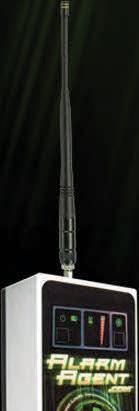


operators for water treatment here at the College,” Stiles added. Souleymane Ndiongue, manager of research and technology for WCWC, told local media that the benefits of hands-on training “prepares them as future potential drinking water operators.”
The partnership is expected to transition into an annual arrangement for the college’s two-year environmental technician program. Students also have the opportunity to write their operator-in-training certificate test for water and wastewater operations through the college.





Environmental Science & Engineering Magazine 52 | June 2024 SPECIAL FOCUS: ACADEMIC PROGRAMS 1 5 2 3 4 Supports OPC connectivity for fast, reliable data transfer Allows for data sharing with third-party OPC clients/servers over WAN or LAN Displays real-time data on a convenient dashboard Monitor your facilities and receive voice, text, and email notification Make configuration changes from anywhere. Features &Benefits egrate real-timedatafrom AlarmAgent.comwith control stemsand other third-party applications.It’sacost-effective olution forindividualand corporateusers, and theperfecttool or OEMs tocreatetheirownHMI/SCADA applications. AlarmAgent.com Server AlarmAgent.info CloudServer HMI/SCADA Applications olu t syst RACO OPCClient RACO OPC Client RACO OPC Client Remotely and Securely Monitor critical Infrastructure. Worry less with AlarmAgent.info® 3230B American Drive Mississauga, ON, L4V 1B3 1-800-811-2811 | info@SPDSales.com www.spdsales.com Official Distributor 905.678.2882 | spdsales.com Improve nutrient removal with continuous online measurements of BOD, COD, ammonium, nitrate, nitrite, UVT, and more. Reliable ISE sensors with individually replaceable electrodes Accurate UV/VIS sensors with built-in ultrasonic cleaning YSI.com/IQSN © 2022 Xylem Inc. IQ SensorNet Process Monitoring CONTROL CONFIDENTLY
The Walkerton Clean Water Centre.

The climate change diploma’s program was developed by leading scholars and members of the Waterloo Climate Institute, one of the largest concentrations of climate change researchers in Canada that spans all six of the university’s faculties. Credit: University of Waterloo
UWaterloo launches climate change diploma for grad students
The University of Waterloo in Ontario (UWaterloo) is offering an interdisciplinary graduate diploma in cli mate change that is the first of its kind in Canada.
UWaterloo officials said the climate change diploma will be open to every enrolled masters and doctoral student, alongside their primary degree at no additional cost. The school wants to leverage collaboration across disciplines, from finance to engineering, health, planning, and earth sciences.
To earn the diploma, students must take one climate fun damentals course and one approved climate specialization course outside of their home faculty. They must also partici pate in a minimum of four approved climate change seminars and conferences, according to UWaterloo.
“Climate change is everyone’s business,” announced Daniel Scott, professor in the Department of Geography and Envi ronmental Management. “Our faculty has been at the fore front of building programs to fill the climate skills gap, so our students are prepared to thrive in this new reality when they graduate.”
The climate change diploma’s program was developed by scholars and members of the Waterloo Climate Institute, one of the largest concentrations of climate change researchers in Canada that spans all six of the university’s faculties.
The diploma joins the Faculty of Environment’s suite of cli mate-specific training, which includes a climate change course open to all UWaterloo undergraduate students, a bachelor of science in climate and environmental change, a professional diploma in climate risk management, and a professional mas ters in climate change.
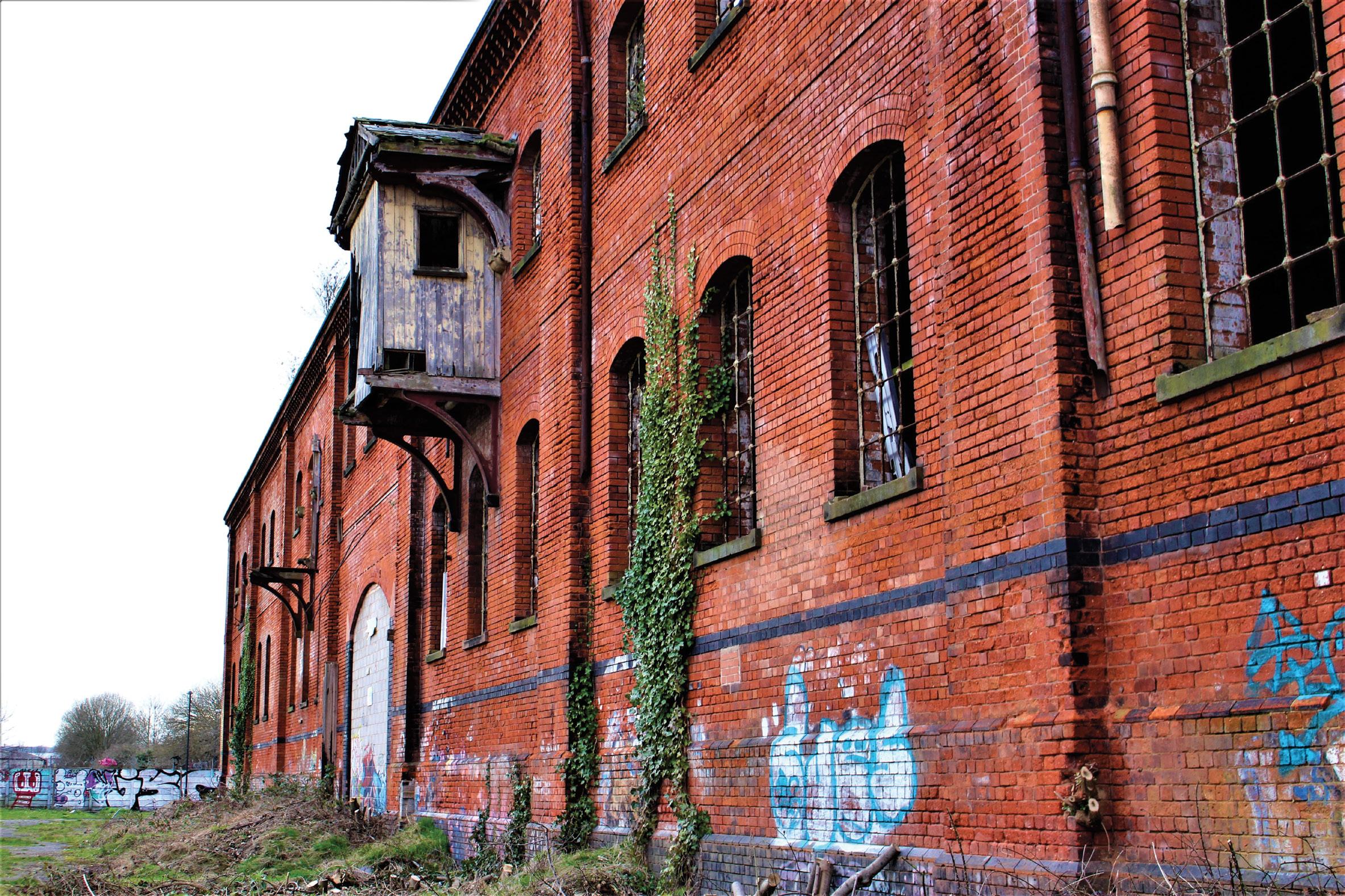
June 2024 | 53 www.esemag.com @ESEMAG SPECIAL FOCUS: ACADEMIC PROGRAMS Join CBN to become part of Canada's largest network of brownfield industry professionals. Proud partner of CANECT ENGAGE EDUCATE EVOLVE www.canadianbrownfieldsnetwork.ca For more information: C M Y CM MY CY CMY K CBN_Print_Ad_2023_v5.pdf 5 2023-03-27 4:24 PM
Dalhousie partners with Atlantic First Nations Water Authority
Anew $4.3-million federal grant will allow Dalhousie University to help support the Atlantic First Nations Water Authority (AFNWA) so it can successfully deliver its mandate as the first Indigenous-owned water authority in Canada.
The Alliance-Mitacs Accelerate Grant from the Natural Sciences and Engineering Research Council of Canada (NSERC) will help to train a new generation of Indigenous and non-Indigenous engineers and other professionals for the water authority’s long-term success.
The partnership will support 20 graduate and postdoctoral research trainees, 15 undergraduate interns, and 35 First Nations high school students from Mi’kmaq and Wolastoqey First Nations, according to an announcement from Dalhousie University.
Since late 2022, a dozen of the 34 First Nations located in Atlantic Canada have joined the AFNWA, with two more expected to join later this year.
Dalhousie researchers and students will also conduct a world-leading study with the AFNWA, focused on the implementation of UV LEDs for drinking
water and wastewater disinfection.
“It’s very exciting because the AFNWA is essentially going to be leading the water community in North America in this trial,” announced Dr. Graham Gagnon, director of Dalhousie’s Centre for Water Resource Studies, who is leading the university’s partnership with AFNWA. “It’s based on principles and values that they have in terms of sustainability. And it’s very exciting for us to be a part of this study, guided by their strong vision and values, to make advances that matter.”
Dr. Gagnon will be joined by Dr. Megan Fuller, director of research for the AFNWA at Dalhousie’s Centre for Water Resource Studies, and Dr. Amina Stoddart, Canada Research Chair in Wastewater Treatment Technology and Surveillance, who will evaluate infrastructure and process needs. Dr. Chad Walker from Dalhousie’s School of Planning will contribute to developing Indigenous-led governance and community engagement for the AFNWA.
“There are 10 years of capital upgrades that are coming down the pike for these communities,” Dr. Fuller announced. “So, Dal’s Centre for Water Resource
Studies and the Indigenous and non-Indigenous trainees associated with this work are going to think about what good treatment looks like and what treatment processes should be employed, so that investments can be made to ensure drinking water is safe and clean for everyone,” she added.
In addition to building new education and training pathways for Indigenous students, the partnership will create a course at Dalhousie focused on integrating Indigenous Ways of Knowing into the current engineering curriculum.
Chairperson of the AFNWA’s Elders Advisory Lodge, Elder Methilda Knockwood-Snache, says the new class will be the first of its kind.
“The concept of Two-Eyed Seeing— seeing Western science and traditional Indigenous knowledge as equals—is much needed for youth to understand where they came from and have pride in who they are,” Knockwood-Snache announced in a statement. “This class will teach new perspectives and allow students to work together and be the change we want to see. This type of work is the work I live for.”
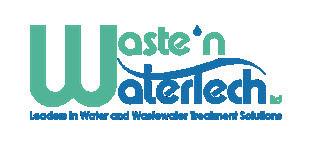

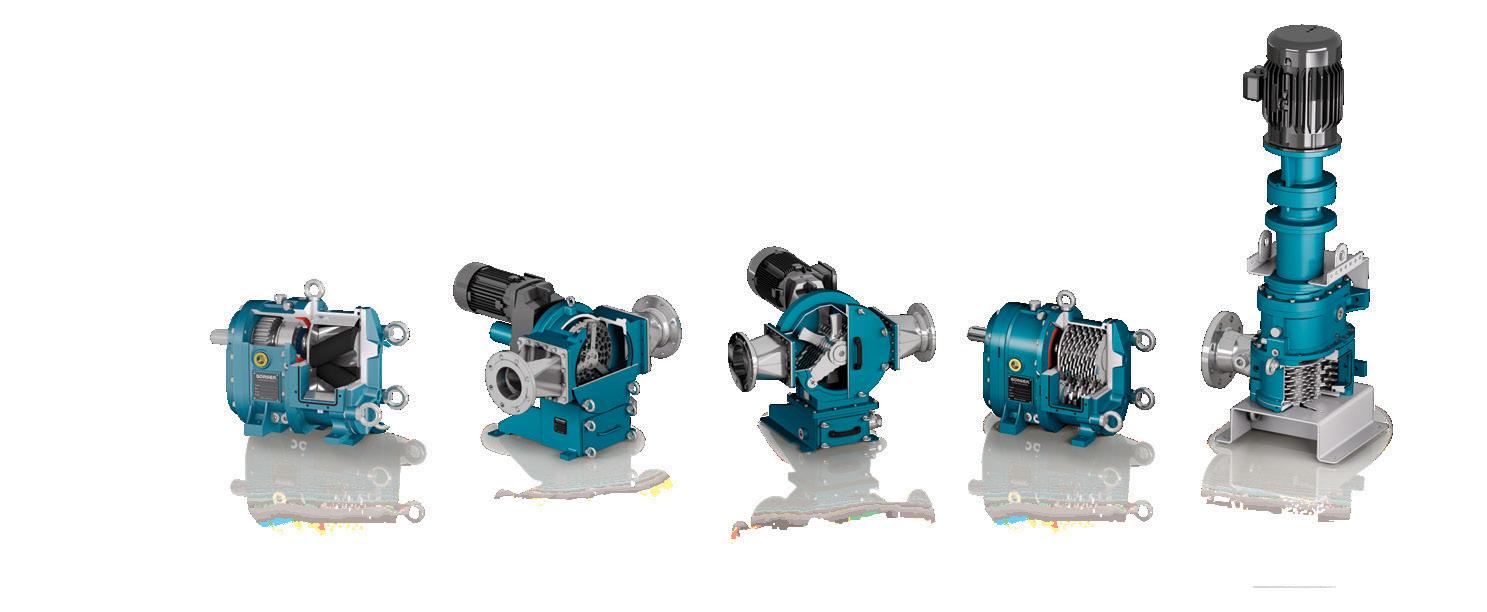

Environmental Science & Engineering Magazine 54 | June 2024 SPECIAL FOCUS: ACADEMIC PROGRAMS RELIABLE FLUID HANDING SOLUTIONS FOR DEMANDING WASTEWATER APPLICATIONS. More information visit boerger.com + Space-Saving Solutions + For
Grease, Sewage, Scum, Slurries, Polymers, etc + Maintenance In Place
Enhance efficiency and reduce downtime with
Rotary
Pumps and Macerating Technology. Municipal Representatives:
Sludge, Biosolids,
(MIP®)
Boerger
Lobe
COLLEGES, UNIVERSITIES, RESEARCH CENTRES & TRAINING
The following institutions offer post-secondary education in fields relating to water, wastewater, environmental protection and environmental remediation. Also included in this guide are research centres affiliated with Canadian universities, and training companies.
COLLEGES
ɗ ALBERTA
Keyano College Fort McMurray www.keyano.ca
Lakeland College
Vermillion, Lloydminster www.lakelandcollege.ca
Lethbridge College
Lethbridge www.lethbridgecollege.ca
Medicine Hat College Medicine Hat www.mhc.ab.ca
Portage College Lac la Biche www.portagecollege.ca
Southern Alberta Institute of Technology Calgary www.sait.ca
ɗ BRITISH COLUMBIA
British Columbia Institute of Technology Burnaby www.bcit.ca
Camosun College Victoria www.camosun.ca
Douglas College New Westminster www.douglascollege.ca
Okanagan College Kelowna www.okanagan.bc.ca
ɗ MANITOBA
Assiniboine College Brandon www.assiniboine.net
Red River College Polytechnic Winnipeg www.rrc.ca
ɗ NEW BRUNSWICK
New Brunswick Community College Miramichi www.nbcc.ca
ɗ NEWFOUNDLAND AND LABRADOR
College of the North Atlantic Corner Brook cna.nl.ca
ɗ NORTHWEST TERRITORIES
Aurora College Various www.auroracollege.nt.ca
ɗ NOVA SCOTIA
Nova Scotia Community College Various www.nscc.ca
ɗ NUNAVUT
Nunavut Arctic College Various www.arcticcollege.com
ɗ ONTARIO
Algonquin College Ottawa www.algonquincollege.com
Cambrian College Sudbury www.cambriancollege.ca
Canadore College North Bay www.canadorecollege.ca
Centennial College Toronto www.centennialcollege.ca
Conestoga College Kitchener www.conestogac.on.ca
Confederation College Thunder Bay www.confederationcollege.ca
Durham College Oshawa www.durhamcollege.ca
Fleming College Lindsay www.flemingcollege.ca
Georgian College Barrie www.georgiancollege.ca
Loyalist College Belleville www.loyalistcollege.com
Mohawk College Hamilton www.mohawkcollege.ca
Niagara College Canada Niagara-on-the-Lake www.niagaracollege.ca
Northern College Various www.northerncollege.ca
Sault College
Sault Ste. Marie www.saultcollege.ca
Seneca Polytechnic Toronto www.senecapolytechnic.ca
Sheridan College Oakville www.sheridancollege.ca
St. Lawrence College Cornwall www.stlawrencecollege.ca
ɗ PRINCE EDWARD ISLAND
Holland College Charlottetown www.hollandcollege.com
ɗ QUEBEC
Cégep de Saint-Félicien Saint-Félicien www.cegepstfe.ca
John Abbott College Montreal www.johnabbott.qc.ca
Vanier College Montreal www.vaniercollege.qc.ca
ɗ SASKATCHEWAN
Luther College Regina www.luthercollege.edu
Saskatchewan Polytechnic Various www.saskpolytech.ca
ɗ YUKON
Yukon University - Diploma and Certificate Programs Whitehorse www.yukonu.ca
UNIVERSITIES
ɗ ALBERTA
Concordia University of Edmonton Edmonton www.concordia.ab.ca
Mount Royal University Calgary www.mtroyal.ca
The King’s University Edmonton www.kingsu.ca
University of Alberta Edmonton www.ualberta.ca
University of Calgary Calgary www.ucalgary.ca
University of Lethbridge Lethbridge www.ulethbridge.ca
ɗ BRITISH COLUMBIA
Kwantlen Polytechnic University Various www.kpu.ca
Royal Roads University Victoria www.royalroads.ca
Simon Fraser University Vancouver, Burnaby www.sfu.ca
Thompson Rivers University Kamloops www.tru.ca
University of British Columbia Vancouver, Kelowna www.ubc.ca
University of Northern British Columbia Prince George www.unbc.ca
University of Victoria Victoria www.uvic.ca
ɗ MANITOBA
Brandon University Brandon www.brandonu.ca
Canadian Mennonite University Winnipeg www.cmu.ca
University of Manitoba Winnipeg www.umanitoba.ca
University of Winnipeg Winnipeg www.uwinnipeg.ca
ɗ NEW BRUNSWICK
Mount Allison University Sackville www.mta.ca
Université de Moncton Moncton www.umoncton.ca
June 2024 | 55 www.esemag.com @ESEMAG EDUCATION, RESEARCH & TRAINING
University of New Brunswick Fredericton www.unb.ca
ɗ NEWFOUNDLAND AND LABRADOR
Memorial University of Newfoundland St. John’s, Corner Brook www.mun.ca
ɗ NOVA SCOTIA
Acadia University Wolfville www.acadiau.ca
Cape Breton University Sydney www.cbu.ca
Dalhousie University
Halifax www.dal.ca
Saint Mary’s University Halifax www.smu.ca
St. Francis Xavier University Antigonish www.stfx.ca
University of King’s College Halifax www.ukings.ca
ɗ ONTARIO
Brock University St. Catharines www.brocku.ca
Carleton University Ottawa www.carleton.ca
Lakehead University Thunder Bay, Orillia www.lakeheadu.ca
McMaster University Hamilton www.mcmaster.ca
Nipissing University North Bay www.nipissingu.ca
Ontario Tech University Oshawa www.ontariotechu.ca
Queen’s University
Kingston www.queensu.ca
Redeemer University
Ancaster www.redeemer.ca
Toronto Metropolitan University Toronto www.torontomu.ca
Trent University Peterborough www.trentu.ca
University of Guelph Guelph www.uoguelph.ca
University of Ottawa Ottawa www.uottawa.ca
University of Toronto Toronto www.utoronto.ca
University of Waterloo Waterloo www.uwaterloo.ca
University of Windsor Windsor www.uwindsor.ca
Western University London www.uwo.ca
Wilfrid Laurier University Waterloo www.wlu.ca
York University Toronto www.yorku.ca
ɗ PRINCE EDWARD ISLAND
University of Prince Edward Island Charlottetown www.upei.ca
ɗ QUEBEC
Concordia University Montréal www.concordia.ca
Polytechnique Montréal Montréal www.polymtl.ca
McGill University Montréal www.mcgill.ca
Université de Montréal Montréal www.umontreal.ca
Université de Sherbrooke Sherbrooke www.usherbrooke.ca
Université du Québec Various www.uquebec.ca
Université Laval Québec City www.ulaval.ca
ɗ SASKATCHEWAN
First Nations University of Canada Regina www.fnuniv.ca
Saskatchewan Polytechnic Saskatchewan www.saskpolytech.ca
University of Regina Regina www.uregina.ca
University of Saskatchewan Saskatoon www.usask.ca
ɗ YUKON
Yukon University Whitehorse www.yukonu.ca
R&D CENTRES
Advancing Canadian Water Assets University of Calgary www.ucalgary.ca/acwa
Annacis Research and Event Centre Delta, B.C. https://metrovancouver.org/services/ liquid-waste/annacis-research-andevent-centre
Brace Water Centre McGill University www.mcgill.ca/brace
Canadian Rivers Institute University of New Brunswick www.canadianriversinstitute.com
Canadian Underground Infrastructure Innovation Centre University of Alberta in Edmonton www.cuiic.ca
Centre for Advancement of Trenchless Technologies University of Waterloo https://www.civil.uwaterloo.ca/cpatt/ CATT.htm
Centre for Environmental Engineering Research and Education University of Calgary www.schulich.ucalgary.ca/ceere
Centre for Water Resources Studies Dalhousie University https:// centreforwaterresourcesstudies. dal.ca
ECO Canada www.eco.ca
Global Institute for Water Security University of Saskatchewan water.usask.ca
Global Water Institute Carleton University www.carleton.ca/gwi
Ontario Rural Wastewater Centre University of Guelph www.ontarioruralwastewatercentre.ca
Ontario Water Consortium www.ontariowater.ca
Pacific Water Research Centre
Simon Fraser University www.sfu.ca/pwrc
Pulp and Paper Centre
University of British Columbia www.ppc.ubc.ca
Walkerton Clean Water Centre
Research and Technology Institute www.wcwc.ca
The Beaty Water Research Centre Queen’s University, Royal Military College of Canada www.waterresearchcentre.ca
The Centre for Advancement of Water and Wastewater Technologies Fleming College www.cawt.ca
Urban Water TMU
Toronto Metropolitan University www.torontomu.ca/water
Water & Climate Impacts Research Centre
University of Victoria www.uvic.ca/research/centres/wcirc
Water Institute University of Waterloo www.uwaterloo.ca/water-institute
TRAINING PROVIDERS
Accessible Water & Wastewater Solutions Ltd. Atlantic Canada www.awws.ca
Acute Environmental & Safety Services
Waterloo, ON N2V 2J4 Tel: 519-747-5075 info@acuteservices.com www.acuteservices.com
ACUTE is committed to partner with our customers to exceed corporate and legislative requirements by providing our services from motivated and knowledgeable people. ACUTE assists our customers with health and safety services for more than just legal compliance, but to help their employees stay safe and work successfully. ACUTE believes in developing strong partnerships with our clients to ensure that we are meeting their health and safety requirements and exceeding their corporate safety goals.
Alberta Water & Wastewater Operators Association Alberta www.awwoa.ca
Arcadis Training & Ops Ontario training.ibigroup.com
Environmental Science & Engineering Magazine 56 | June 2024 EDUCATION, RESEARCH & TRAINING
Associated Environmental Site Assessors of Canada Inc.
Canada
www.aesac.ca
ATAP Infrastructure Management Ltd.
Saskatchewan www.atap.ca
Atlantic Canada Water & Wastewater Association
Atlantic Provinces www.acwwa.ca
BC Water & Waste Association British Columbia www.bcwwa.org
Canadian Association for Laboratory Accreditation (CALA) Canada www.cala.ca
Canadian Water Quality Association Canada www.cwqa.com
Colleges and Institutes Canada Canada www.collegesinstitutes.ca
ECO Canada Calgary, AB www.eco.ca
Environmental Training Institute
Atlantic Provinces www.etivc.org
Keewaytinook Centre for Excellence Ontario www.watertraining.ca
Manitoba Water and Wastewater Association Manitoba www.mwwa.net
Ontario Clean Water Agency Ontario www.ocwa.com
Team-1 Academy Ontario www.team1academy.com

Walkerton Clean Water Centre
Ontario 866-515-0550 519-881-2003 inquiry@wcwc.ca www.wcwc.ca
WCWC is an agency of the Government of Ontario, established in 2004, to help safeguard water resources. WCWC coordinates and delivers education and training for water system owners, operators, operating authorities and First Nations communities, including hands-on, correspondence and e-learning options. WCWC also provides information and advice through pilot tests, with a focus on systems in small and First Nations communities.
World Water Operator Training Company Inc. Ontario www.wwotc.com
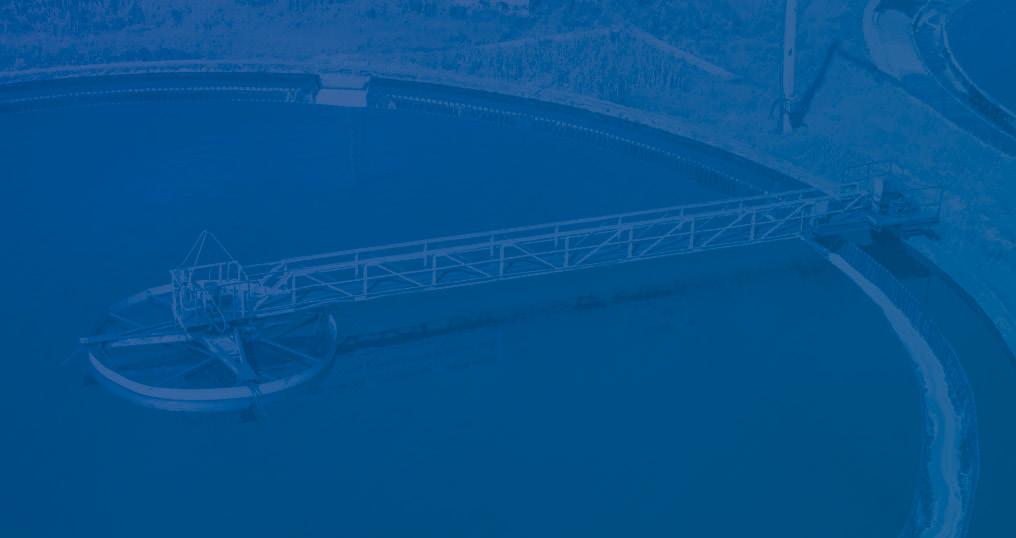

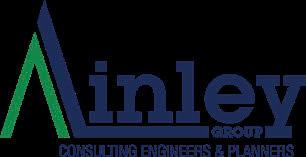
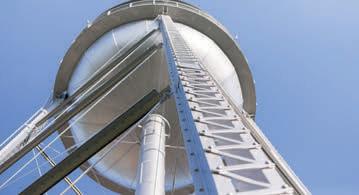
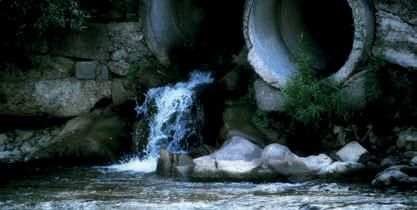

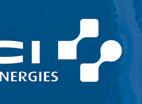

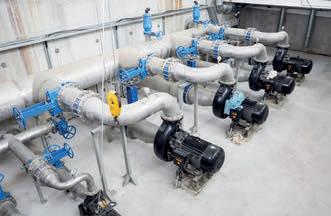







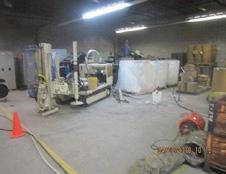

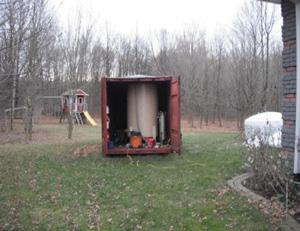




June 2024 | 57 www.esemag.com @ESEMAG EDUCATION, RESEARCH & TRAINING www.actemium.ca Market leader in System Integration SCADA | Instrumentation Automation Solutions | 24/7/365 Support Delivering Clean Water Solutions For More Than Six Decades Barrie • Belleville • Collingwood • Mississauga • Kingston • Ottawa AINLEYGROUP.COM Treatment • Collection • Distribution • Storage Celebrating 75 Years of Engineering Excellence www.ae.ca A Carbon Neutral Company since 2009 LEADERS IN SOIL AND GROUND WATER REMEDIATION www.goldenenviro.ca 1-800-414-2404 ron@goldenenviro.ca In-Situ / Ex-Situ / PRBs / UST Removal / Spill Response / ESAs Est. 1969
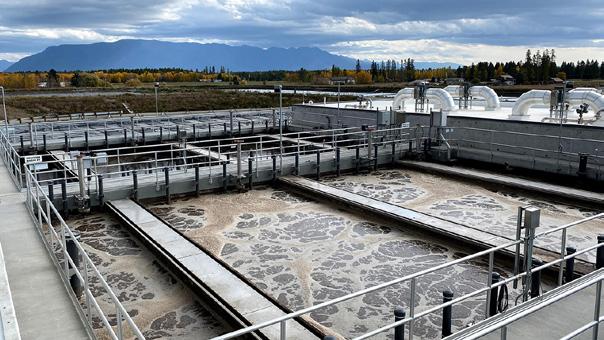
AEROBIC GRANULAR SLUDGE TECHNOLOGY
The AquaNereda® Aerobic Granular Sludge Technology is an innovative biological wastewater treatment system that provides advanced treatment using the unique features of aerobic granular biomass. The aerobic granular biomass is comprised of compact granules which consist of layered microbial communities and provides superior settling compared to conventional activated sludge. Nereda® is a registered trademark of Royal HaskoningDHV. Represented by ACG-Envirocan
T: 905-856-1414
E: sales@acg-envirocan.ca
W: www.acg-envirocan.ca
Aqua-Aerobic Systems, Inc.
T: 815-654-2501
F: 815-654-2508
E: solutions@aqua-aerobic.com
W: www.aqua-aerobic.com

SEQUENCING BATCH REACTOR
The AquaSBR® sequencing batch reactor provides true batch reactor technology with all phases of biological treatment accomplished in a single reactor. All components are easily accessible and the advanced decant system ensures optimum quality effluent withdrawal. Represented by ACG-Envirocan
T: 905-856-1414
E: sales@acg-envirocan.ca
W: www.acg-envirocan.ca
Aqua-Aerobic Systems, Inc.
T: 815-654-2501
F: 815-654-2508
E: solutions@aqua-aerobic.com
W: www.aqua-aerobic.com

INNOVATIVE SCREW BLOWERS
AERZEN’s new Delta Hybrid series delivers top energy efficiency, minimal footprint, and user-friendliness. These innovative screw blowers with direct drive and optional IE5 motors provide 100% oil-free process air, achieving up to 37% energy savings. A compact, plug-andplay solution for high-demand industrial applications.
AERZEN Canada Inc.
T: 450-424-3966 Montreal
T: 437-703-7630 Toronto
T: 587-316-0155 Calgary
E: service-ca@aerzen.com
E: sales-ca@aerzen.com
W: www.aerzen.com

NEW TURBO BLOWERS
AERZEN introduces the Turbo AT250 G5Plus, a new addition to its efficient turbo blower series. Delivering 155 m³/ min with air-foil bearings, it boasts extreme energy efficiency, high overall efficiency, and a compact footprint. AERZEN’s turbo blowers, renowned since 1911, offer up to 30% energy savings over traditional blowers, with the AT250 G5Plus extending these benefits to broader applications.
AERZEN Canada Inc.
T: 450-424-3966 Montreal
T: 437-703-7630 Toronto
T: 587-316-0155 Calgary
E: service-ca@aerzen.com
E: sales-ca@aerzen.com
W: www.aerzen.com

FLEX SHAFT SYSTEM
Wondering how to maintain or clean modular stormwater detention tanks? Discover the Vario 800 flex shaft system, offering easy maintenance access for long-term functionality. It efficiently manages stormwater, reduces flood risks, controls soil erosion, and conserves water. Its adaptable design complies with HS-20 ratings and allows for flexible installation in diverse conditions.
BARR Plastics Inc.
T: 800-665-4499
E: info@barrplastics.com
W: www.barrplastics.com

ELBOW CONNECTORS FREE UP VALUABLE SPACE
You can now order CHEM-FEED® MD1 with elbow connectors. Allowing suction and discharge plumbing to be installed at a 90-degree orientation, ideal for pumps to be installed in tight, confined spaces when needed. Elbow connectors are offered in three sizes, ½" male NPT, ½ " hose barb, and 3/8" tube compression fittings. Retrofit kits are available for pumps already in the field.
Blue-White Industries
T: 714-893-8529
E: info@blue-white.com
W: www.blue-white.com
PRODUCT & SERVICE SHOWCASE Environmental Science & Engineering Magazine 58 | June 2024

PUMP WON’T VAPOUR LOCK OR LOSE PRIME
The exclusive hyperdrive technology of the Multi-Diaphragm CHEM-FEED® MD1 Chemical Metering Pump is engineered to deliver smooth continuous chemical dosing with no vapour lock and no loss of prime, even when dosing chemicals that off-gas such as peracetic acid and sodium hypochlorite. MD1 requires near-zero maintenance and the patented DiaFlex® diaphragm is built to last the life of the pump.
Blue-White Industries
T: 714-893-8529
E: info@blue-white.com
W: www.blue-white.com
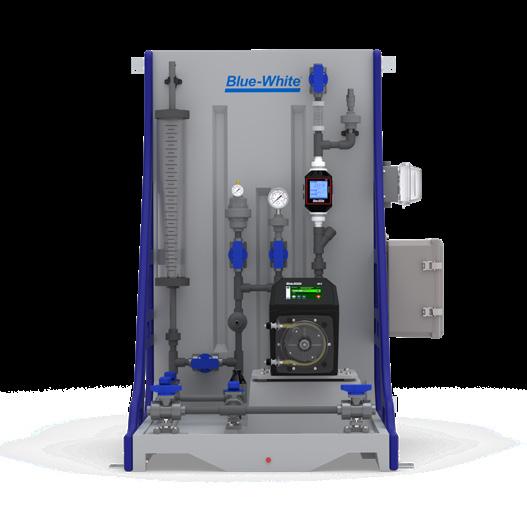
ENGINEERED SKID SYSTEMS
CHEM-FEED engineered skid systems are simple to operate, easy to order, and include everything needed for precise chemical feed. Say goodbye to leaky plumbing causing hazardous work environments with leak free threadless connections. Blue-White’s® lightweight, chemical and UV resistant, polyethylene, triple skids ship fully assembled to save installation time, include a built-in drip container, wall/floor mounting brackets, and a visual flow indicator.
Blue-White Industries
T: 714-893-8529
E: info@blue-white.com
W: www.blue-white.com
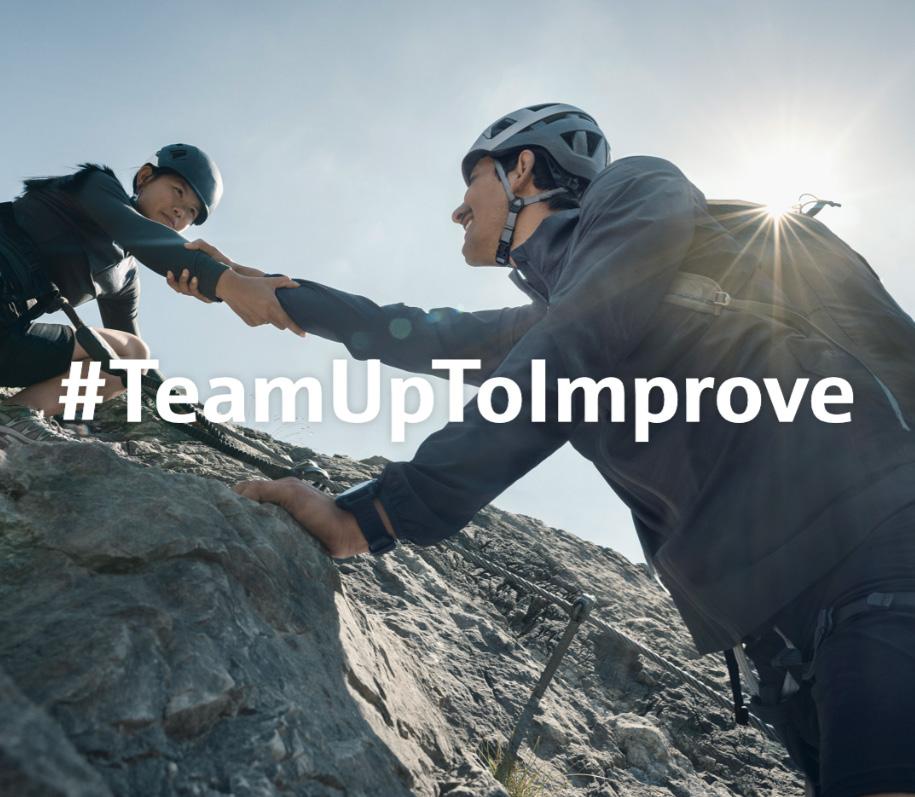
PARTNERING WITH CUSTOMERS
Process improvement is like climbing. With a strong partner, you can overcome any obstacle. Just as athletes rely on their teammates, we know that partnering with our customers brings the same level of support and dependability in manufacturing productivity.
Endress+Hauser Canada
T: 800-668-3199
F: 905-681-9444
E: info.ca@endress.com
W: www.ca.endress.com

CHLORINE SCALE
The Chlor-Scale 150™ from Force Flow provides a simple and reliable way to monitor the amount of chlorine or ammonia used, and the amount remaining in the cylinder. The solid PVC scale platform, with a 5-year warranty, provides the strongest defense against the corrosive environments associated with gas feed applications. Electronic and hydraulic options.
Force Flow
T: 925-686-6700
F: 925-686-6713
E: info@forceflow.com
W: www.forceflowscales.com

GNSS RTK RECEIVER
Geneq Inc. proudly introduces SXblue GLOBE, the pinnacle of innovation in GNSS positioning and GIS technology. Engineered to excel in the most challenging field conditions, it sets a new standard for performance, efficiency and reliability. Carrying a 448 channel GNSS board, SXblue GLOBE ensures accuracy and integrity in positioning, even in the most demanding environments.
GENEQ Inc.
T: 800-463-4363
E: info@sxbluegps.com
W: www.sxbluegps.com
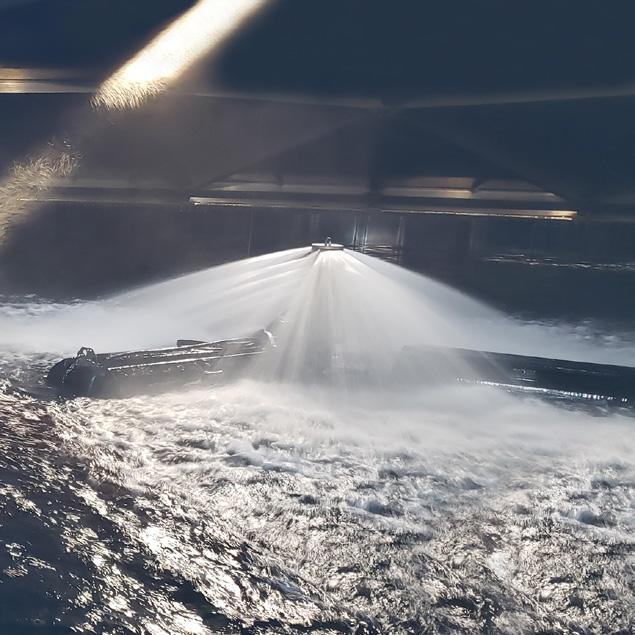
SPRAY AERATION SYSTEMS
GridBee® SN Series THM Removal Systems are designed to provide maximum benefit most anywhere in the tank or along your distribution system. Energy efficient. Performance guaranteed. SN Series equipment is scalable for any size tank, flow rate and removal percentage. No major infrastructure changes are required, and installation can be done without taking the tank out of service!
Greatario
T: 866-299-3009
E: info@greatario.com
W: www.greatario.com
PRODUCT & SERVICE SHOWCASE June 2024 | 59 www.esemag.com @ESEMAG
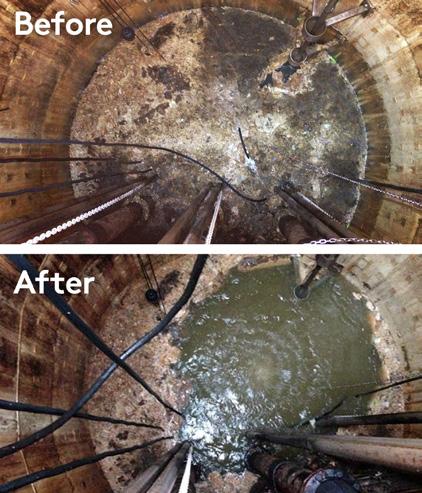
WET WELL MIXING
The GridBee® AP500 mixer helps keep solids—such as wipes—in suspension as sheets instead of clumps, and prevents lift station pumps from clogging. Mixing also helps reduce H₂S odours and corrosion as well as grease buildup. These mixers are ideal for almost all types of municipal and industrial wastewater treatment tanks, basins and ponds, or as a backup mixer, shallow or deep, wherever mixing is needed.
Greatario
T: 866-299-3009
E: info@greatario.com
W: www.greatario.com

CARBON BLOCK CARTRIDGES
Harmsco offers the industry’s largest Carbon Block Cartridges – with the greatest throughput per cartridge. The dual-stage cartridge features a solid activated carbon block, followed by 5-micron nominal pre-filtration to reduce taste, odour and chlorine, as well as PFOS/PFOA. Harmsco’s activated carbon technology was selected as a finalist in the Water Council’s Fall 2023 Tech Challenge for PFAS remediation. Harmsco Filtration Products
T: 800-327-3248
F: 561-845-2474
E: sales@harmsco.com
W: www.harmsco.com
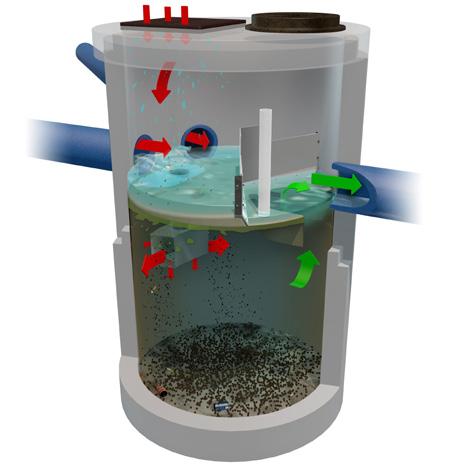
OGS/HYDRODYNAMIC SEPARATOR
The new Stormceptor® EF is an oil grit separator (OGS)/hydrodynamic separator that effectively targets sediment (TSS), free oils, gross pollutants and other pollutants that attach to particles, such as nutrients and metals. The Stormceptor EF has been verified through the ISO 14034 Environmental Management – Environmental Technology Verification (ETV).
Imbrium Systems
T: 800-565-4801
E: info@imbriumsystems.com
W: www.imbriumsystems.com

STORMWATER QUALITY TREATMENT
Inspection and maintenance are fundamental to the long-term performance of any stormwater quality treatment device. The Stormceptor EF/EFO design makes inspections and maintenance an easy and inexpensive process conducted at grade. Once serviced, the Stormceptor EF/EFO is functionally restored as designed, with full pollutant capture capacity. Learn more at: www.imbriumsystems.com
Imbrium Systems
T: 800-565-4801
E: info@imbriumsystems.com
W: www.imbriumsystems.com

SOLUTION FOR ODOUR AND CORROSION CONTROL
The IPEX Vortex Flow™ Insert (VFI) is a revolutionary technology for eliminating odorous emissions and minimizing corrosion in vertical sewer drops. With no moving parts and requiring no maintenance, VFIs have delivered significant cost savings in installations for municipalities across North America.
IPEX
T: 866-473-9462
W: www.ipexna.com

PVC PRESSURE PIPE SYSTEM
IPEX TerraBrute® CR is now available in an industry leading range of 4" to 24" sizes. Engineered for horizontal directional drilling (HDD) and other trenchless applications, it is a 100% non-metallic, AWWA C900 PVC pressure pipe system. Non-corroding and installation friendly, TerraBrute CR allows you to standardize on PVC throughout your potable water and sewer infrastructure.
IPEX
T: 866-473-9462
W: www.ipexna.com
PRODUCT & SERVICE SHOWCASE Environmental Science & Engineering Magazine 60 | June 2024

CARTRIDGE-LESS SCREEN FILTERS
Orival Water Filters remove unwanted organic and inorganic suspended solids to protect nozzles, RO and ion exchange units, ozone and UV treatment systems or chlorination systems. With models from ¾" to 24" and filtration degrees from 5 to 3,000 microns, Orival Automatic Self-Cleaning Filters are designed to withstand the day-in and day-out rigours of POTWs and stay on-line during the rinse cycle, providing uninterrupted flow of clean water.
Orival
E: filters+ese@orival.com W: www.orival.com

STAINLESS STEEL LEVER HOIST
OZ Lifting Products has launched North America’s first stainless steel lever hoist that captures the many benefits of Type 304 stainless steel. Available in 0.25-, 0.75-, 1.5-, and 3-ton versions; and each one can be provided with 5 ft., 10 ft., 15 ft., and 20 ft. lengths of lift (custom rigging available). The hoists are lightweight and easy to operate.
OZ Lifting Products
T: 507-474-6250/800-749-1064
E: sales@ozliftingproducts.com W: www.ozliftingproducts.com

WATERTIGHT DOORS
Huber, a proven German manufacturer, now provides watertight doors that allow safe access to tanks for construction and/ or maintenance. Doors can be provided as round or rectangular for installation onto existing concrete surfaces or cast-inplace in new concrete. They can handle heads up to 30 m and hold pressure in seating and unseating directions. Huber’s watertight doors can greatly reduce construction and maintenance costs and dramatically improve safety/access.
Pro Aqua, Inc.
T: 647-923-8244
E: aron@proaquasales.com
W: www.proaquasales.com
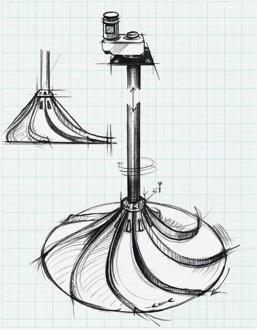
HYPERBOLOID MIXERS
Invent Environment is the manufacturer of hyperboloid mixers which have revolutionized anoxic and swing zone mixing. Invent provides low-shear, efficient mixers with no submerged motors or gear boxes for easy access for maintenance. They have now released the Hyperclassic Mixer Evo 7 which has increased the number of motion fins and adjusted the geometry of the mixer to maximize mixer efficiency, reducing operation costs even further.
Pro Aqua, Inc.
T: 647-923-8244
E: aron@proaquasales.com
W: www.proaquasales.com
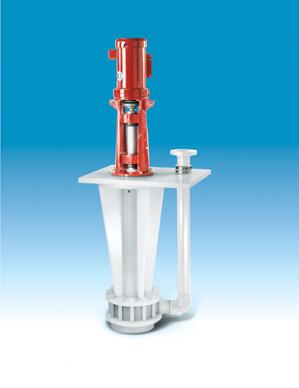
VERTICAL SUMP PUMP WITH RUN-DRY CAPABILITY
Vanton cantilevered vertical thermoplastic SGK pumps are engineered for the dependable handling of corrosive process fluids, plant effluents and wastewater, over broad pH ranges. Available in polypropylene, PVC, CPVC or PVDF, these rugged pumps are widely used across various manufacturing industries and water treatment facilities. Every Vanton pump is performance tested to the specified service condition intended.
Vanton Pump & Equipment Corporation
T: 908-688-4216
F: 908-686-9314
E: mkt@vanton.com
W: www.vanton.com

VERTICAL THERMOPLASTIC SUMP PUMPS
Vanton’s vertical thermoplastic sump pumps are engineered for the dependable handling of corrosive, abrasive, and ultra-pure process fluids, plant effluents and wastewater, over broad temperature and pH ranges. Available in polypropylene, PVC, CPVC, or PVDF, these rugged pumps are widely used across various manufacturing industries and water treatment facilities. Every Vanton pump is performance tested to the specified service condition intended.
Vanton Pump & Equipment Corporation
T: 908-688-4216
F: 908-686-9314
E: mkt@vanton.com
W: www.vanton.com
PRODUCT & SERVICE SHOWCASE June 2024 | 61 www.esemag.com @ESEMAG
COMPANY PAGE
Collingwood and New Tecumseth agree to move forward with WTP expansion
By ES&E Staff
Despite the escalation of costs associated with expanding the Raymond A. Barker Water Treatment Plant in the Town of Collingwood, Ontario, local officials have now finalized a partnership and water sharing agreement with the Town of New Tecumseth, where drinking water is piped south from Collingwood.
Both councils announced that they would be proceeding with the low-bid tender from Kenaiden Contracting Ltd., which is close to expiration. That bid, made in the fall of 2023, led to joint statements of concern from councils when it came in about $150 million higher than anticipated.
Additionally, the timeline to complete the water plant expansion has also been extended by about two years longer than the councils originally projected, potentially beyond 2028.
“This is an essential and urgent project for Collingwood, New Tecumseth, and the surrounding area,” the communities announced in a joint statement on April 11. “Without this plant expansion, we will not be able to build new homes to meet provincial housing targets or support job creation with commercial and industrial growth.”
Under the new water sharing agreement, New Tecumseth will cover 63% of the costs to expand the Raymond A. Barker Water Treatment Plant, with the understanding that 250 m³ per day will be made available to New Tecumseth for immediate allocation. A further supply of 150 m³ per day of Collingwood’s remaining capacity would be made available within the following 12 months, with quantities subject only to the technical capabilities of the plant.
The pipeline, which connects to a local reservoir, essentially was created to support the construction of the sprawl-
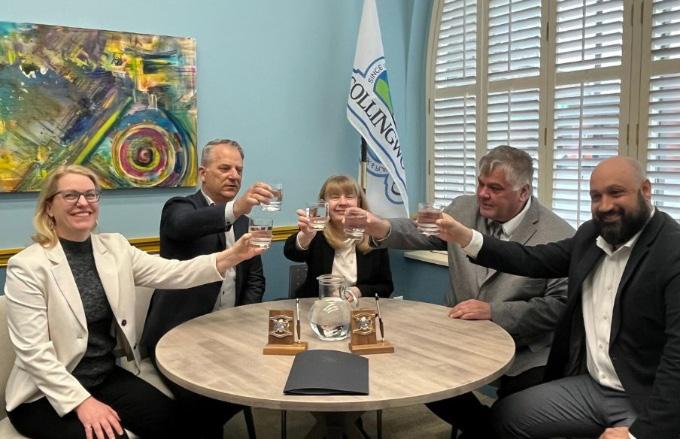
Sonya
President John Goffredo, Collingwood Mayor
Yvonne Hamlin, New Tecumseth Mayor Richard Norcross, Kenaidan Contracting Limited
Canada Vice President of Project Development, Jesse House. Credit: Town of Collingwood
ing Honda auto manufacturing plant expansion in Alliston, Ontario. Water requirements are only set to increase now that Honda will spend an estimated $11 billion to expand its Alliston manufacturing operations to supply and build electric vehicles, as announced by the Japanese company in April 2024.
Collingwood owned a rail line between Collingwood and Utopia and agreed to grant an easement over part of the railway lands to accommodate the transmission of water.
Collingwood and New Tecumseth officials also announced that they will participate in a discussion about an interim water solution after a review by AECOM is completed by October 2024.
New Tecumseth, which is engaged in a wells optimization project, could potentially return some drinking water to Collingwood, depending on a series of factors.
Both councils said they would “continue to actively pursue” an expectation of government funding through infrastructure programs to assist with this
of capital investment.
Pictured left to right: Town of Collingwood CAO
Skinner, Kenaidan Contracting Limited
partnership
For more information, email: editor@esemag.com ACG-Envirocan 23, 63 ACO Systems 37 AERZEN Canada 28 Associated Engineering 39 BARR Plastics 26 Blue-White 7 Boerger 54 Canadian Brownfields Network 53 Cancoppas 3 CANECT 2024 47 CB Shield 11 Crane Pumps & Systems 17 Environmental Remediation Equipment 30 Force Flow 33 Geneq 19 Greatario 31 Halogen Valve Systems 35 Harmsco 9 Imbrium 64 IPEX 2 IWA 2024 41 J.J. Downs Industrial Plastics 36 NETZSCH Canada 13 Norton Engineering 51 NWWC 46 OZ Lifting Products 29 Pentair 21 Poly Processing 18 PR’eautech 15 Pro Aqua 5 SPD Sales 52 Vissers Sales 25 Walkerton Clean Water Centre 24 Environmental Science & Engineering Magazine 62 | June 2024 WATER Advertiser INDEX
Get listed in ES&E
&
your company at esemag.com/get-listed
Magazine’s Consultants, Products
Services Guide Register

Whole-network CCTV sewer line assessment is very costly and is a slow process. Rapid Assessment Technology Services (RATS Inc.) has redefined the assessment process by providing municipalities with comprehensive acoustic network condition data in a fraction of the time and cost required by the old, costly CCTV methods.
Our patented acoustic technology provides real-time blockage assessments and records the condition of approximately 3,000 Meters of 150-450 mm gravity sewer lines per day. Using the most commonly used mapping and database platforms, Municipalities receive a whole-network map and condition report pinpointing the areas which require the more expensive and resource intensive CCTV and repair crews only where needed – usually less than 25% of the entire network!
Municipalities now can focus their high-cost resources only on the small percentage of the network that represents a potential service disruption or hazard to the community.
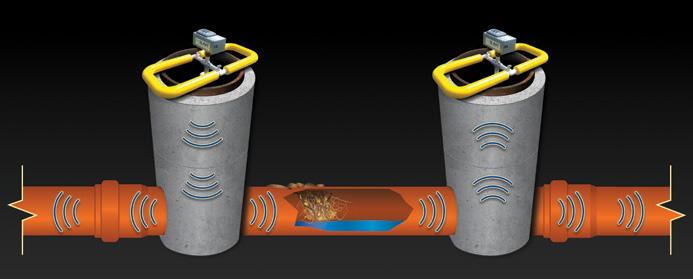
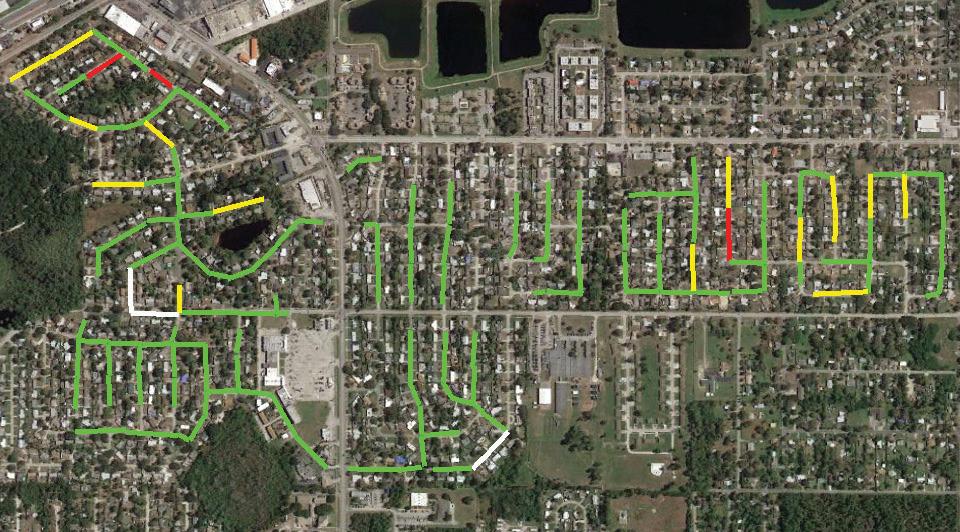
When it Comes to Sewers, Smart Municipalities Make Smarter, Data-Driven Decisions
7B-131 Whitmore Road, Woodbridge, ON 647-245-8800 · sales@ratsinc.ca · www.ratsinc.ca To find out how using RATS will result in lower overall project costs and annual required maintenance completed in less time, contact RATS today.
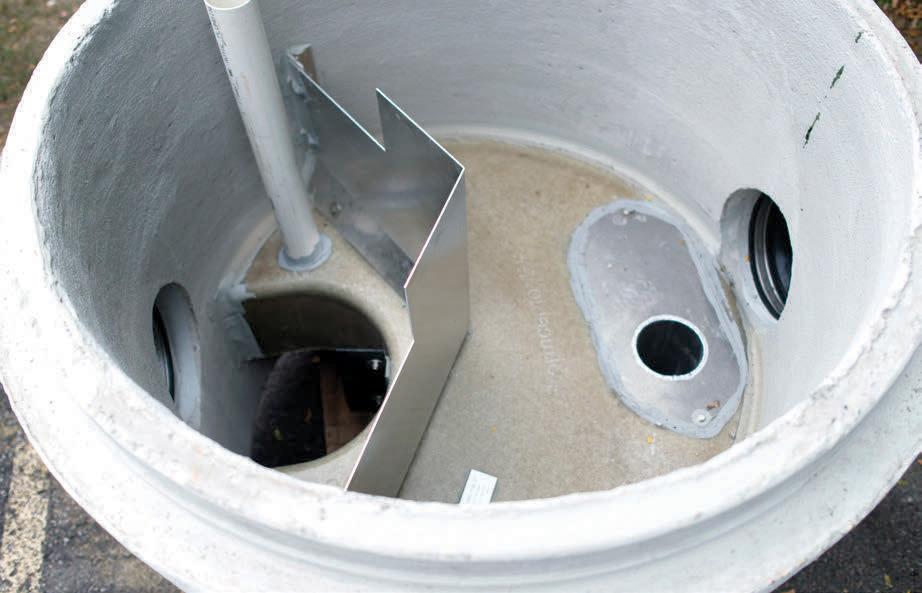
EFO
The most complete oil-grit separator on the market
• High flow sediment removal
• Scour prevention of collected sediment during high flow
• 99% oil/hydrocarbon retention during high flow
• Canada ISO 14034 Environmental Technology Verification (ETV)
PRODUCT RECOMMENDATIONS
SIZING & DESIGN ASSISTANCE
TWO LEVELS OF STORMWATER TREATMENT
Imbrium® has been synonymous with stormwater treatment in Canada for decades. With the Stormceptor® EF oil-grit separator and the Jellyfish® Filter membrane filtration system, Imbrium® provides engineers and regulators options for all levels of stormwater treatment.

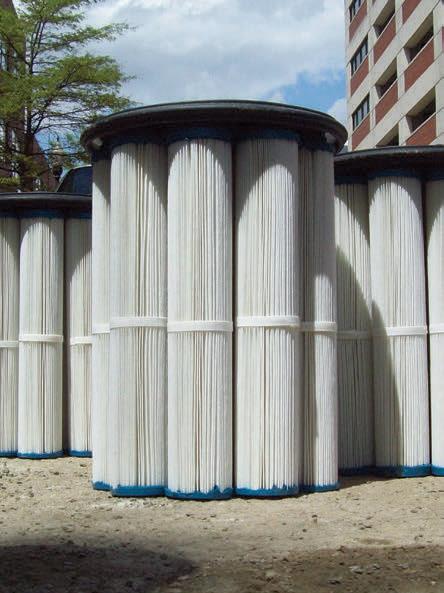
Filter
The highest level of sediment and nutrient removal using membrane filtration
• Removal of 90% TSS and 77% TP
• Low driving head of 457mm
• Lightweight, rinseable and reusable cartridges
• Canada ISO 14034 Environmental Technology Verification (ETV)
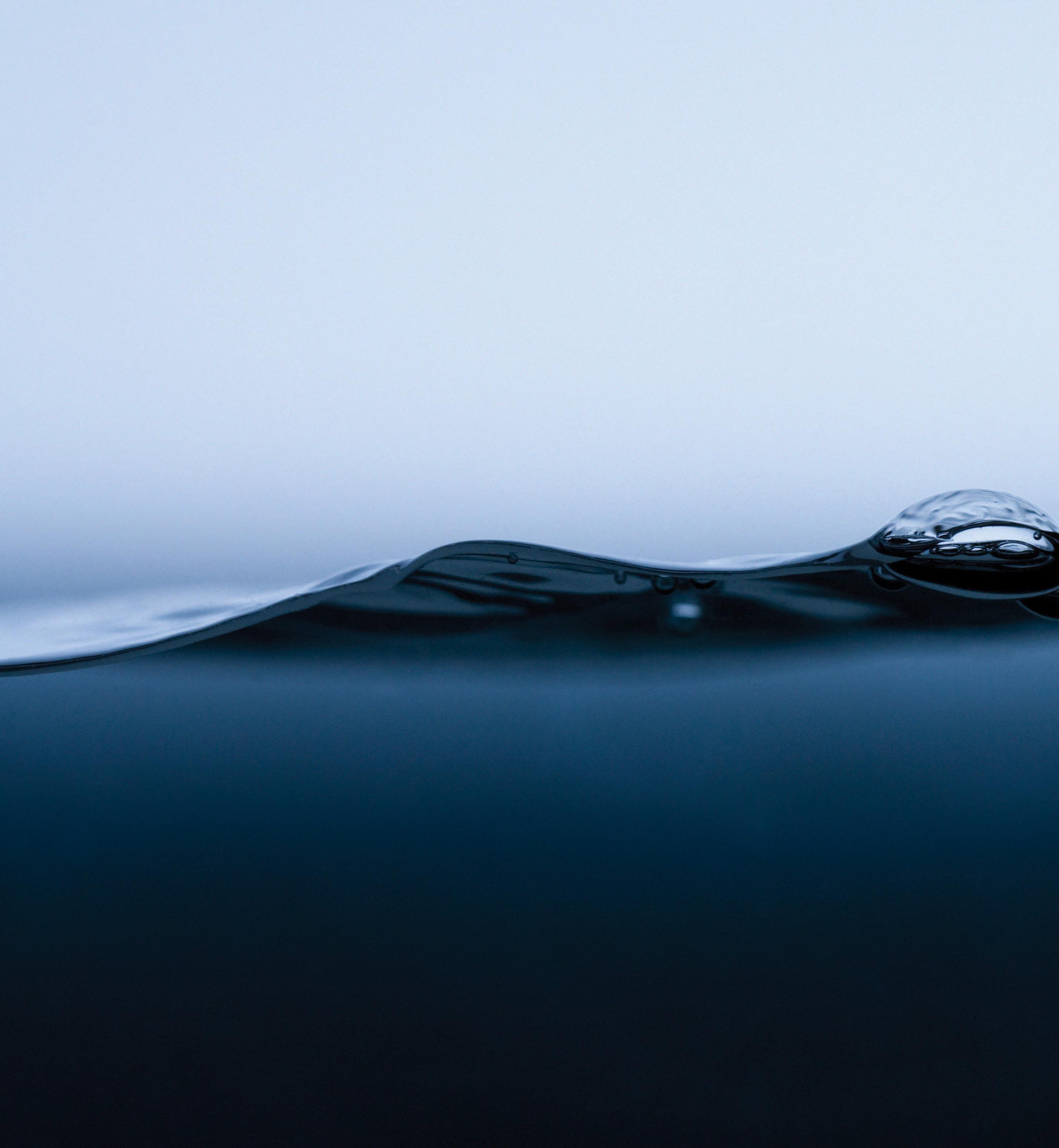
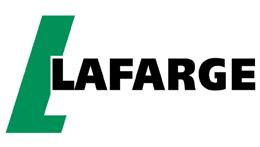



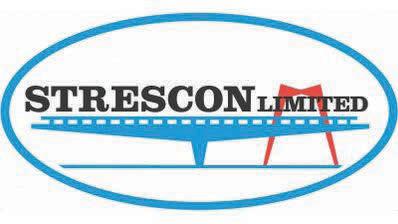
www.imbriumsystems.com (800)
565-4801
INSTALLATION
MAINTENANCE
SUPPORT
SUPPORT
Performance Claim Verified by the Canadian ETV Program
Imbrium products provided by: Ontario Alberta, Manitoba British Columbia Quebec New Brunswick, Nova Scotia






















































































 Sparta Manufacturing Inc. President Bruno Lagacé tours the company’s manufacturing facility with New Brunswick’s Minister responsible for Economic Development and Small Business, Greg Turner.
Sparta Manufacturing Inc. President Bruno Lagacé tours the company’s manufacturing facility with New Brunswick’s Minister responsible for Economic Development and Small Business, Greg Turner.











































































































 Researchers Sadaf Gharaati (left) with Rebecca Dziedzic.
Credit: Concordia University
Researchers Sadaf Gharaati (left) with Rebecca Dziedzic.
Credit: Concordia University















 Azura’s principal engineer, Dave Ellis, standing in front of a feedstock storage tank and anaerobic digester wearing appropriate PPE.
Azura’s principal engineer, Dave Ellis, standing in front of a feedstock storage tank and anaerobic digester wearing appropriate PPE.





 By Nadia Todorova
By Nadia Todorova












 The internal tubing of this peristaltic pump was not compatible with the chemical being metered, which caused a chemical leak.
The internal tubing of this peristaltic pump was not compatible with the chemical being metered, which caused a chemical leak.








 The zero-calibration, biofilm-based SENTRY sensor.
The zero-calibration, biofilm-based SENTRY sensor.















































































































